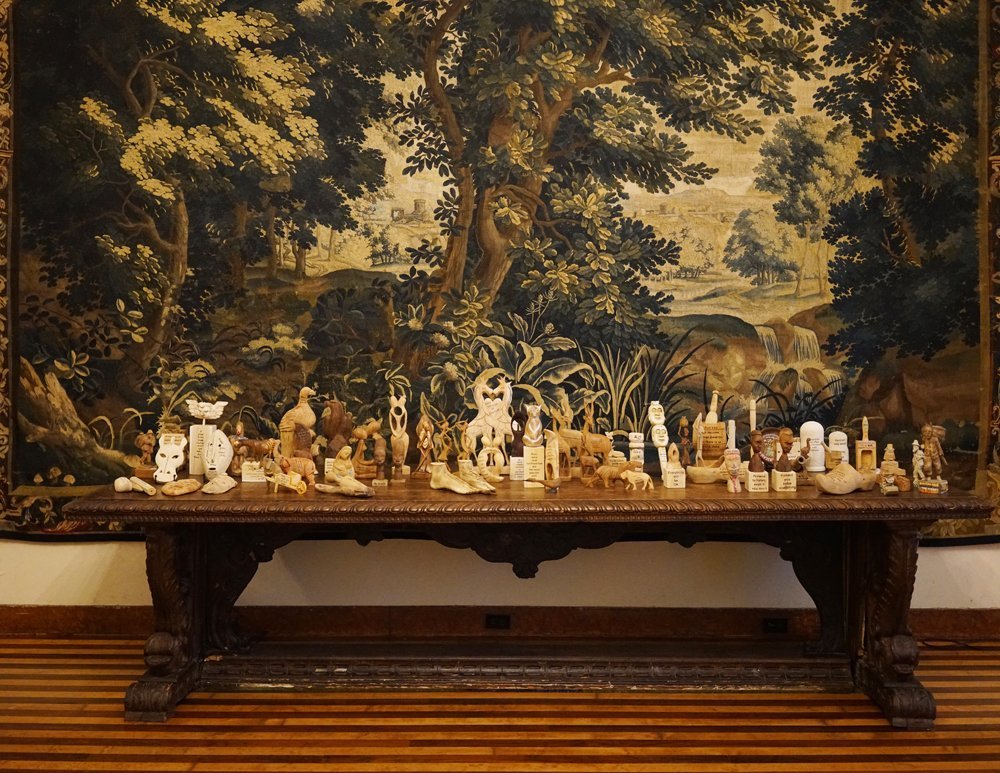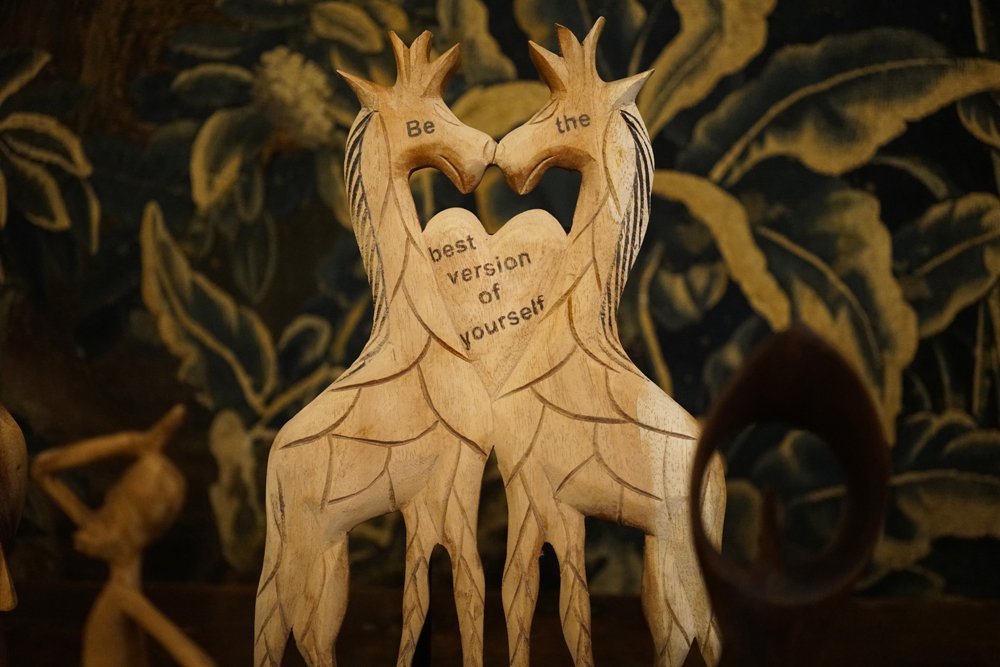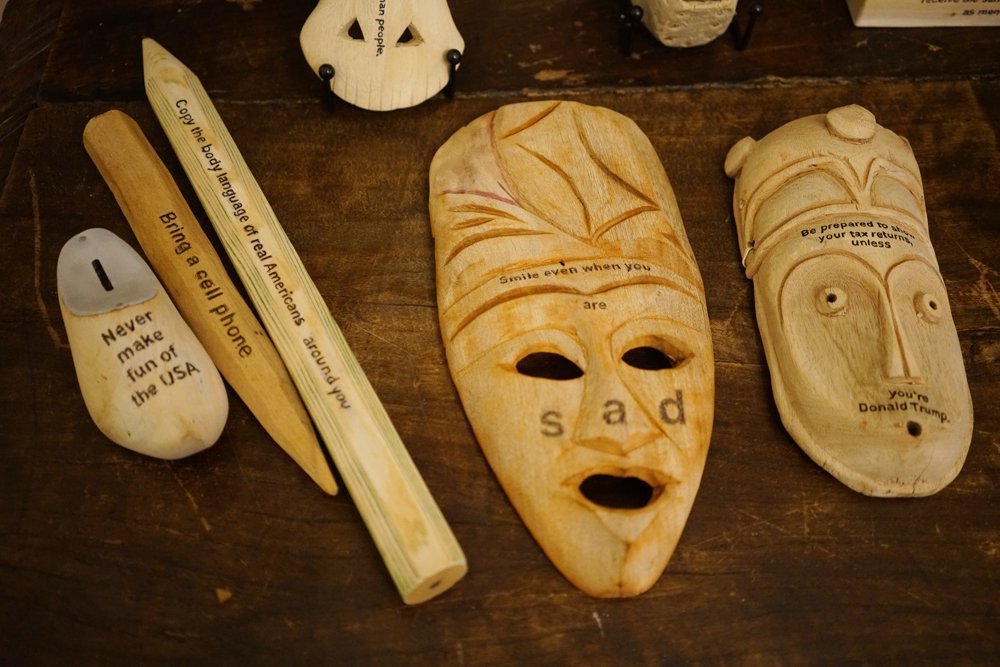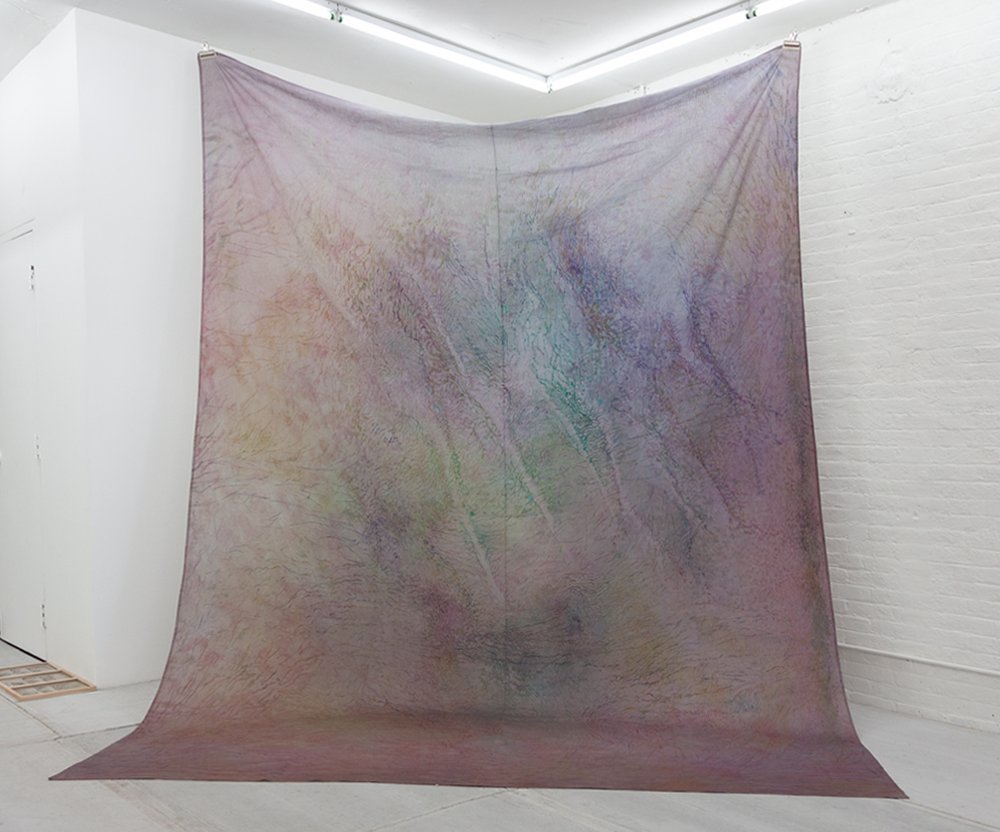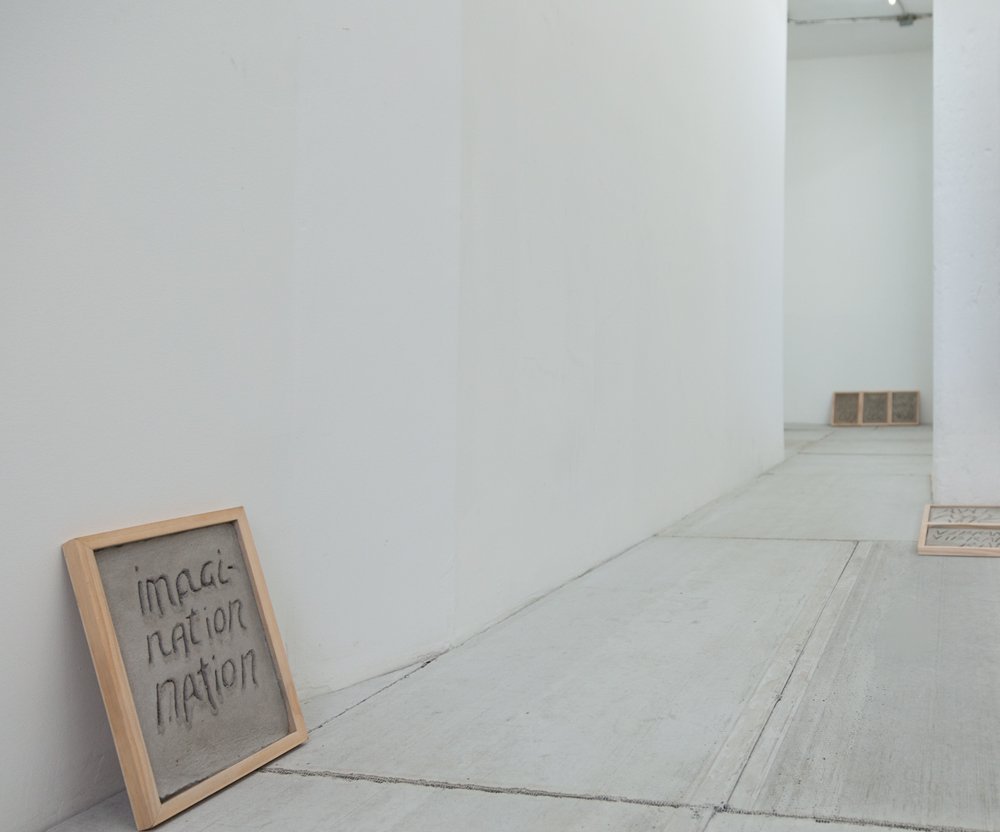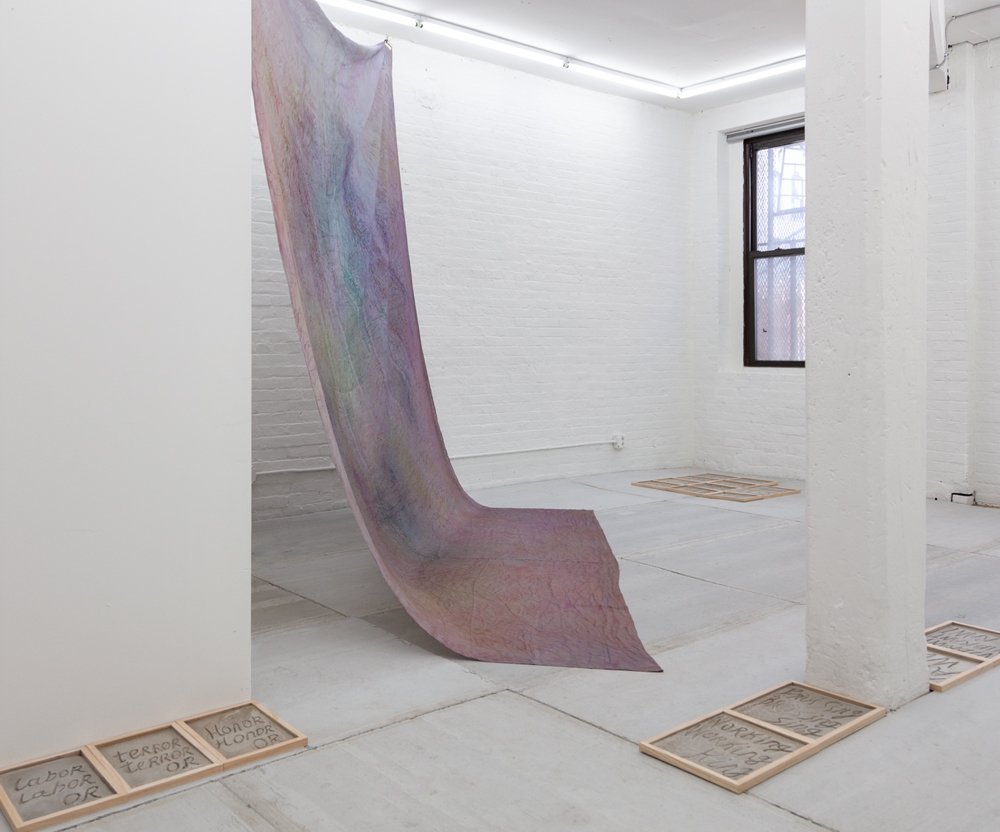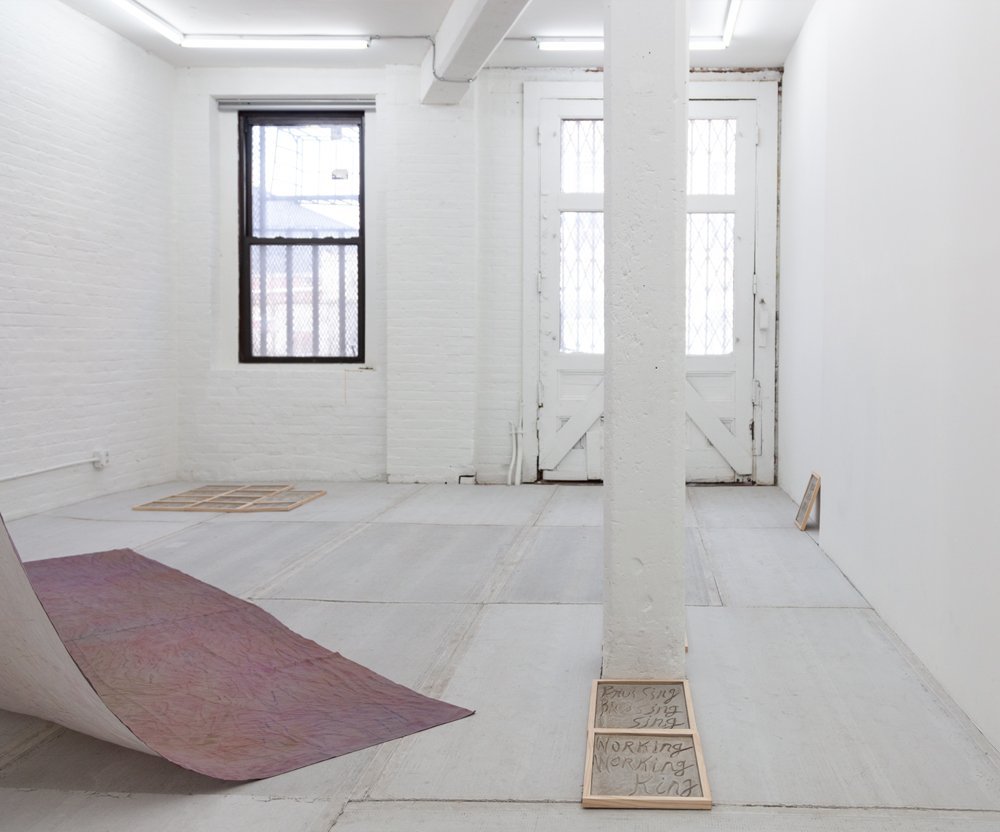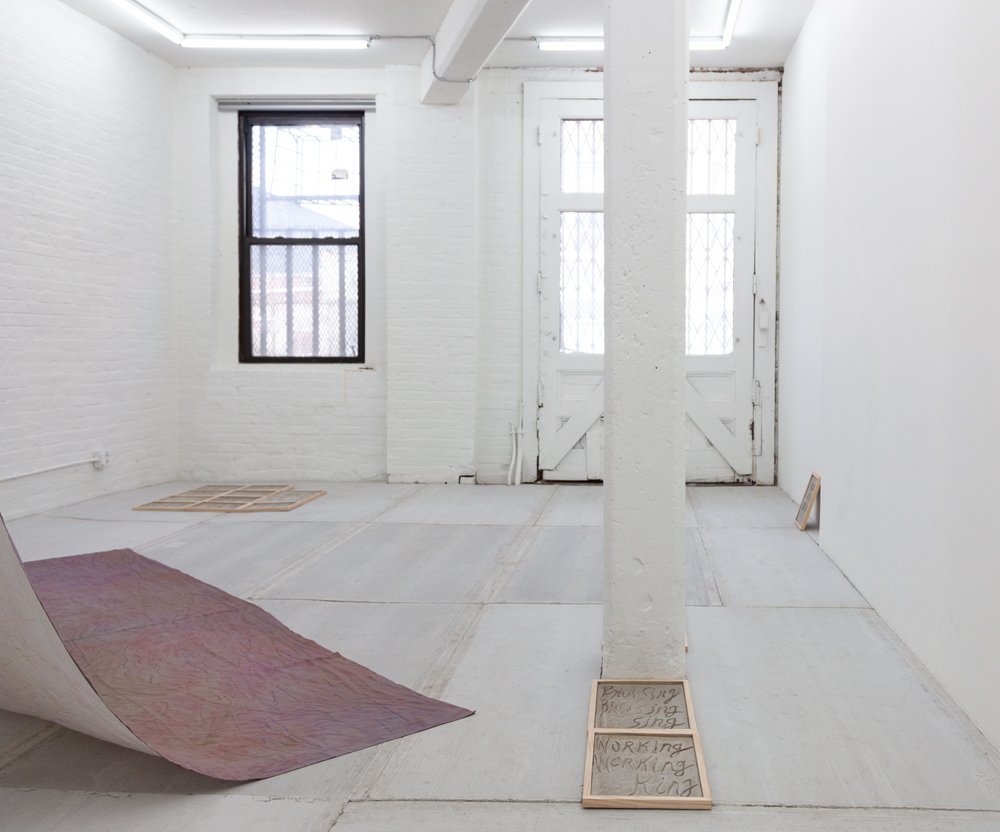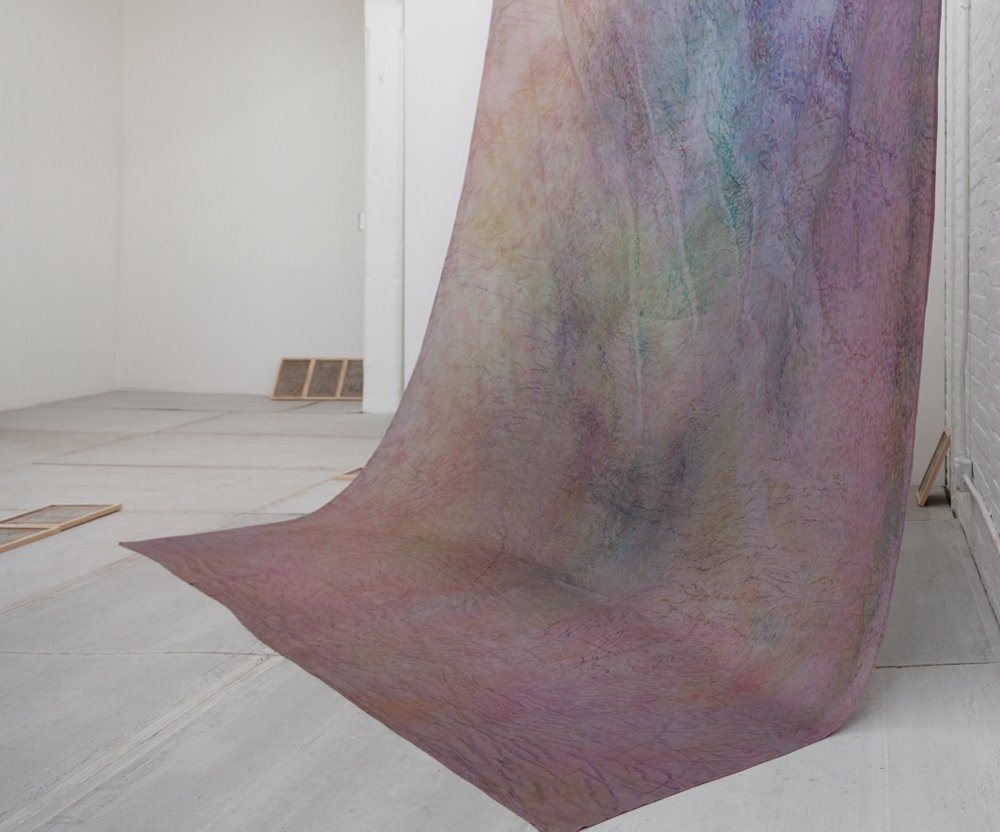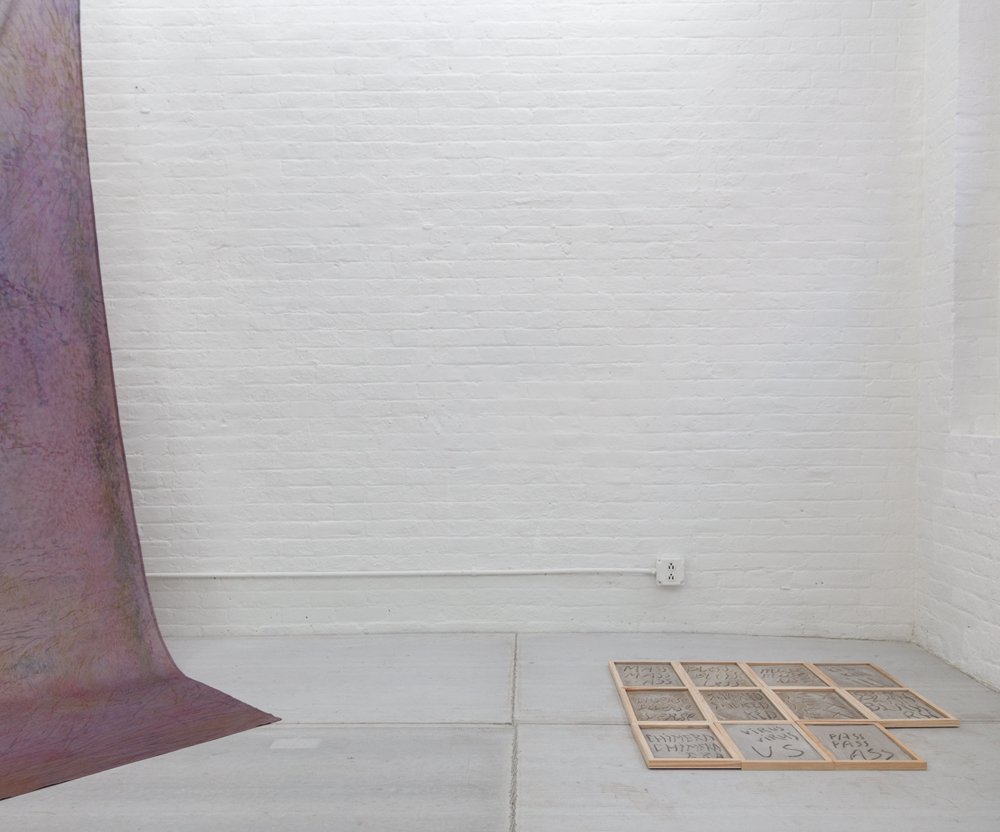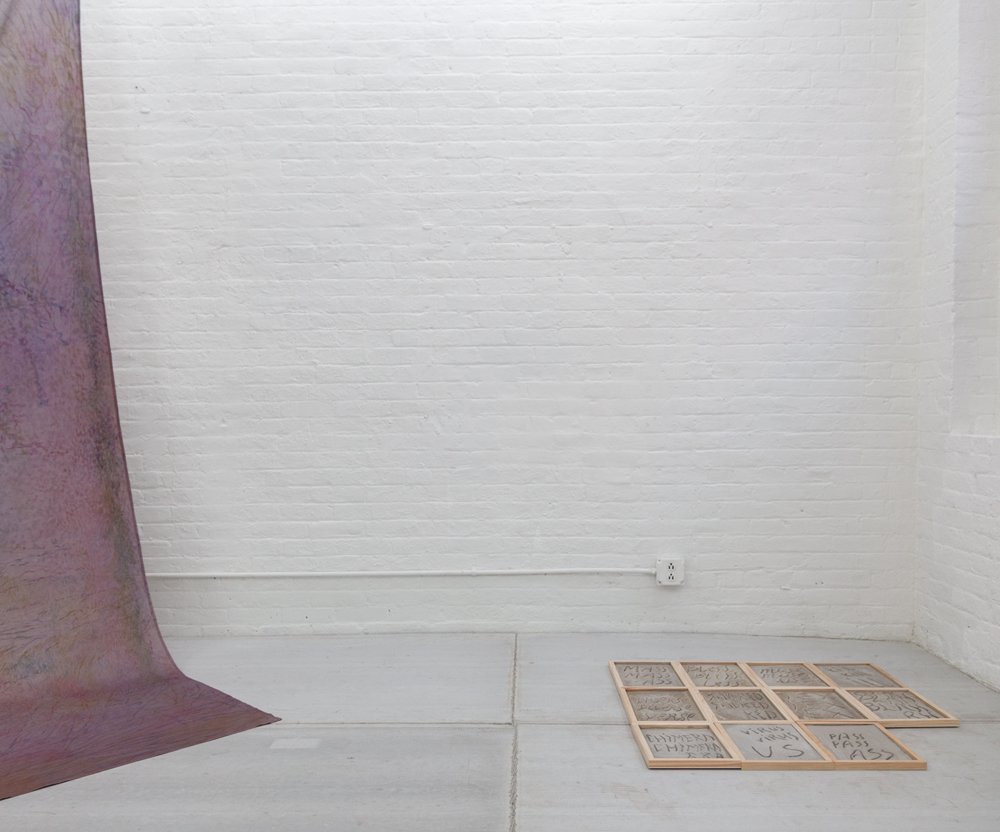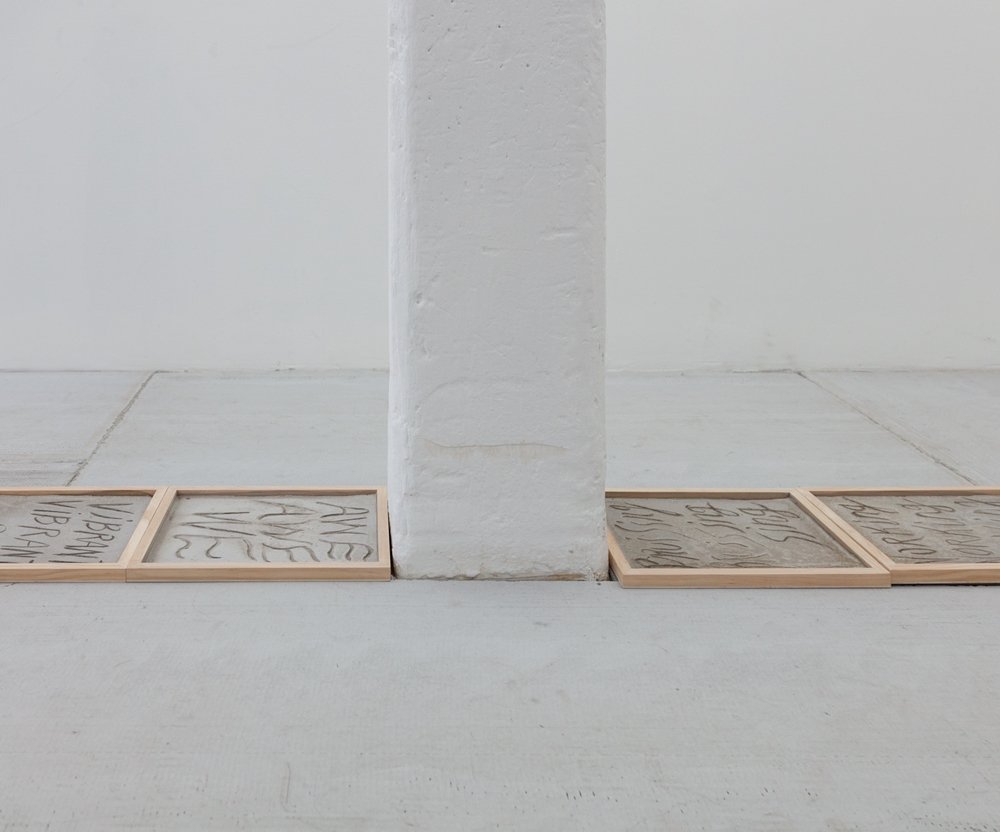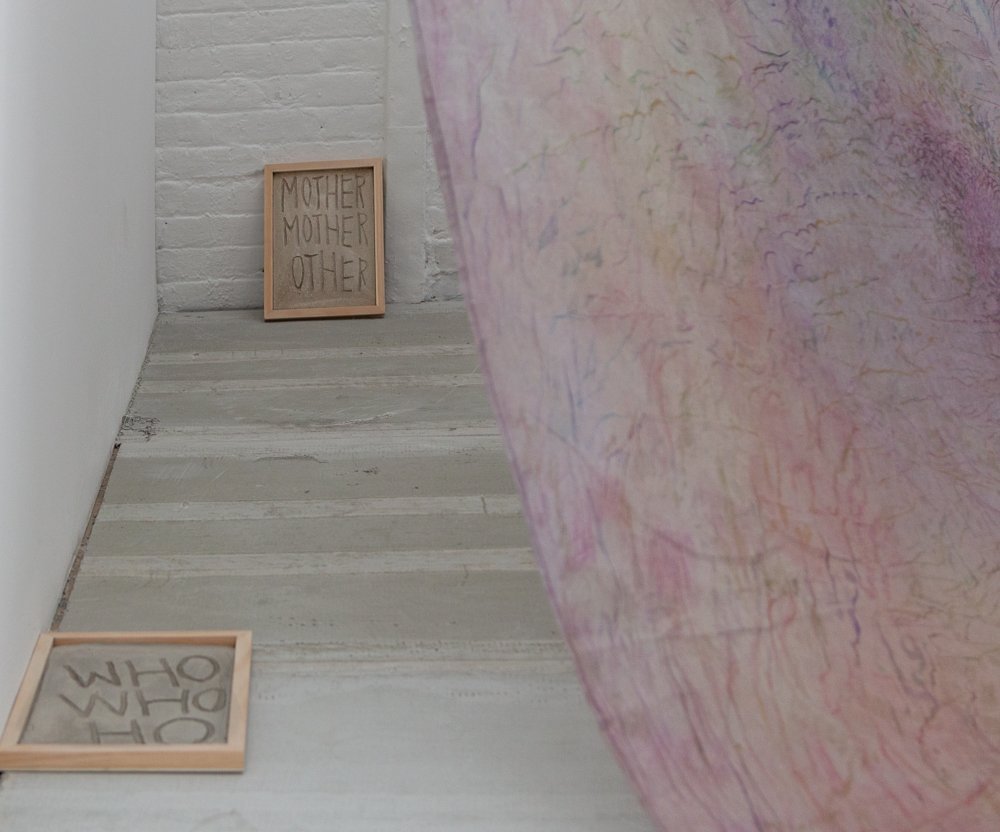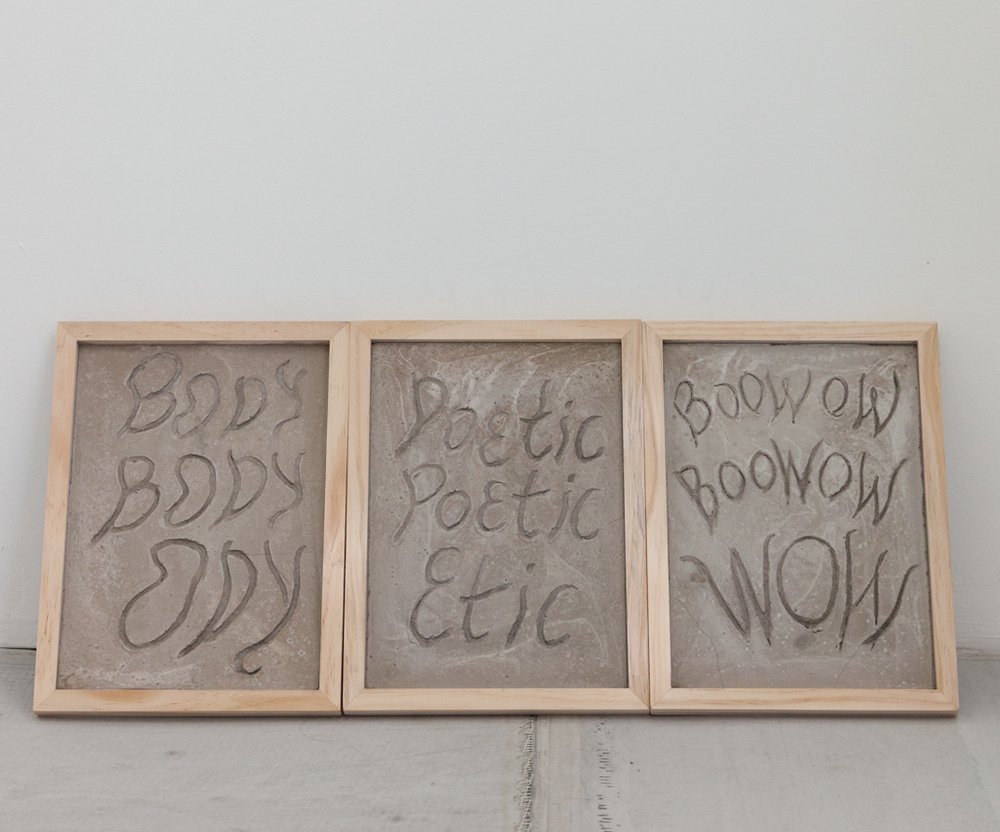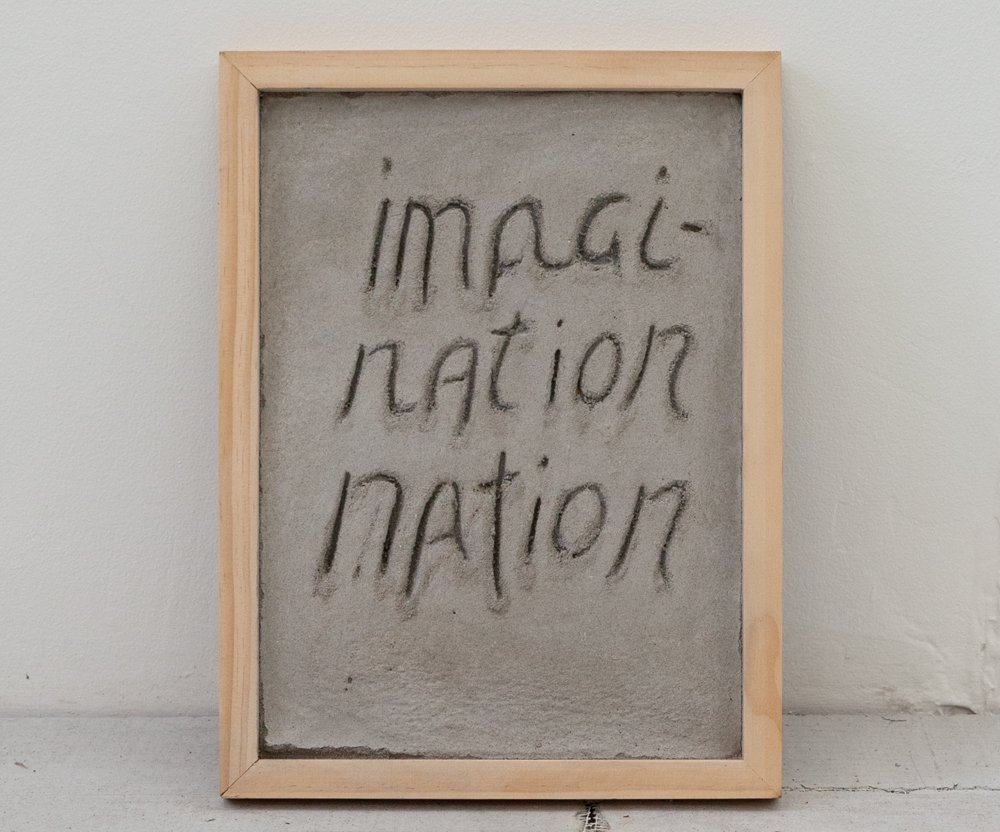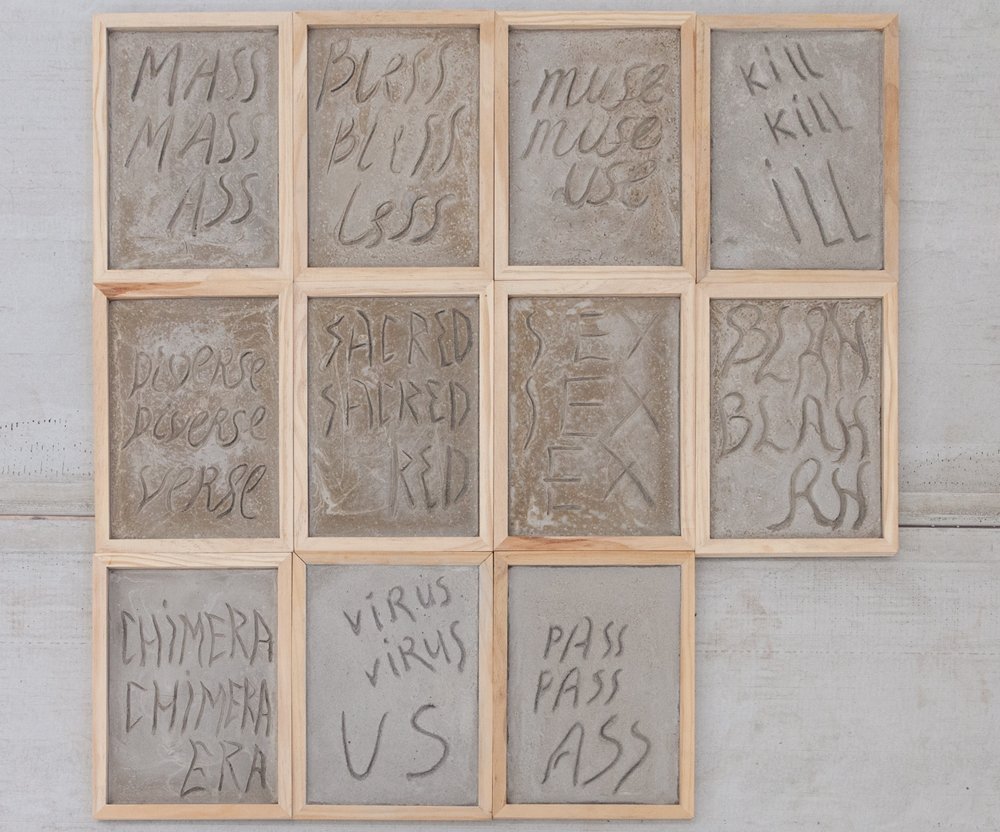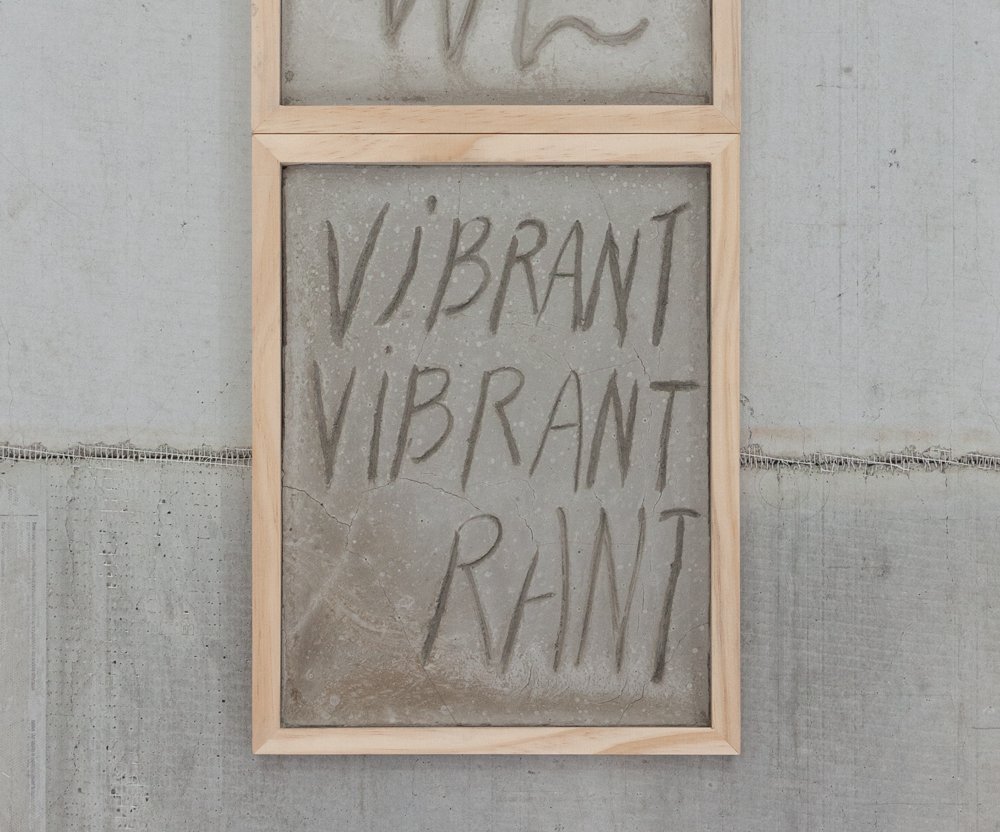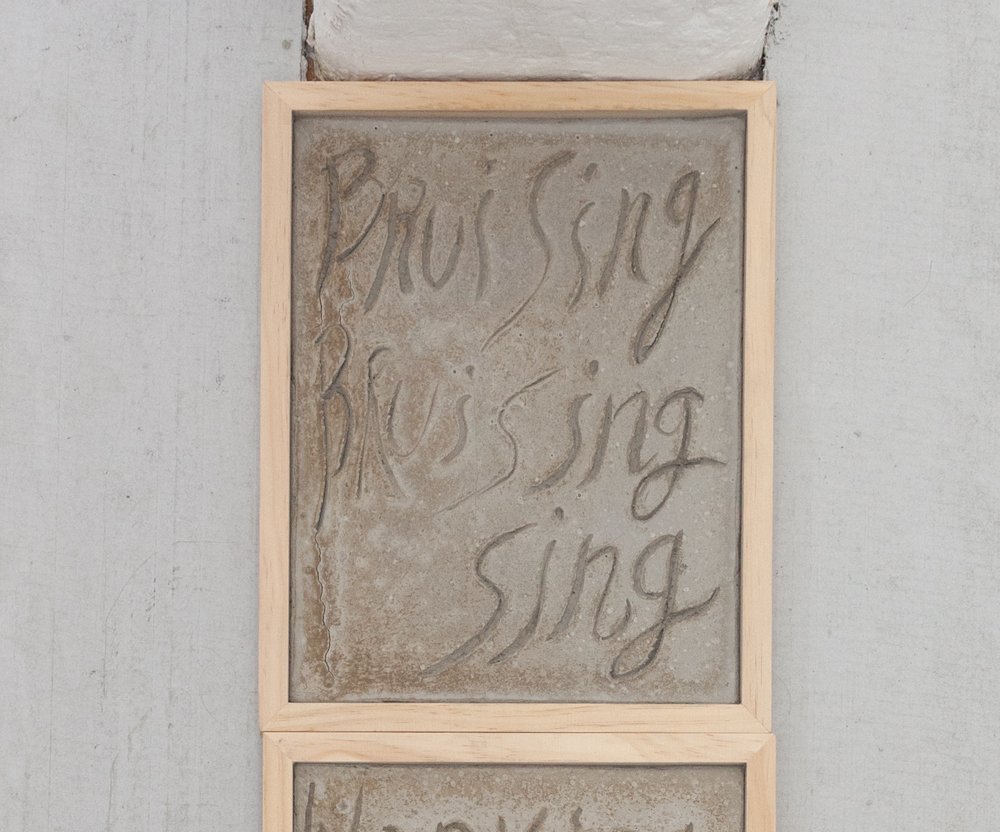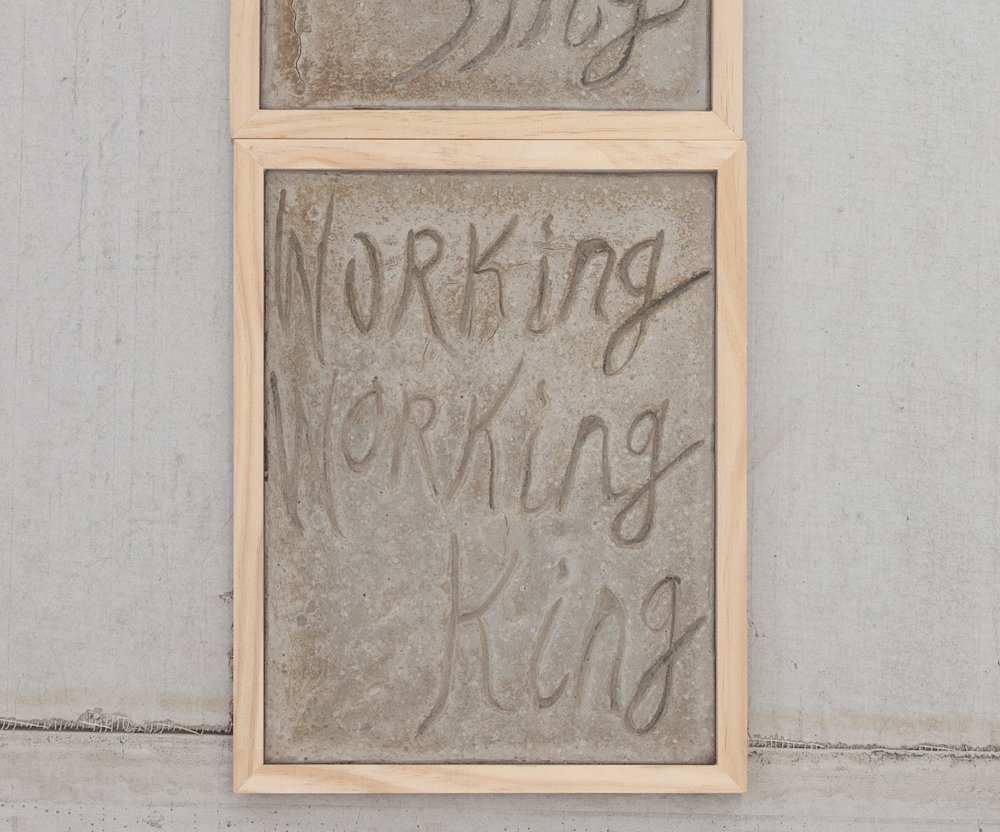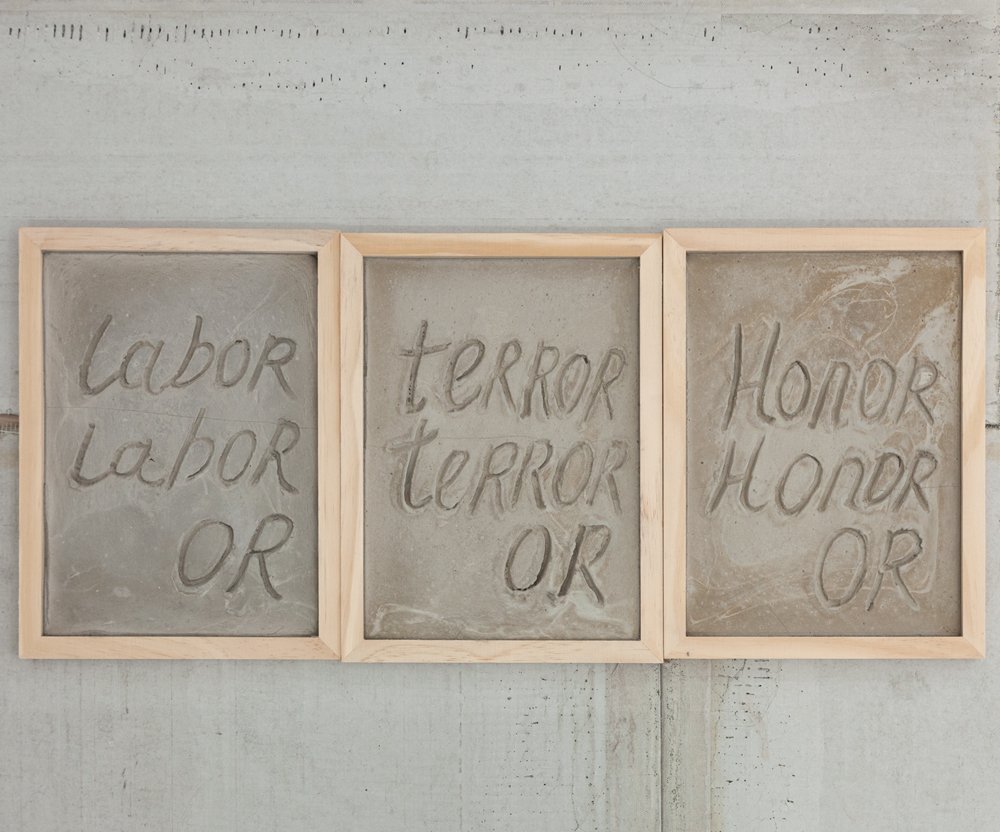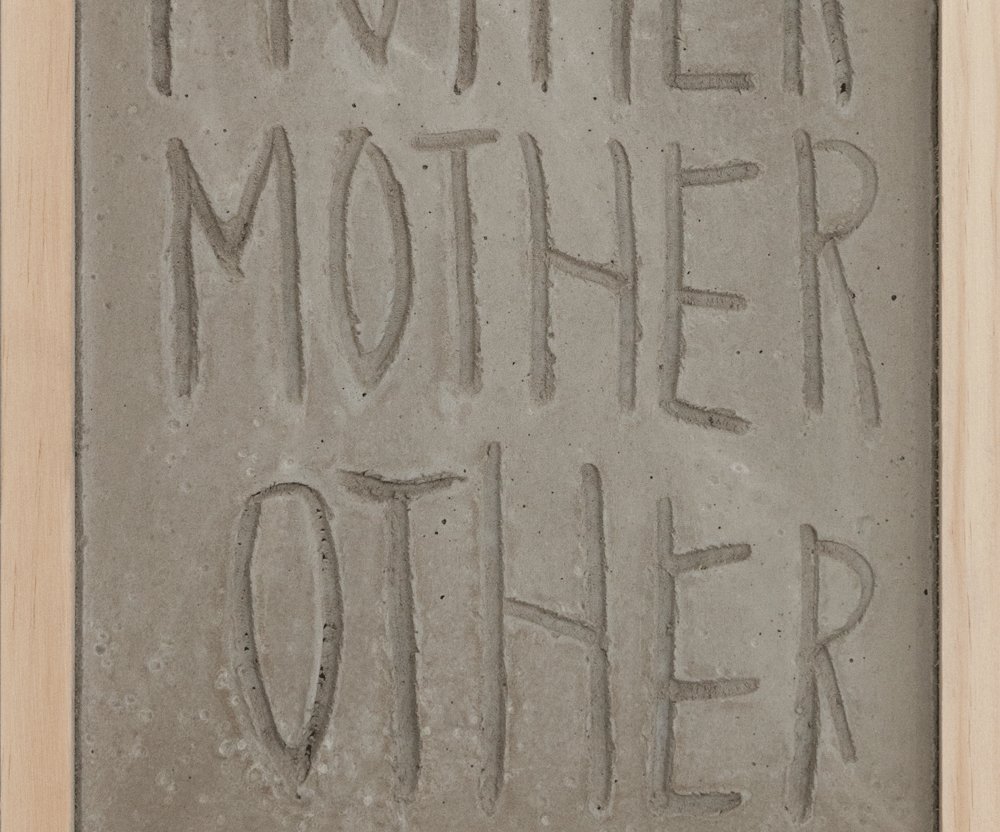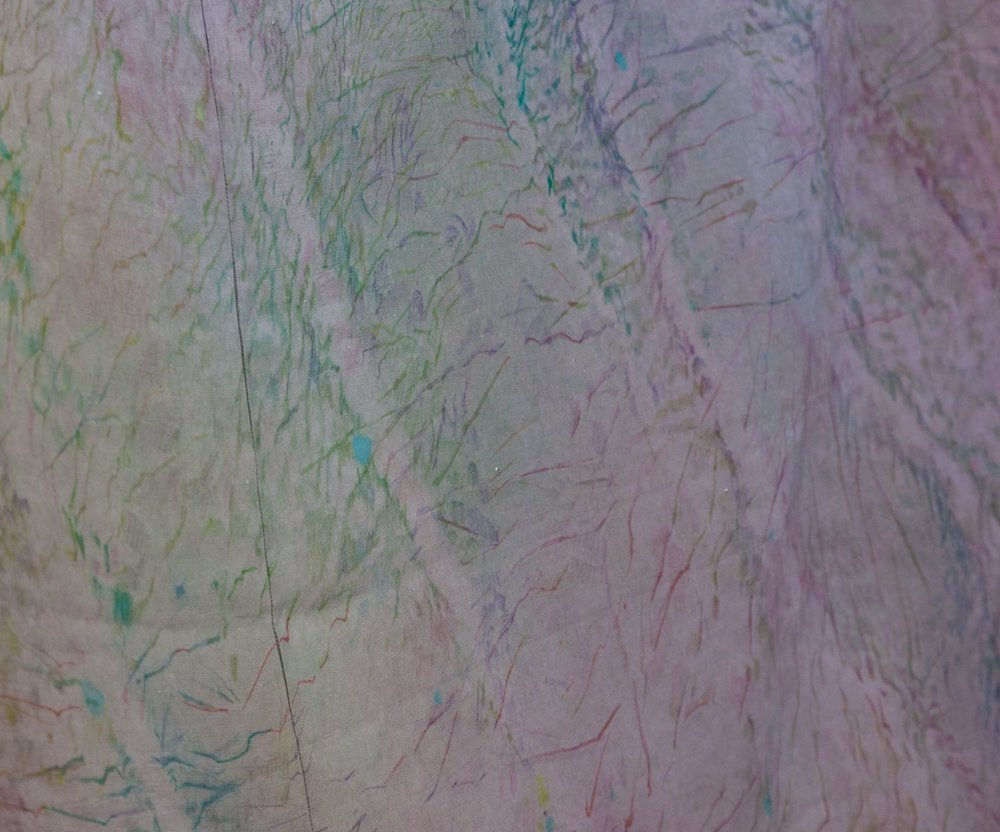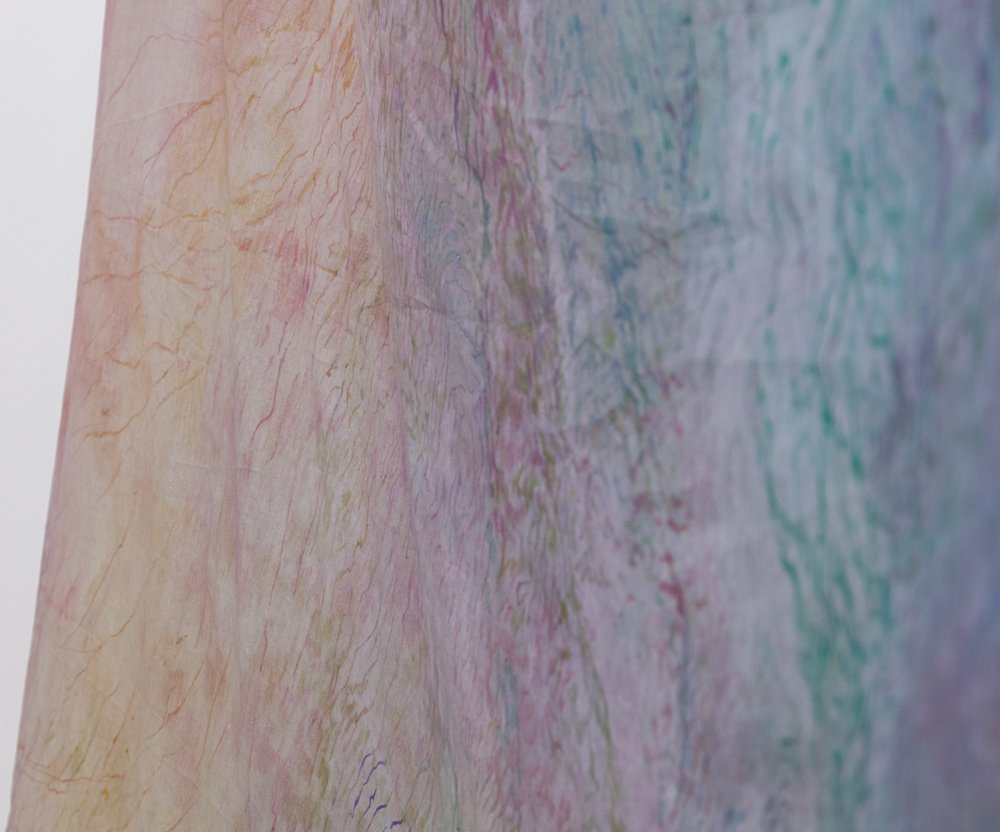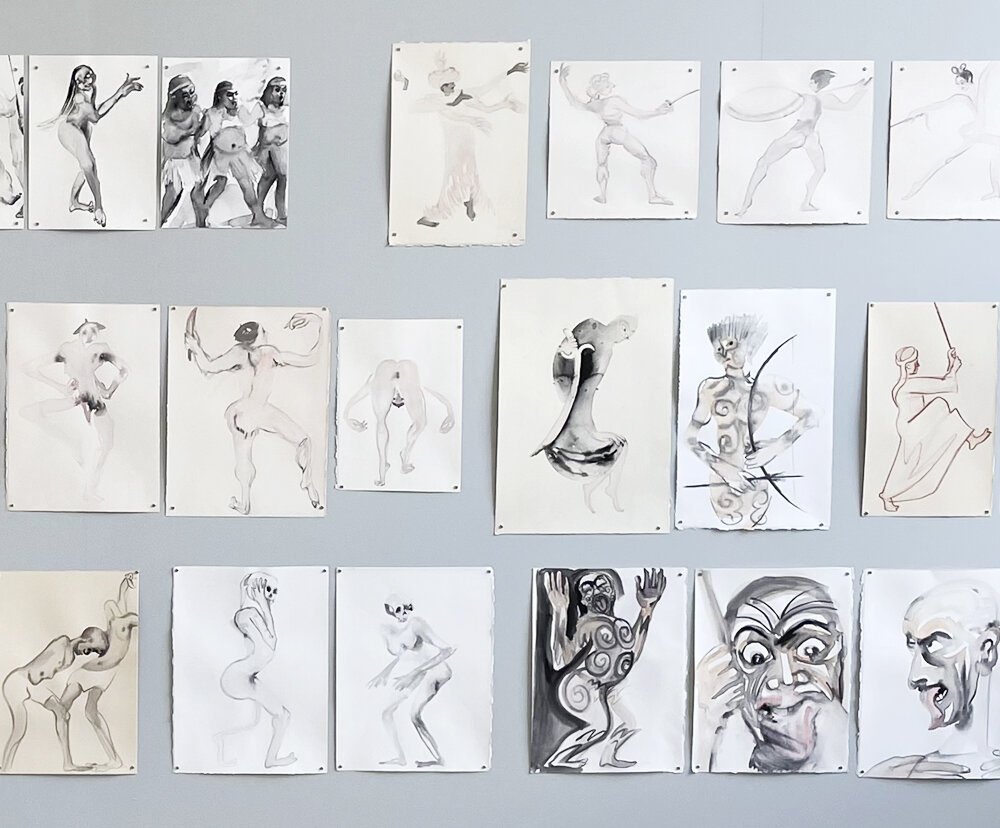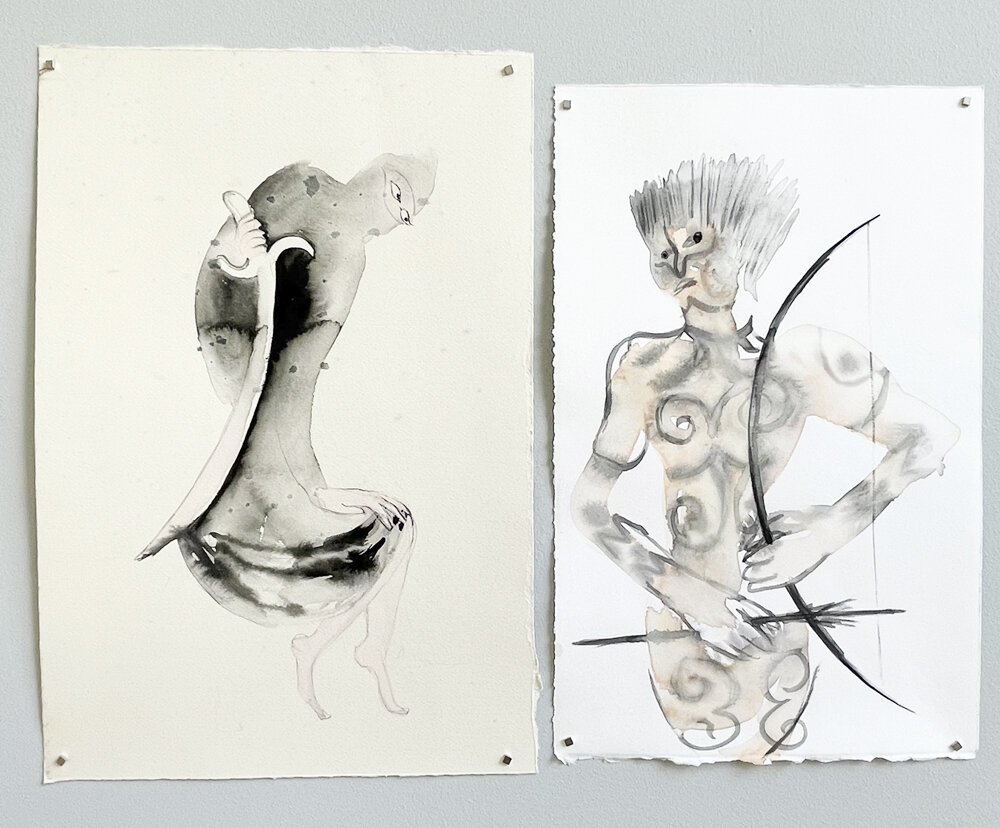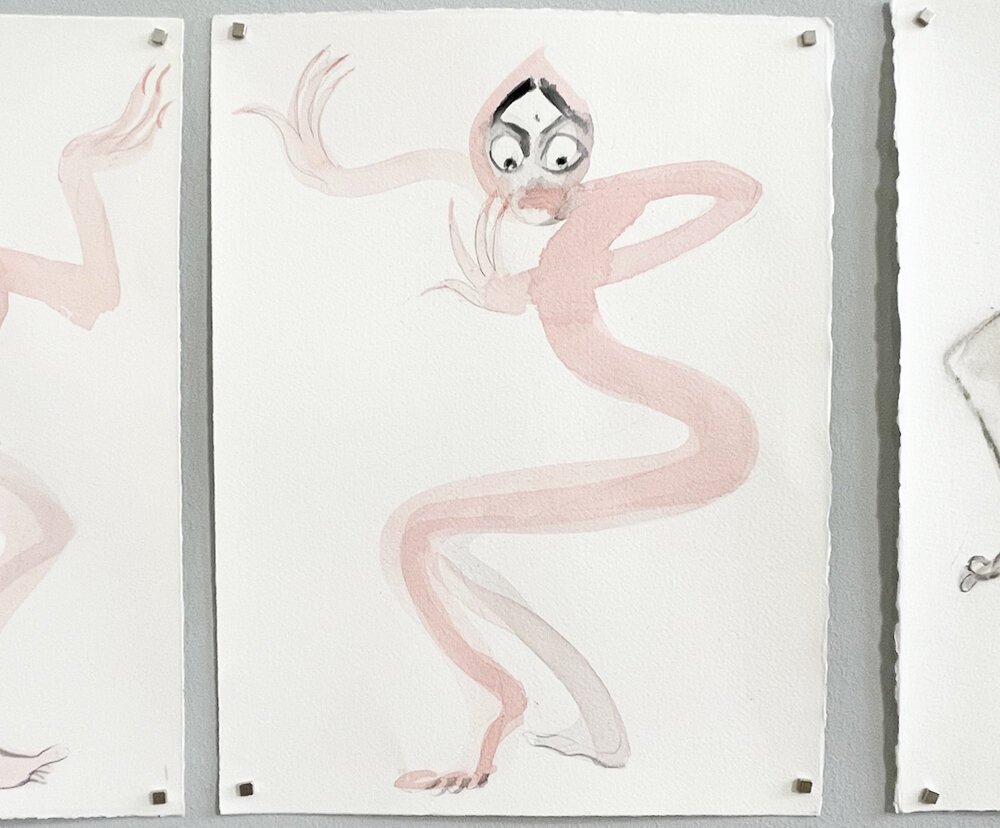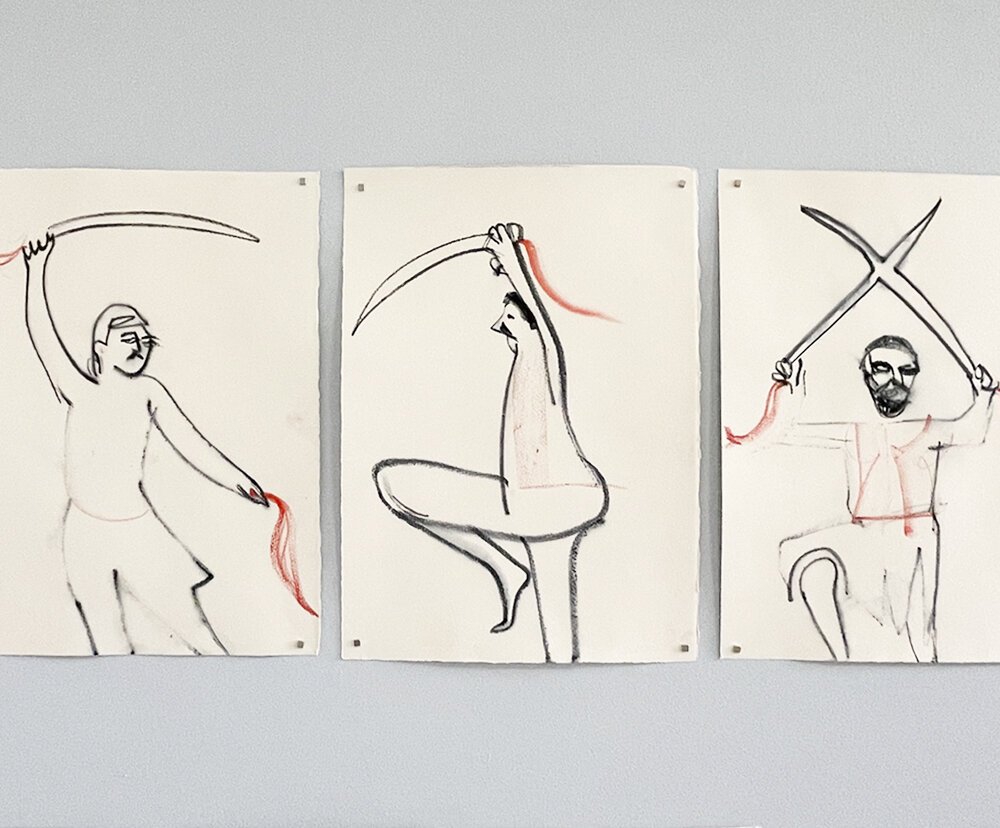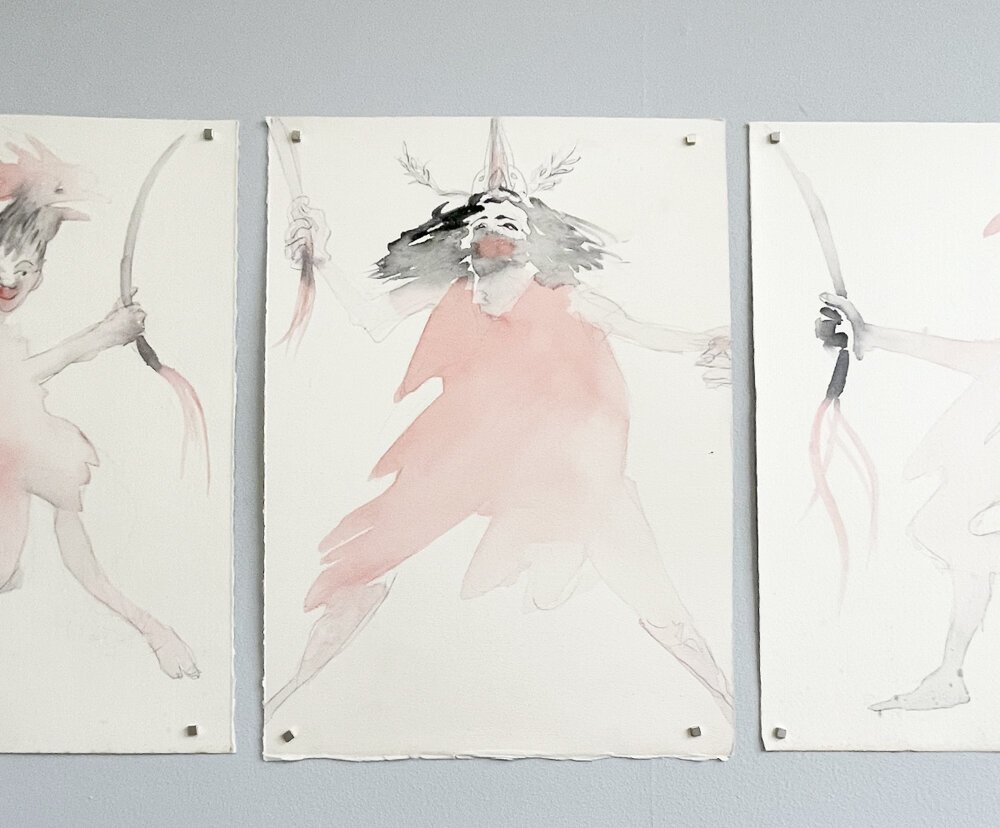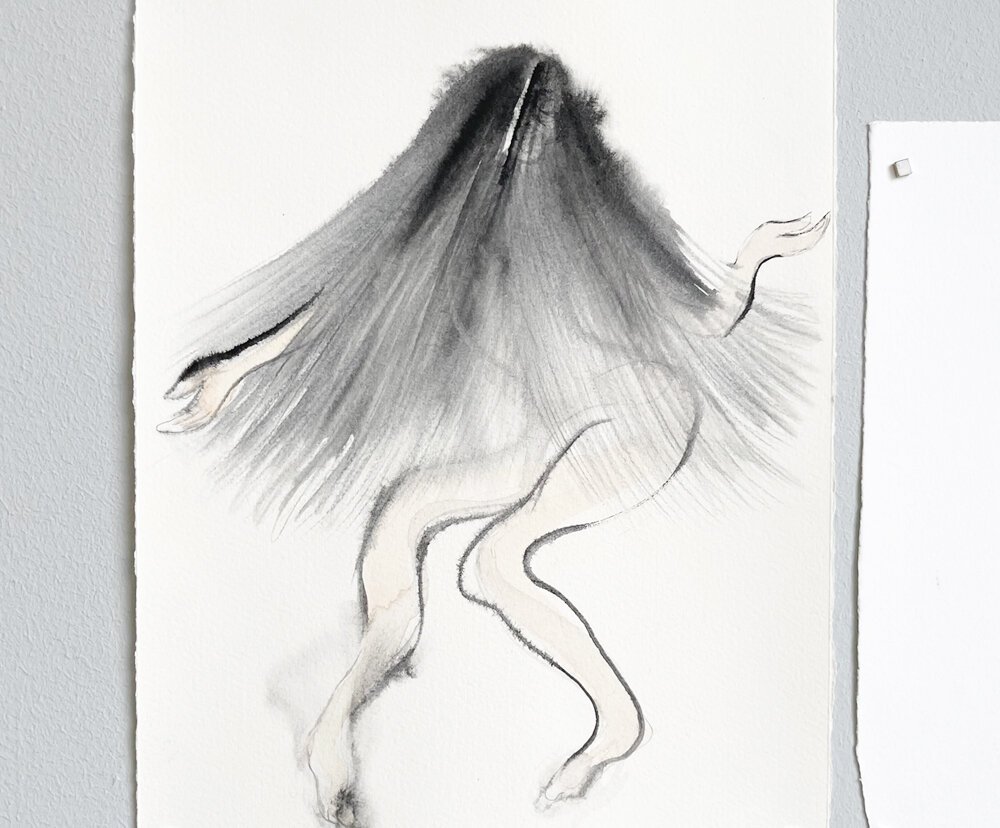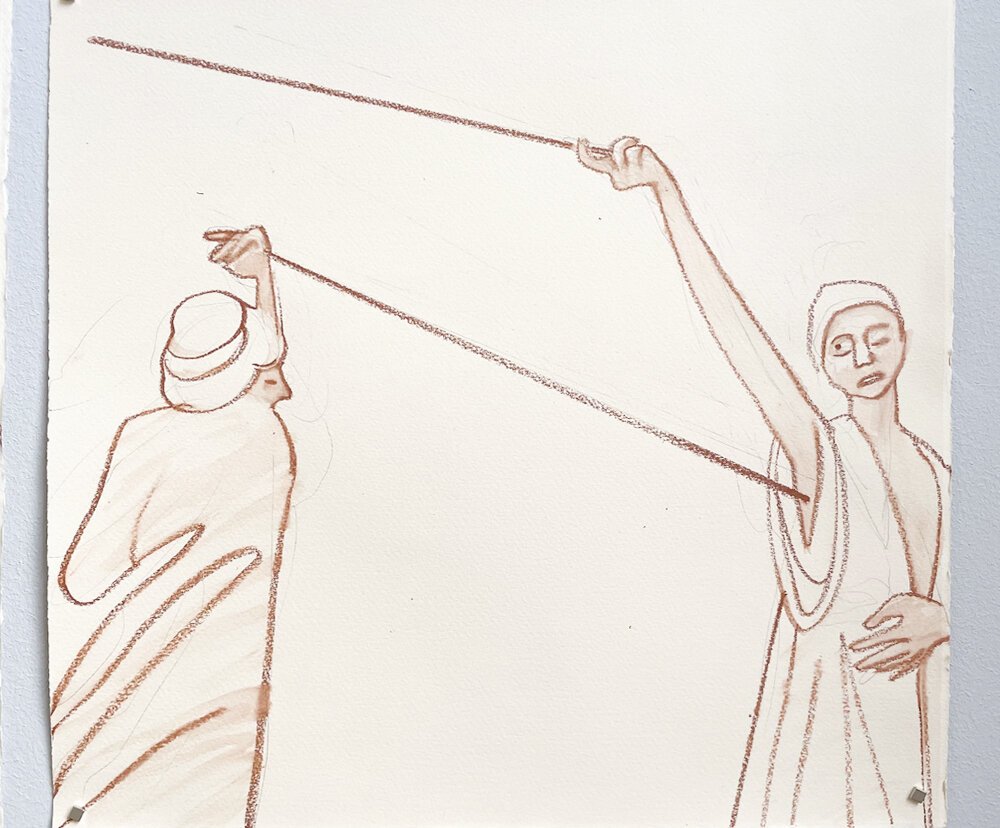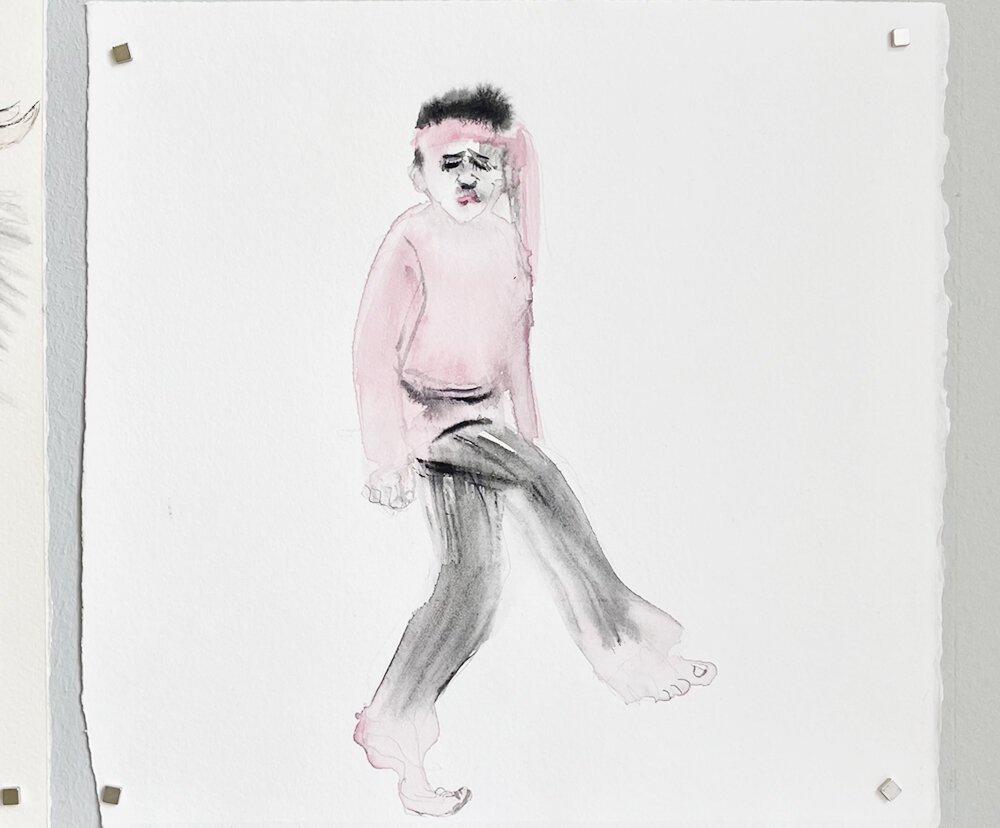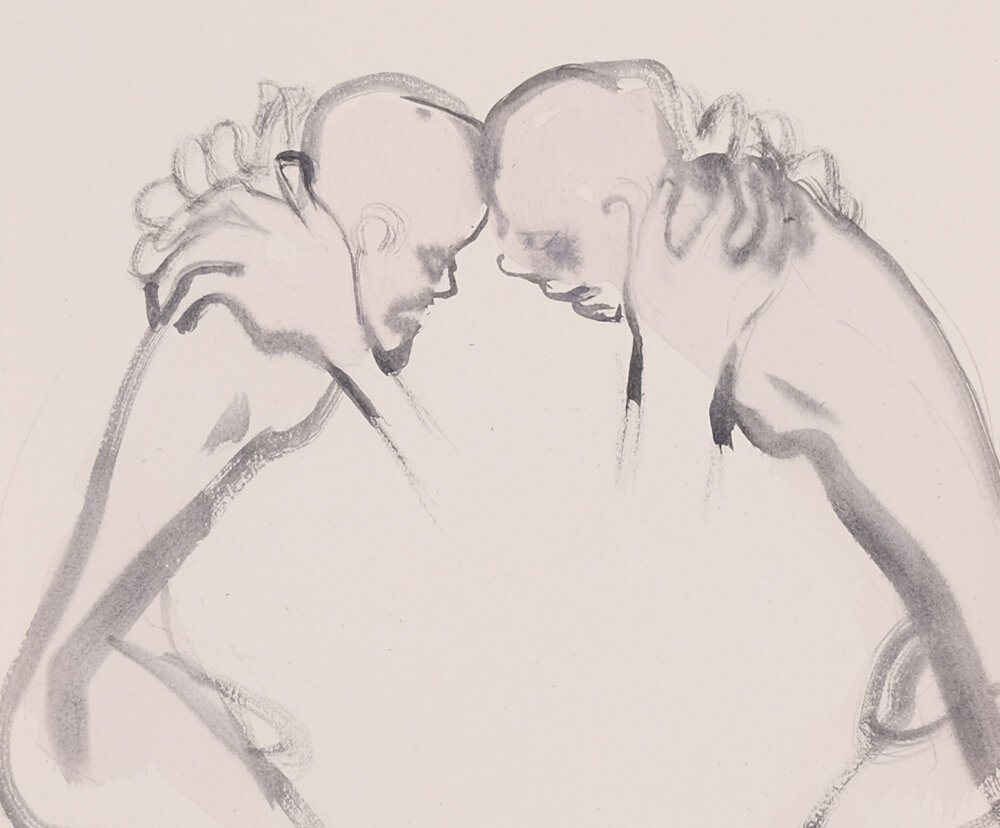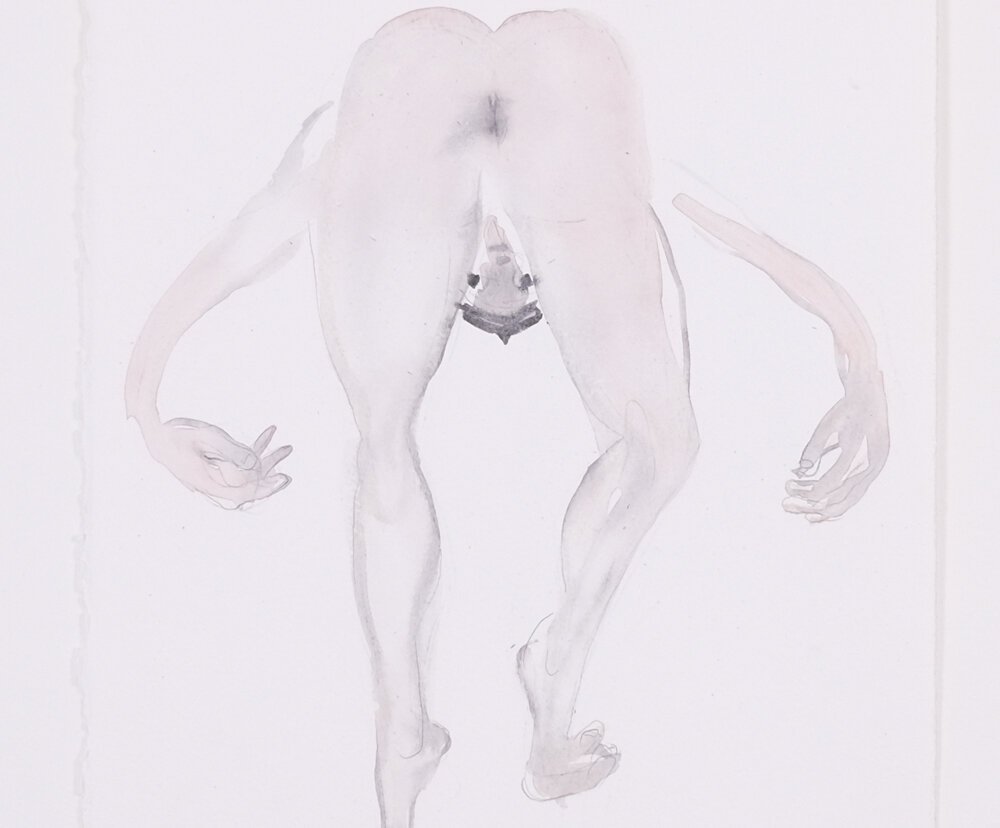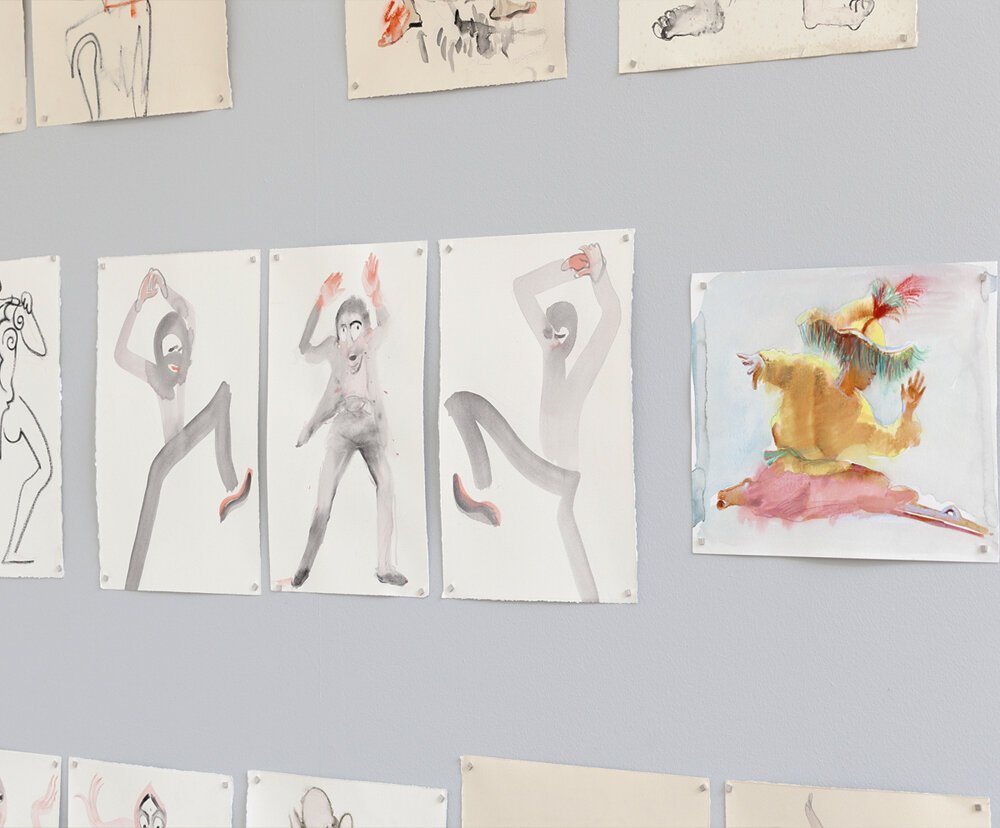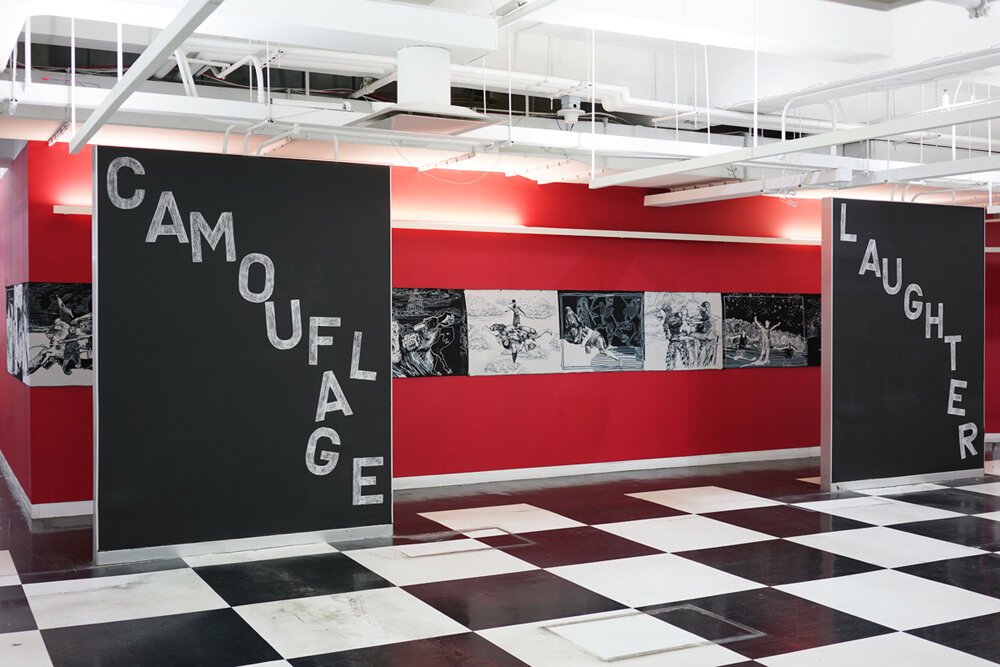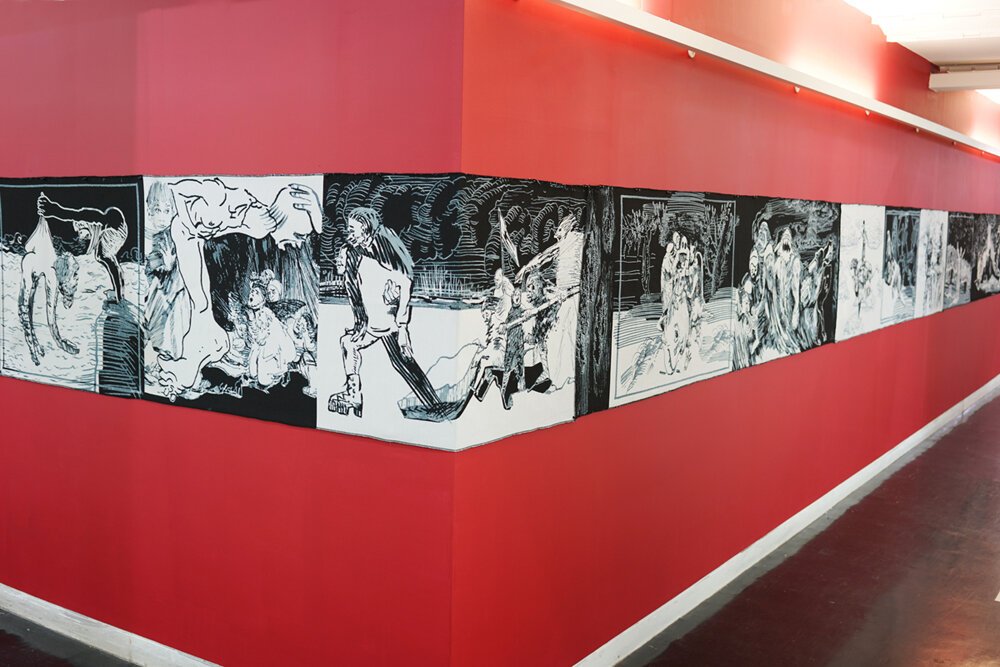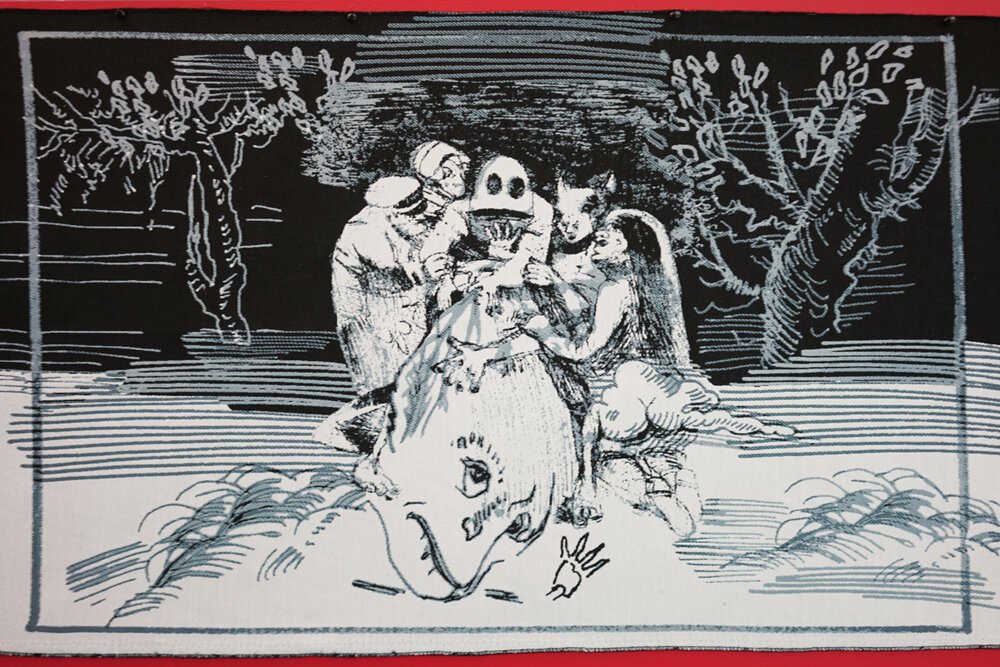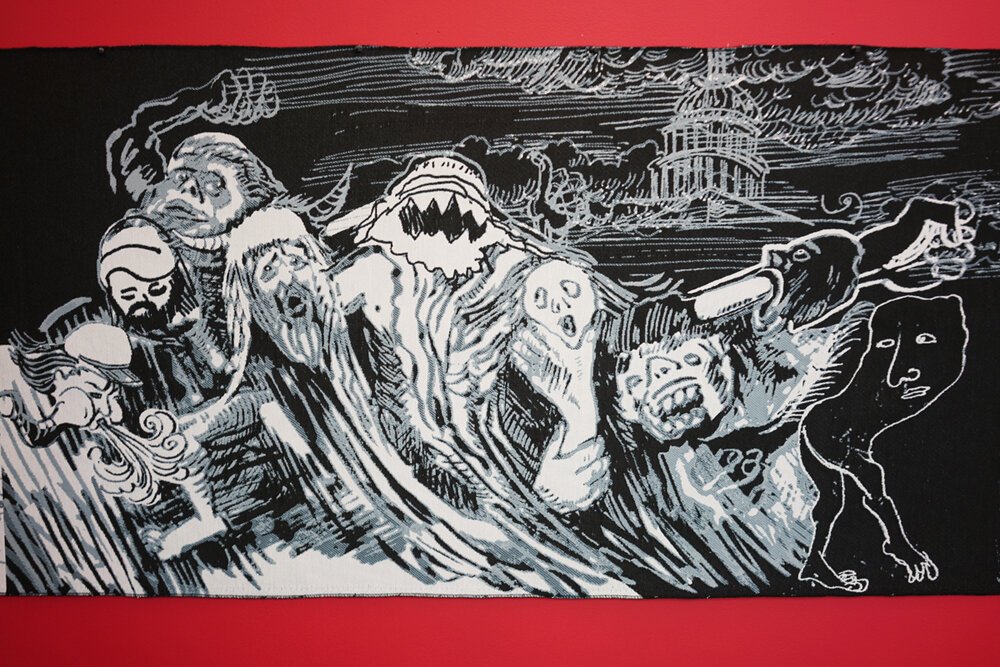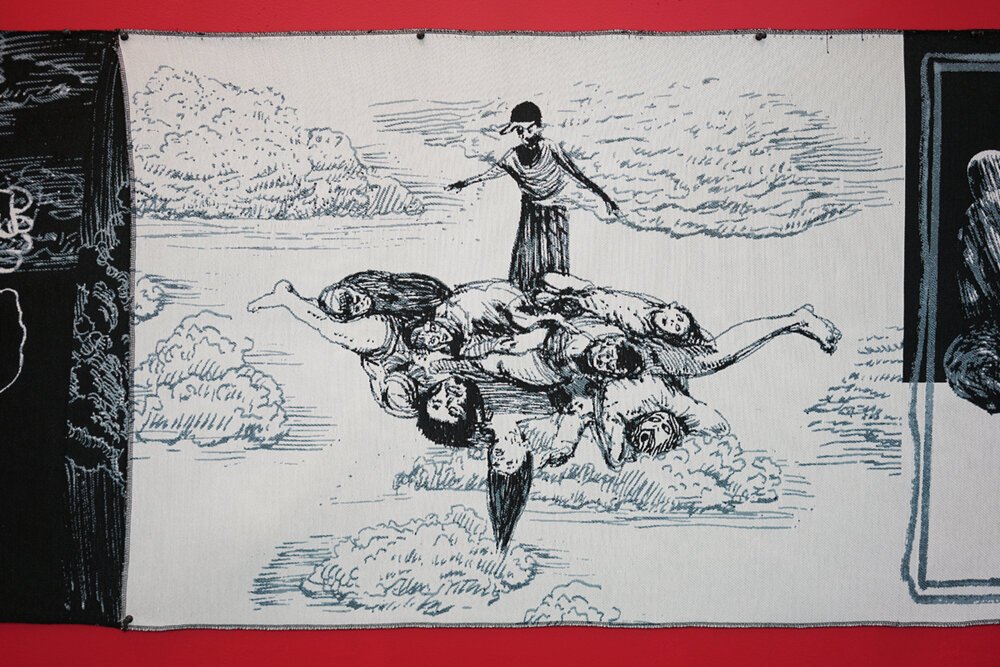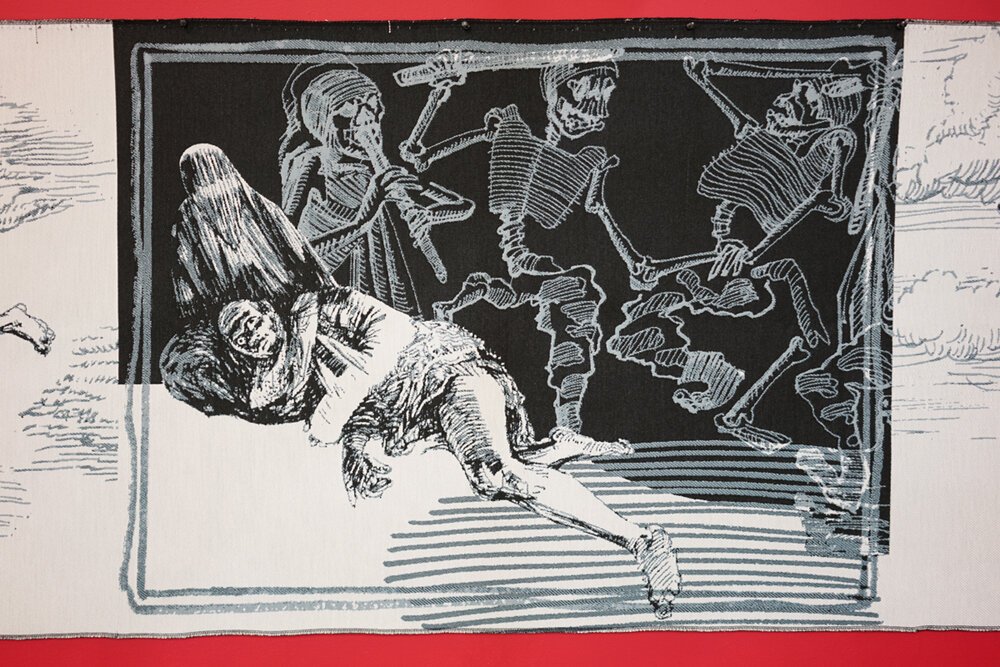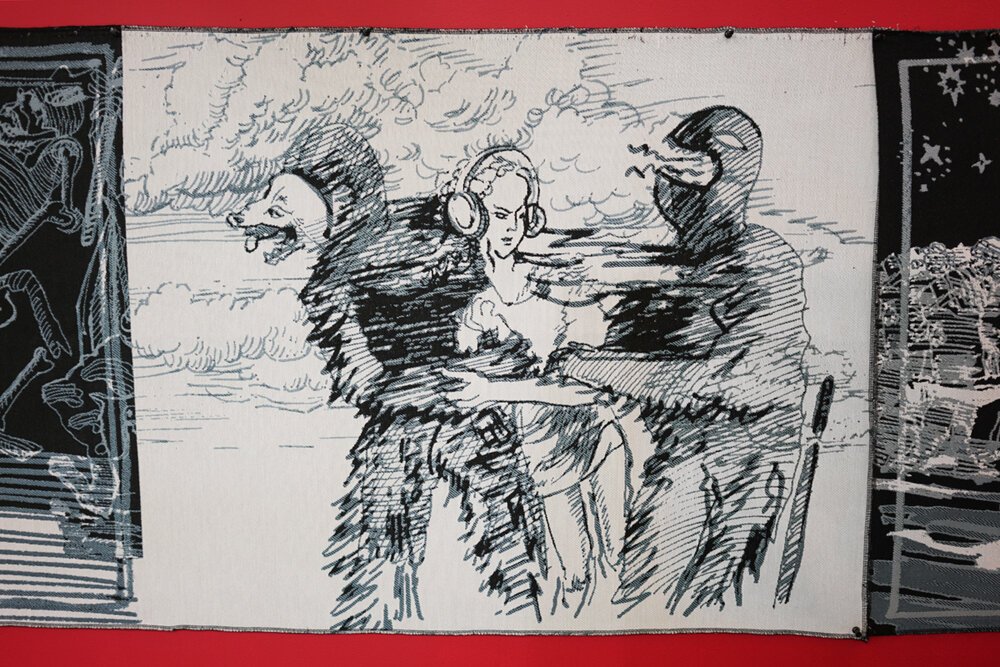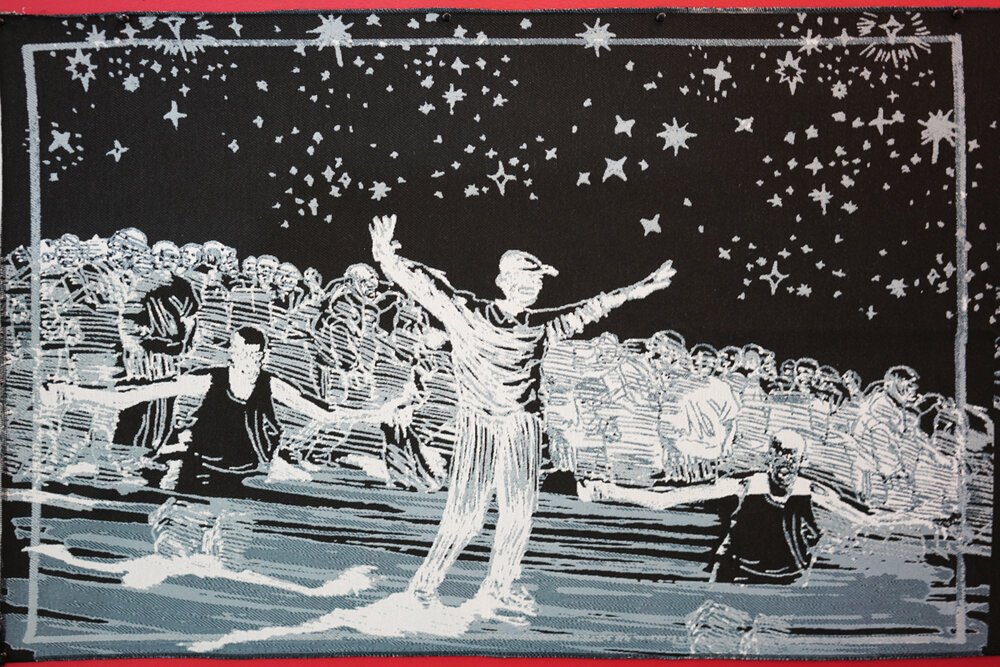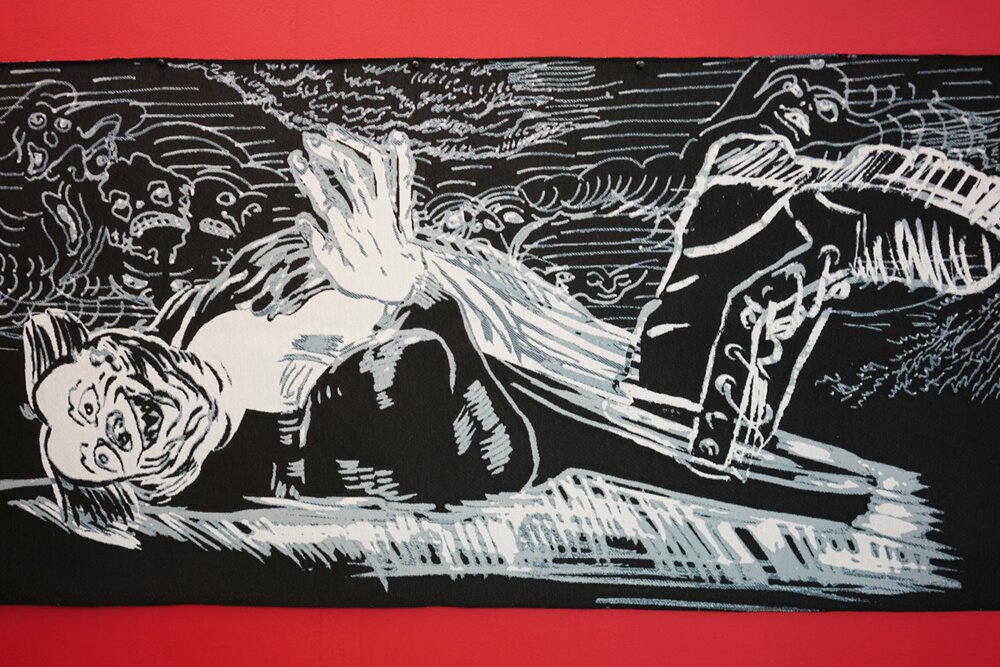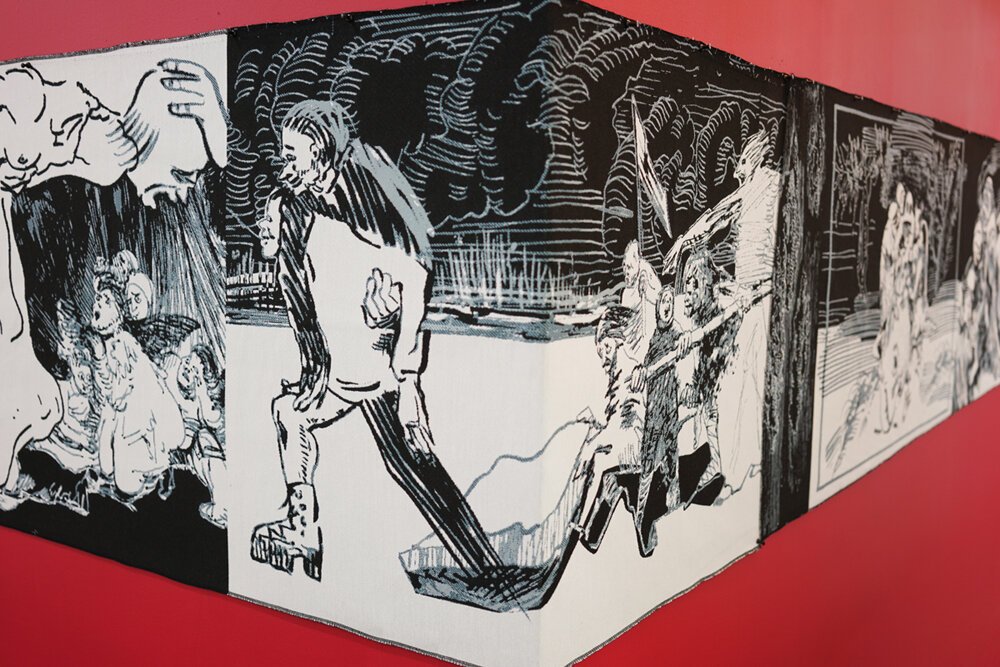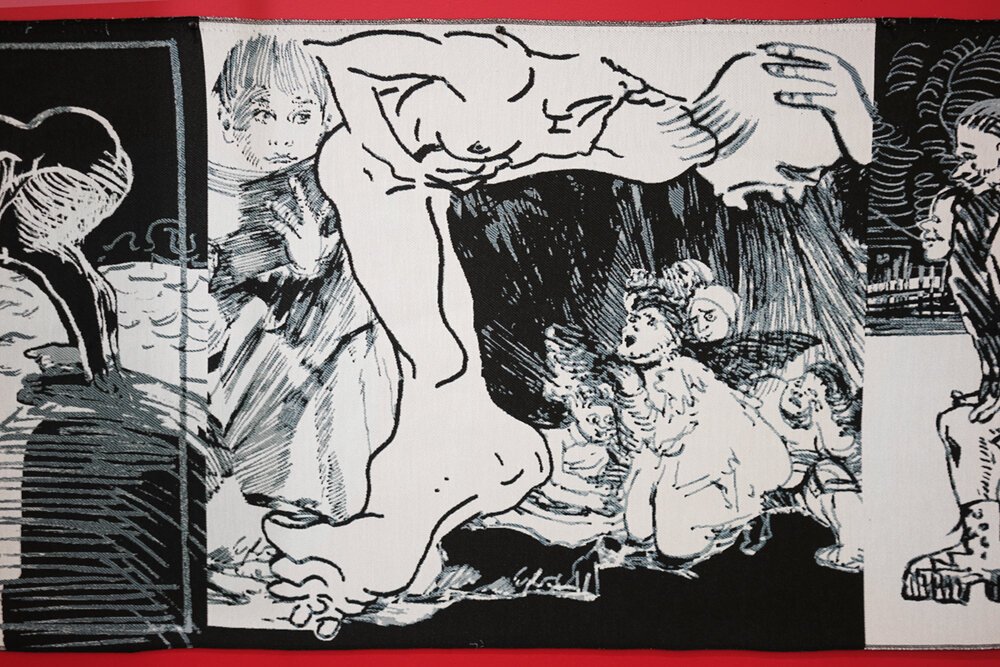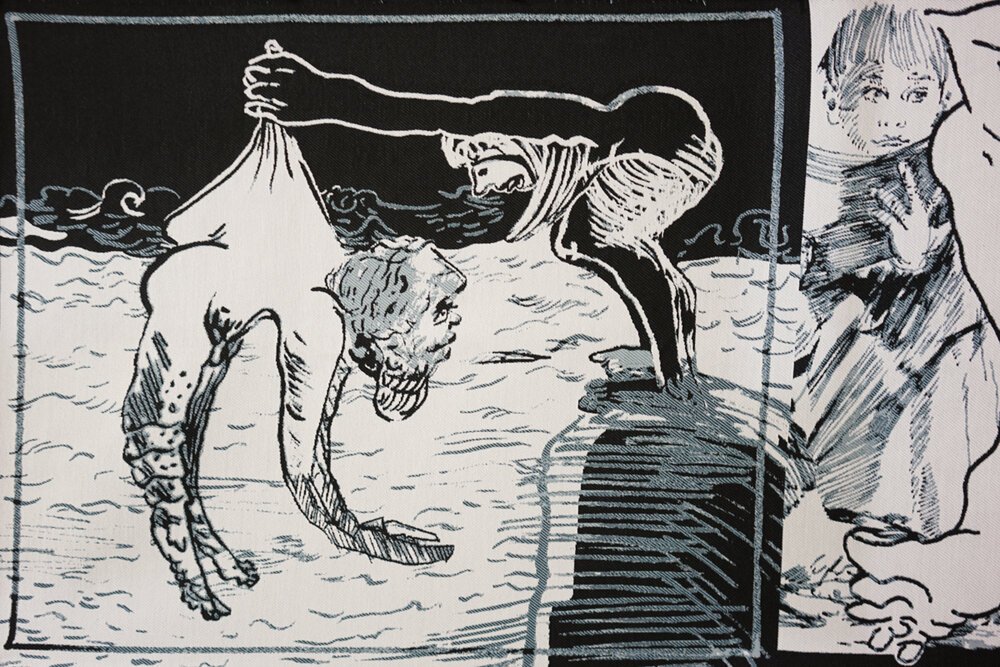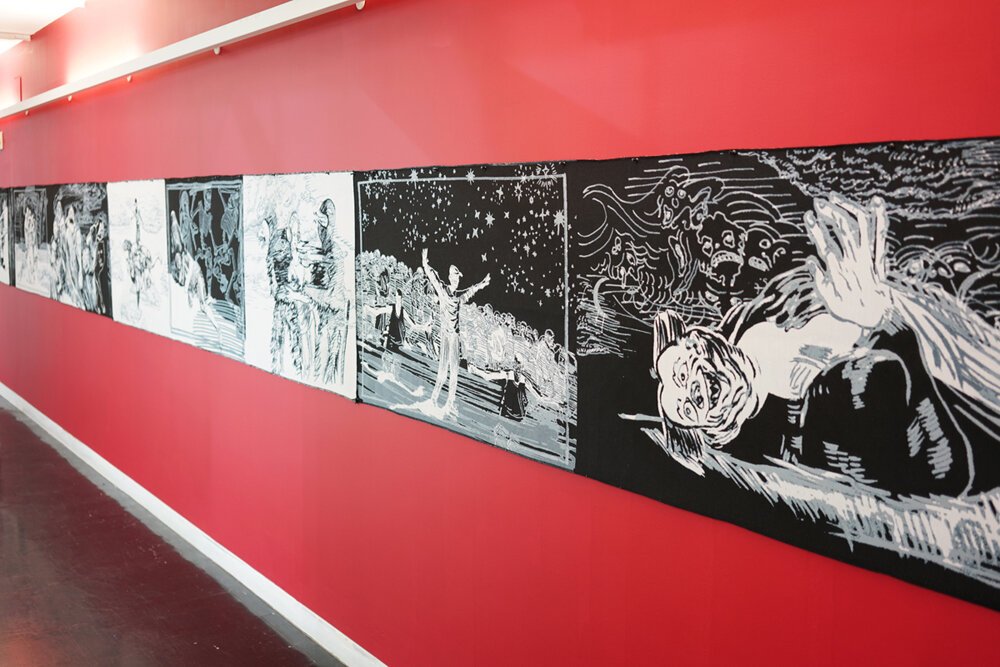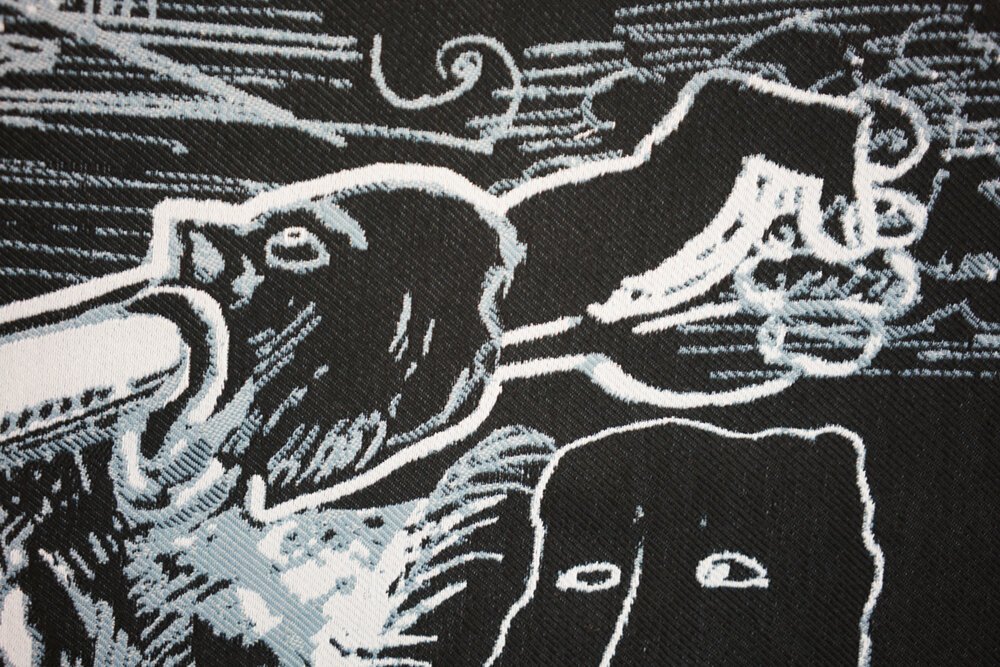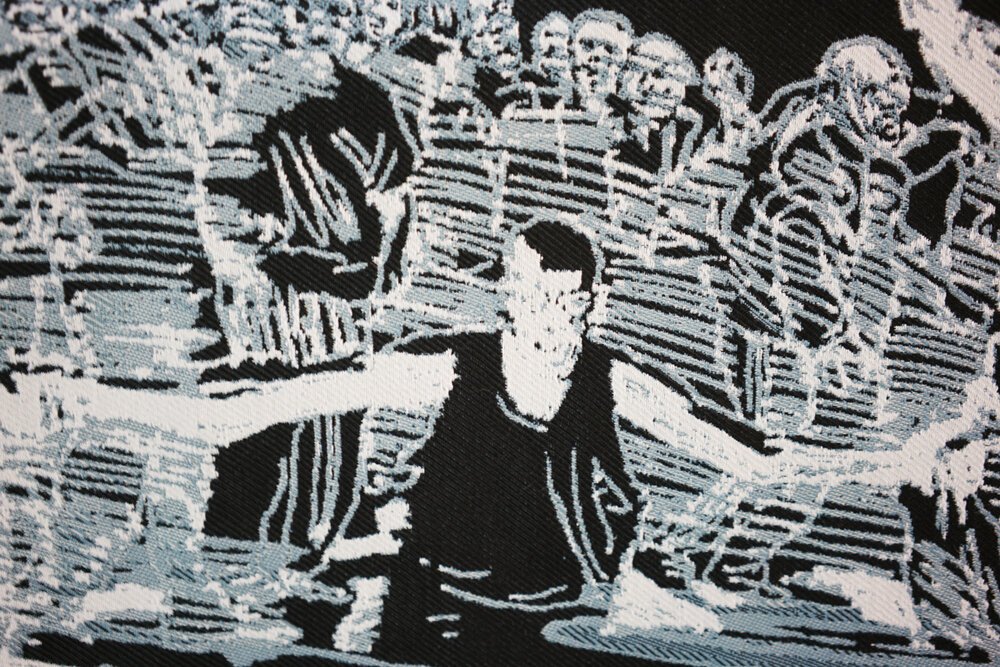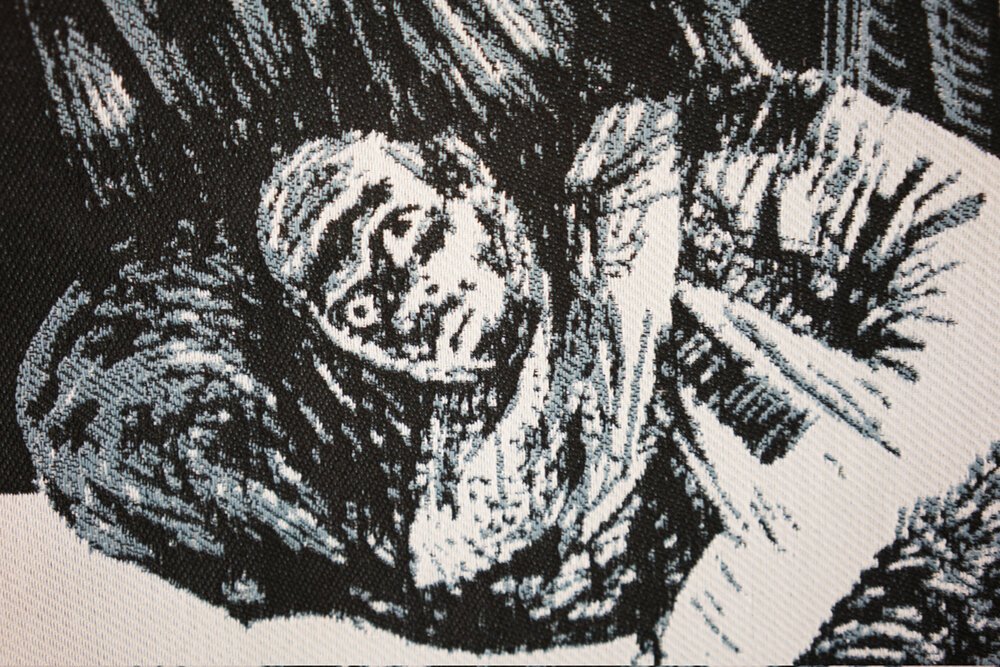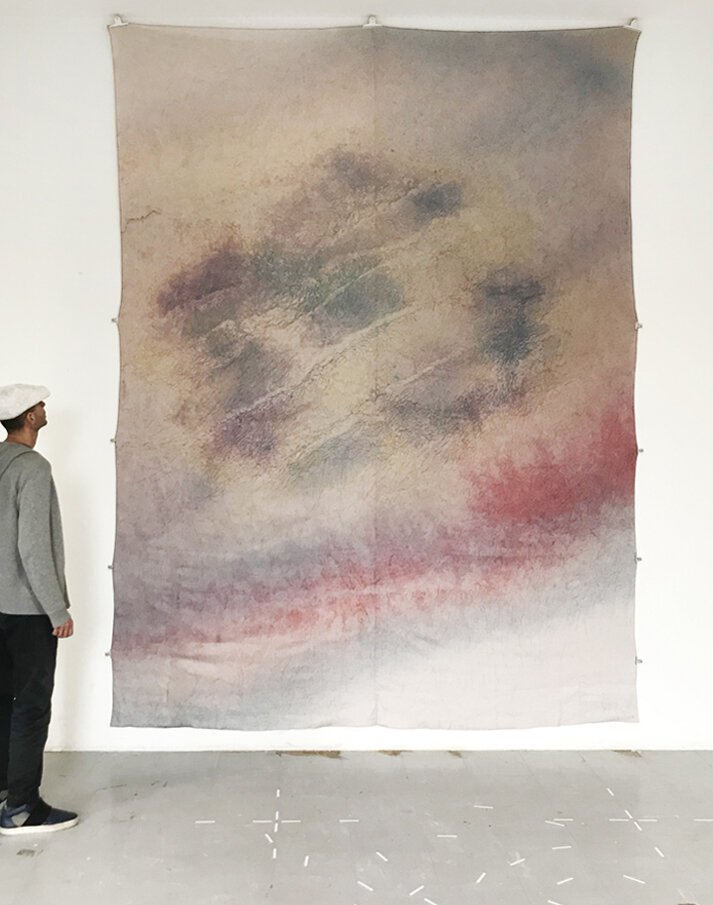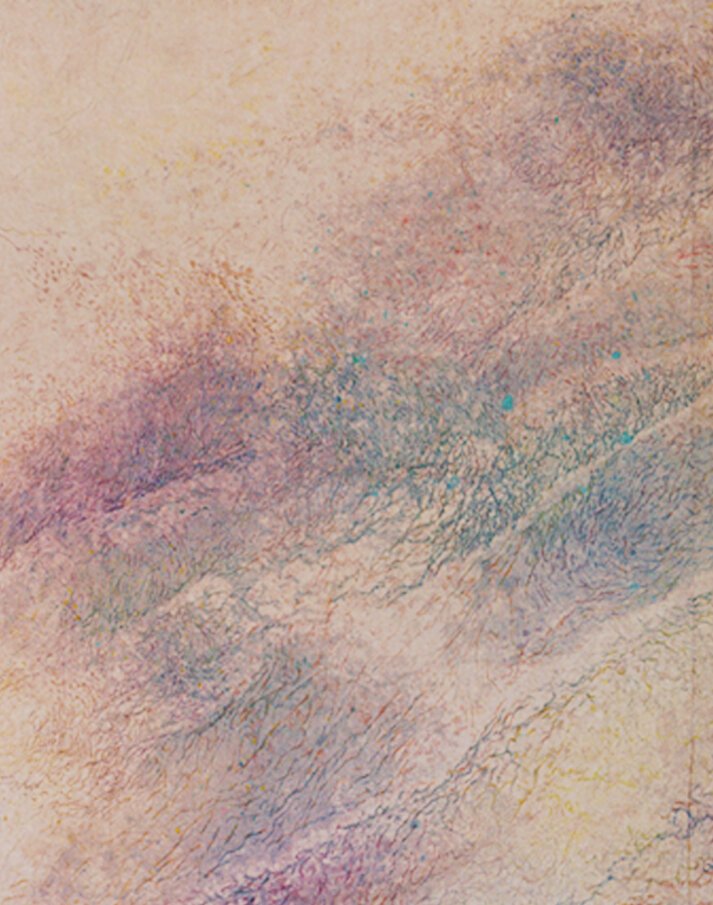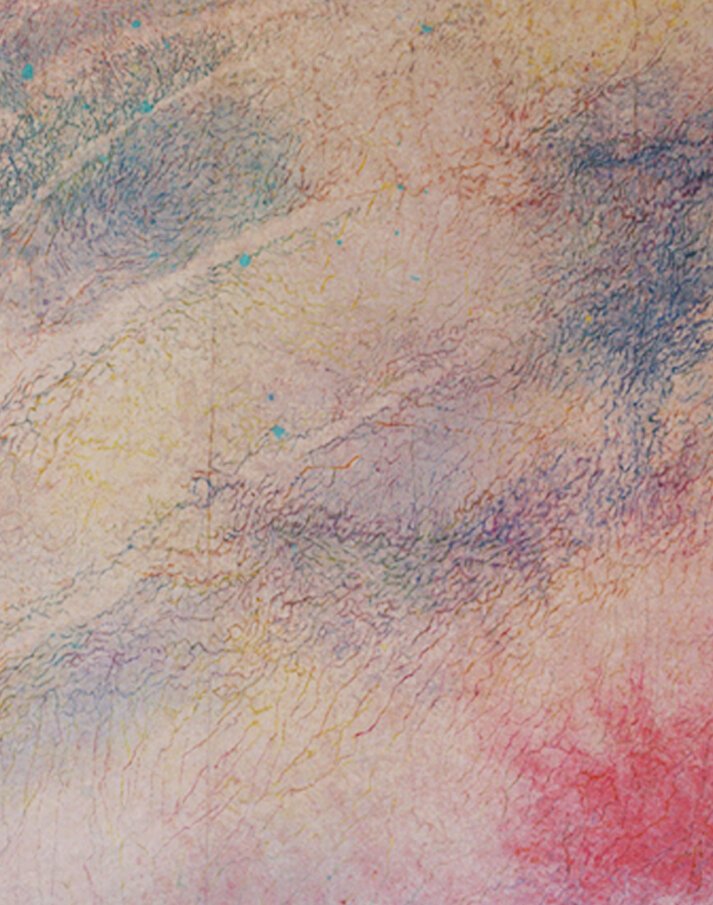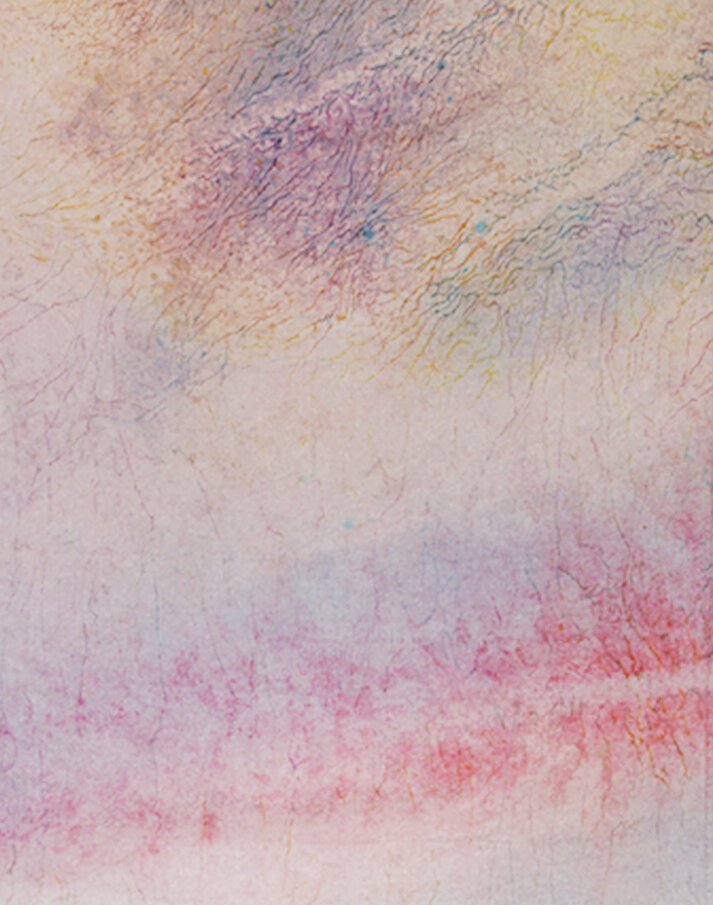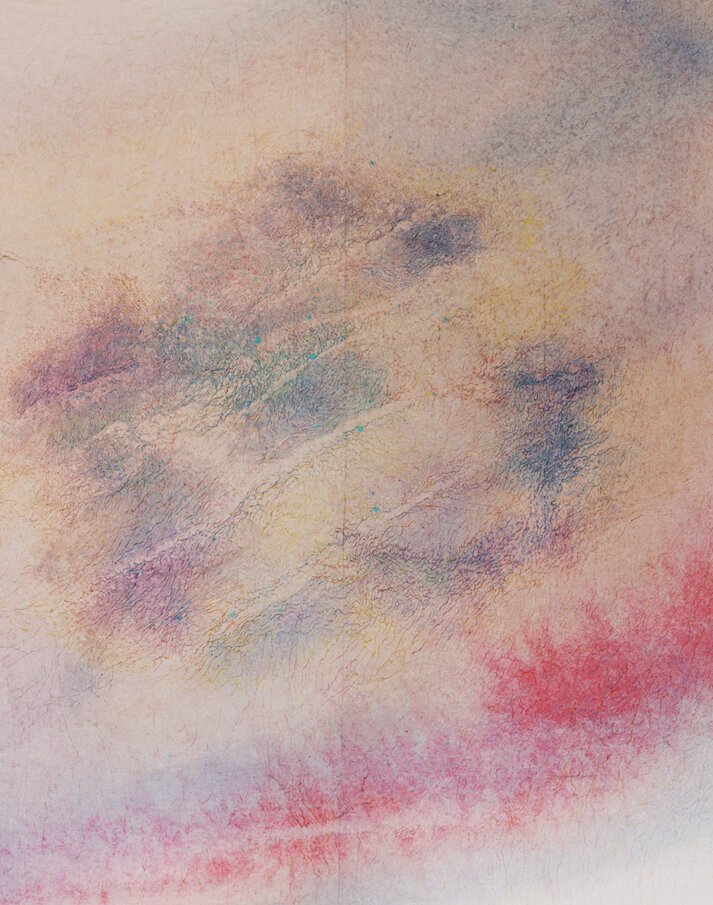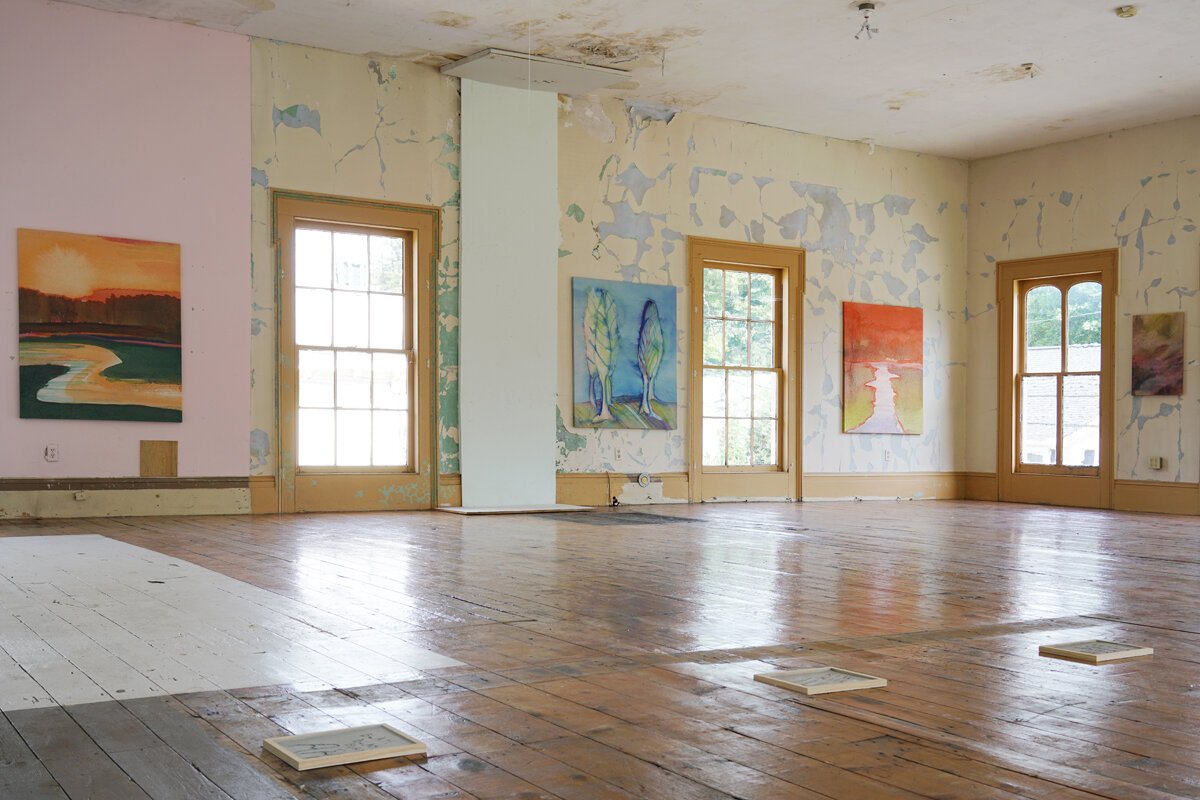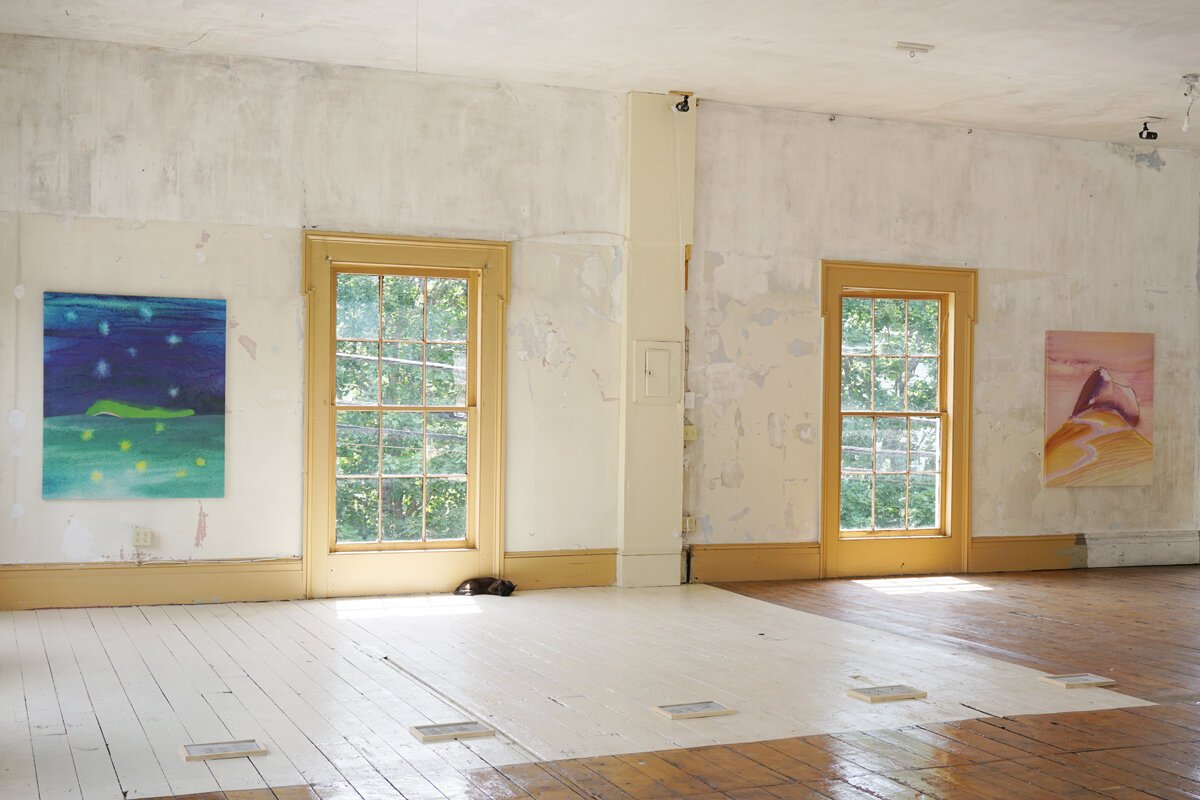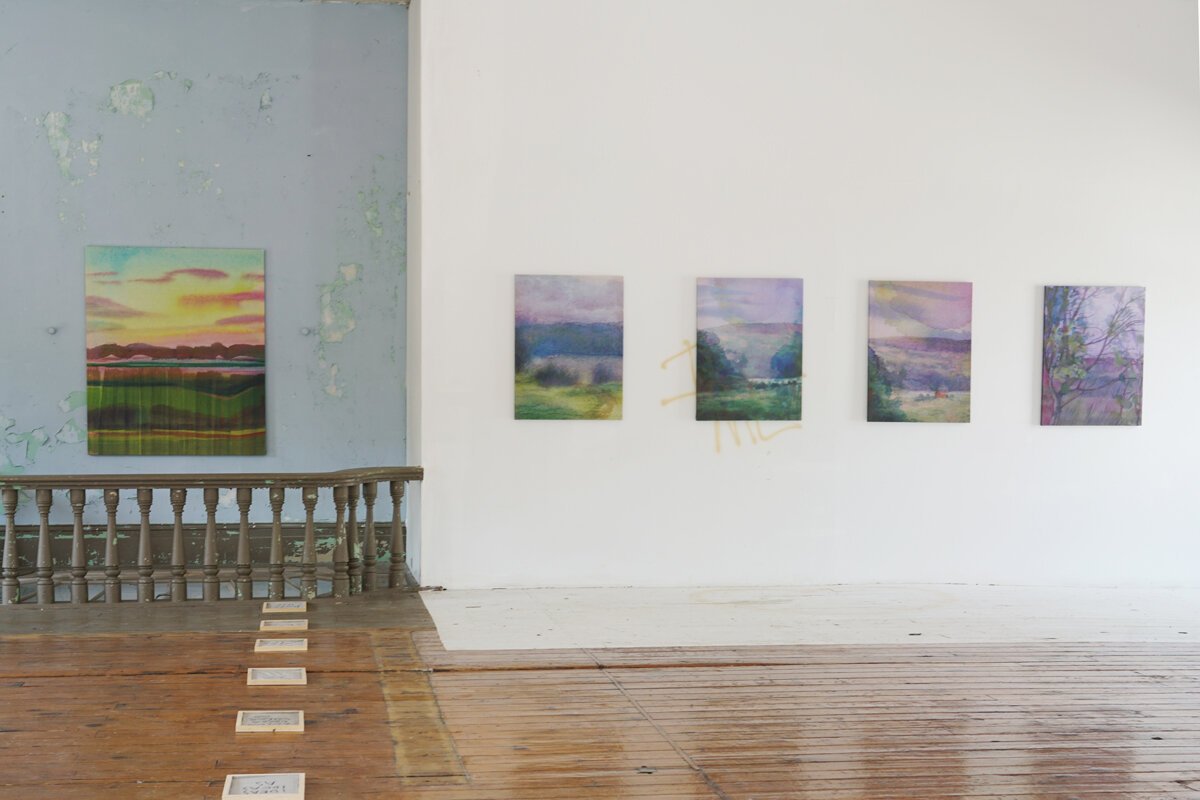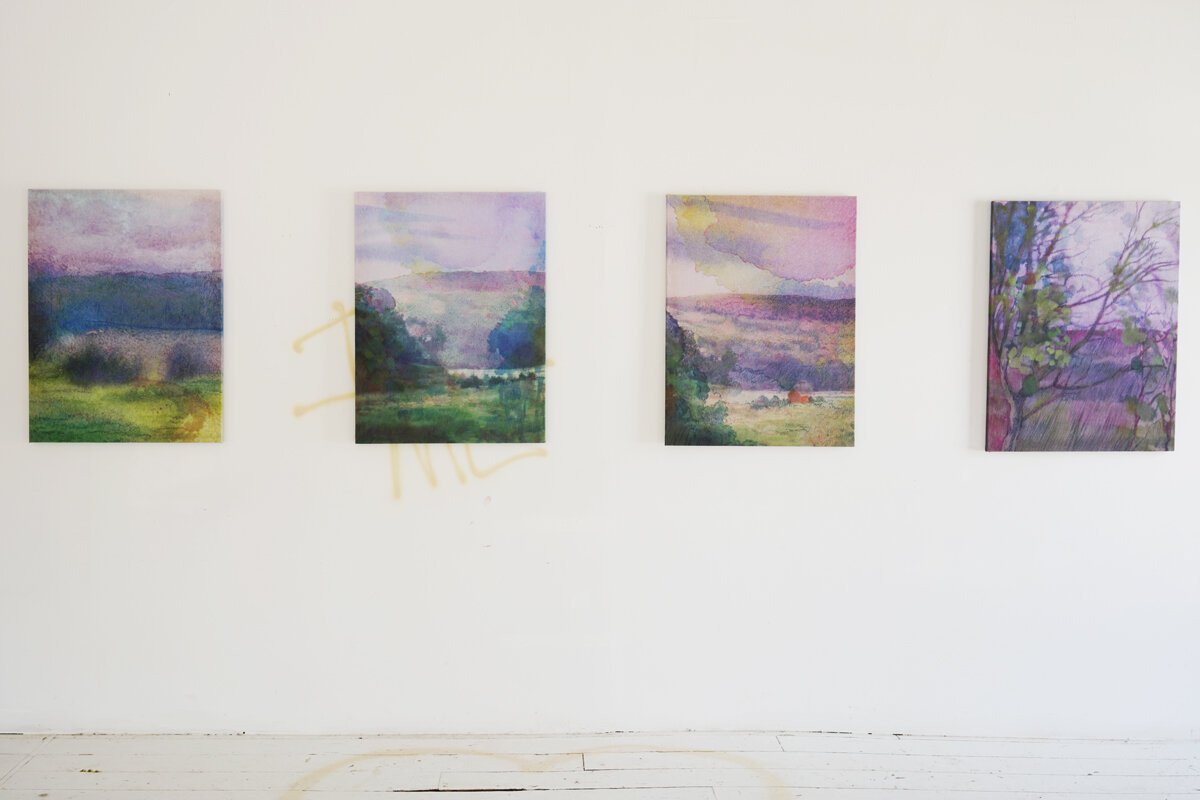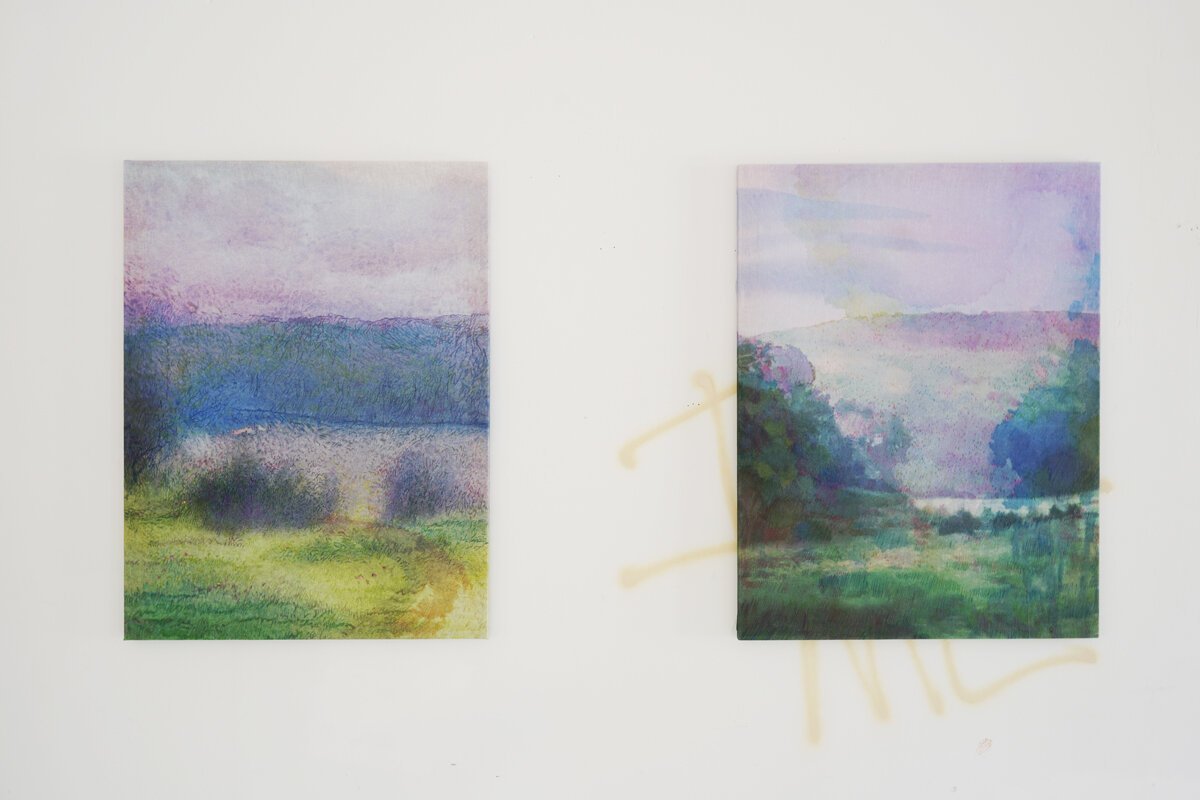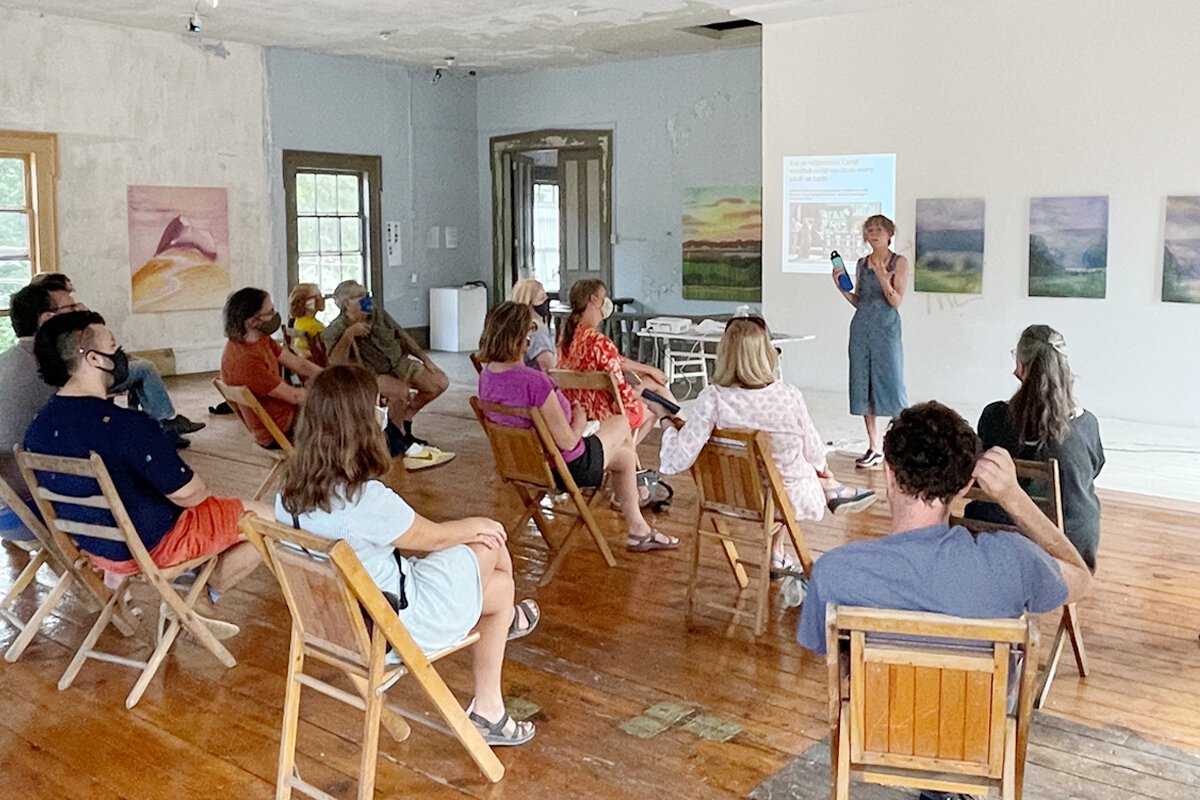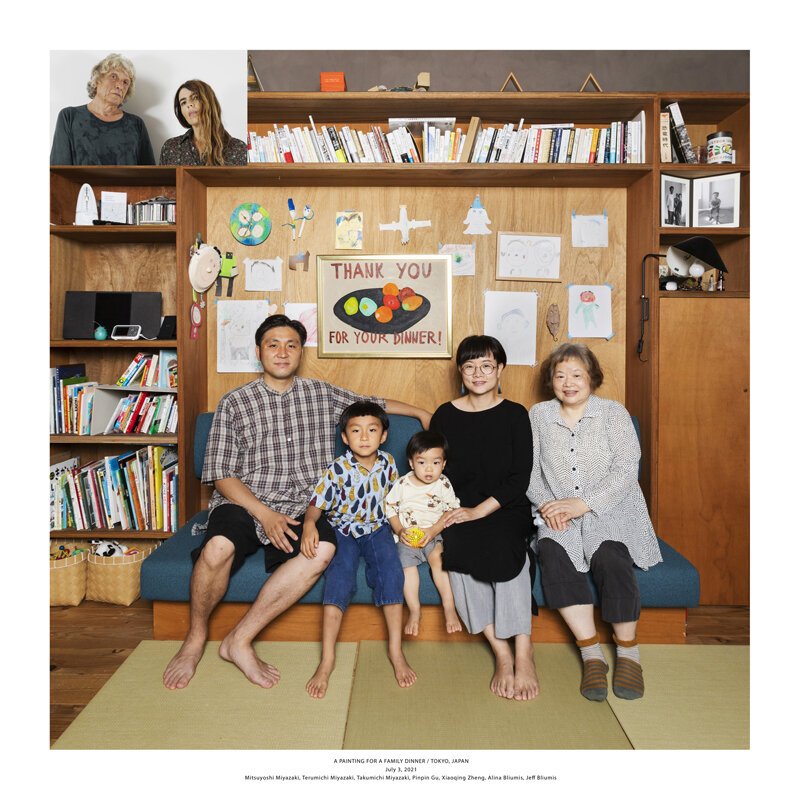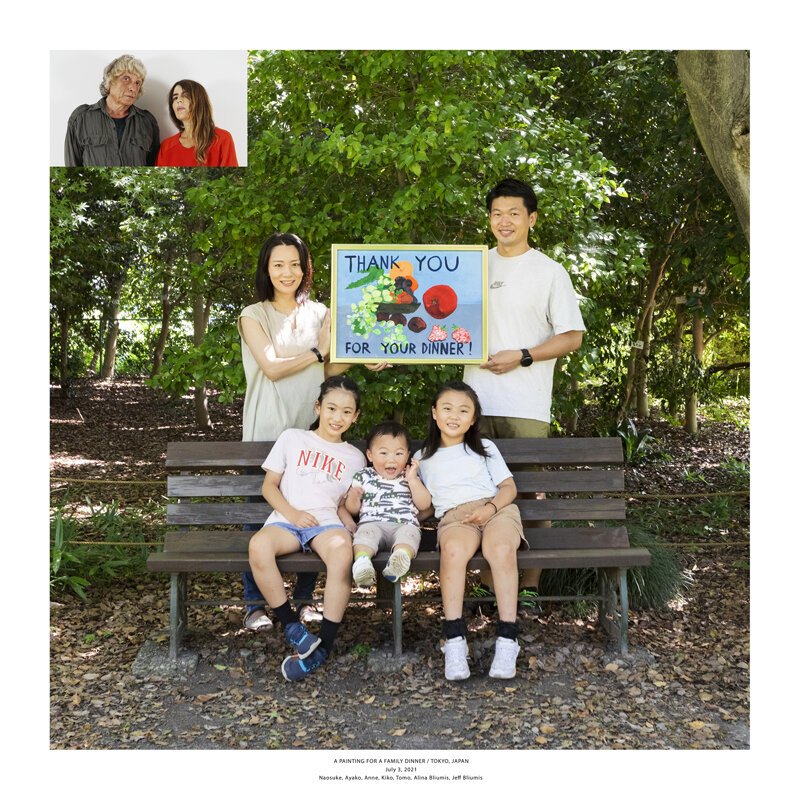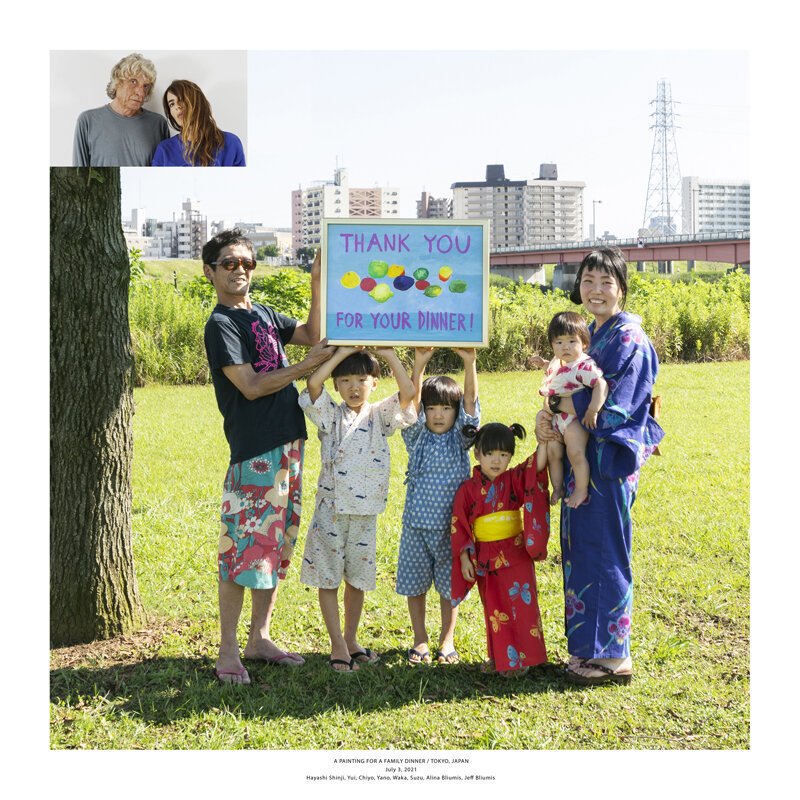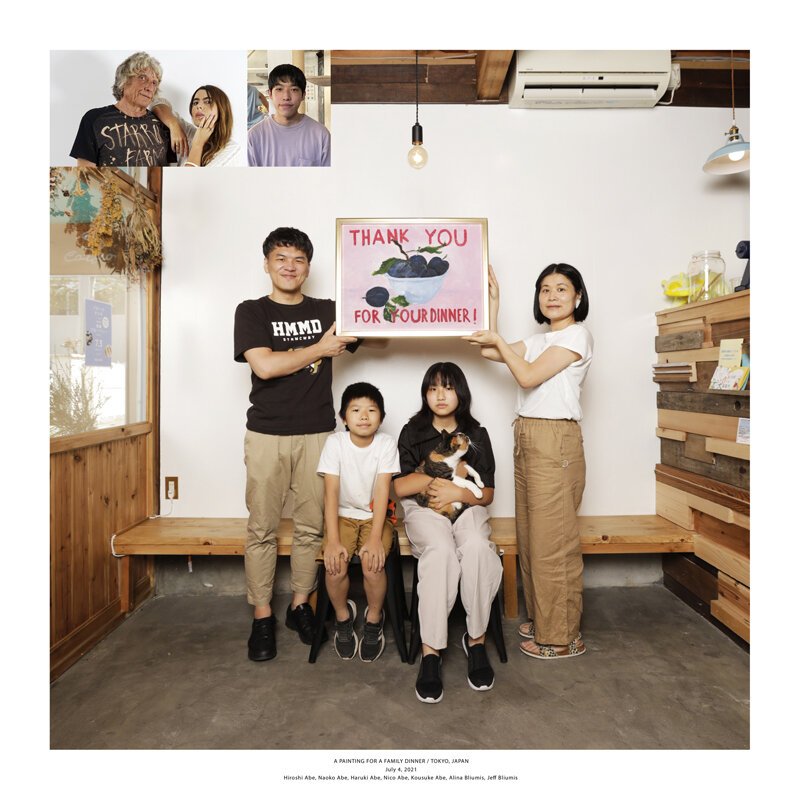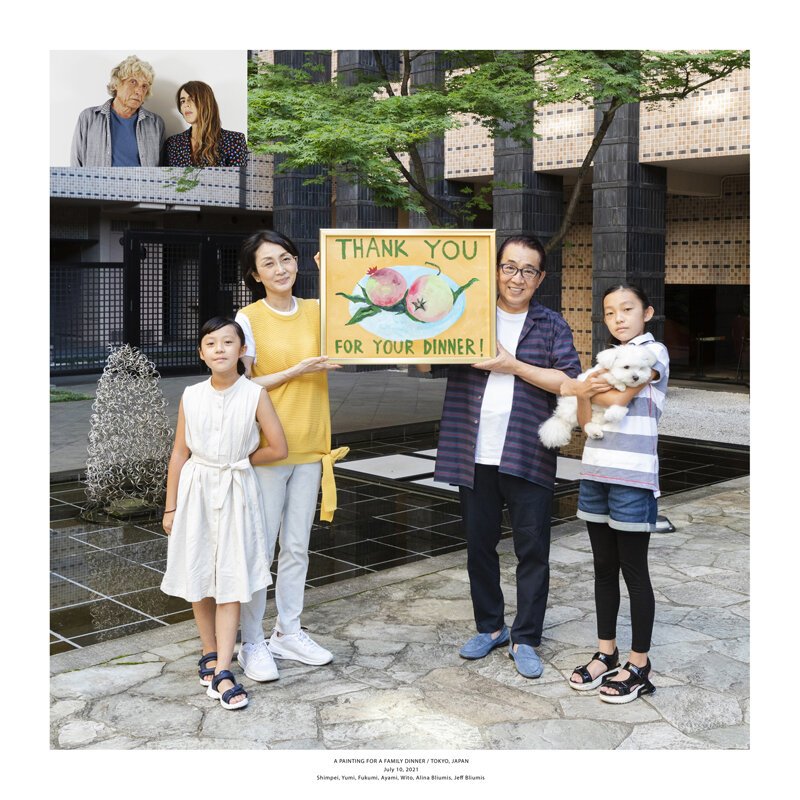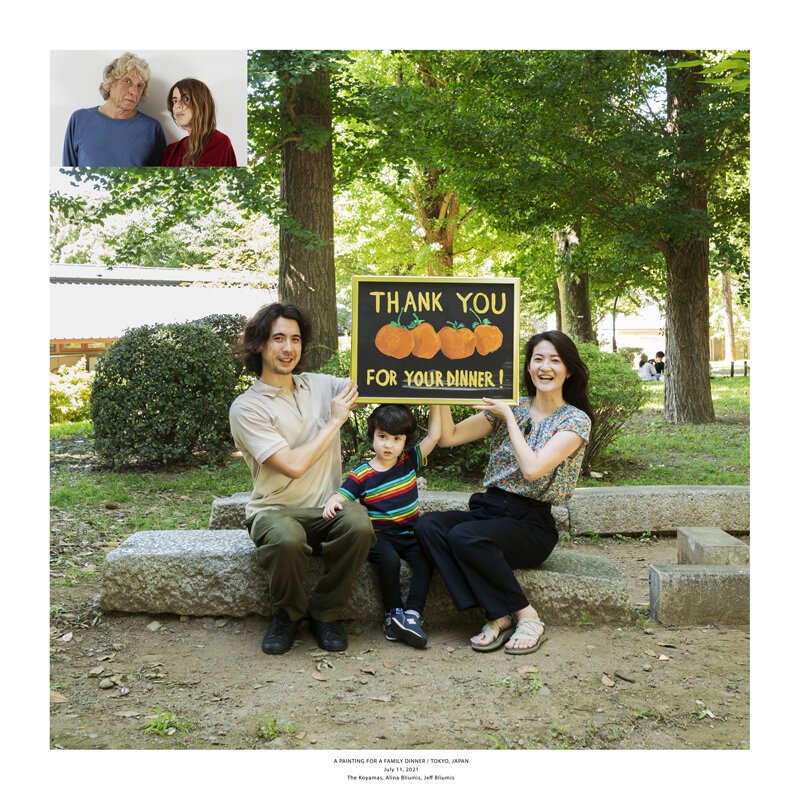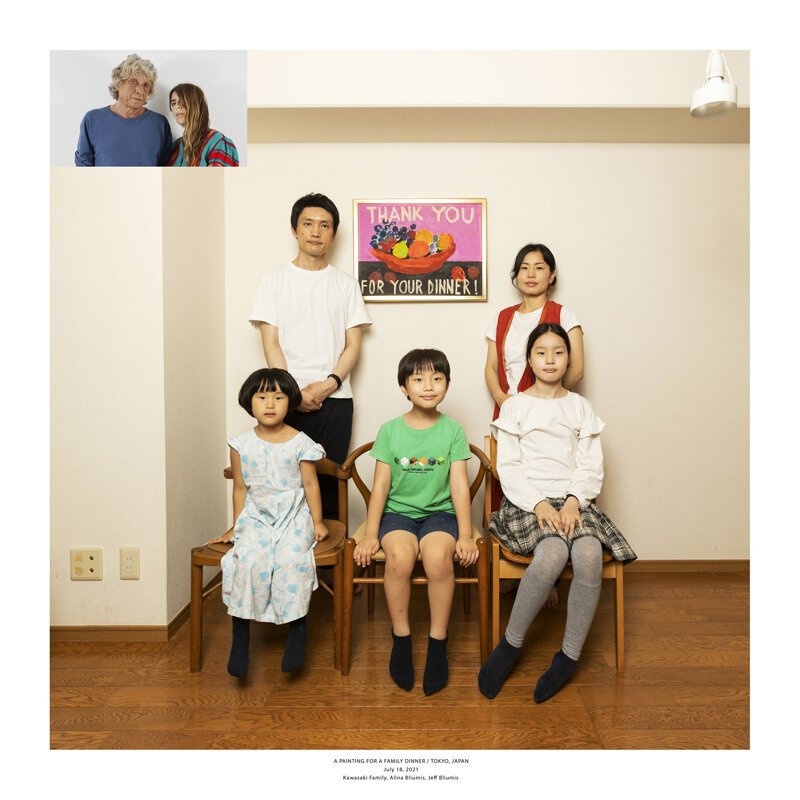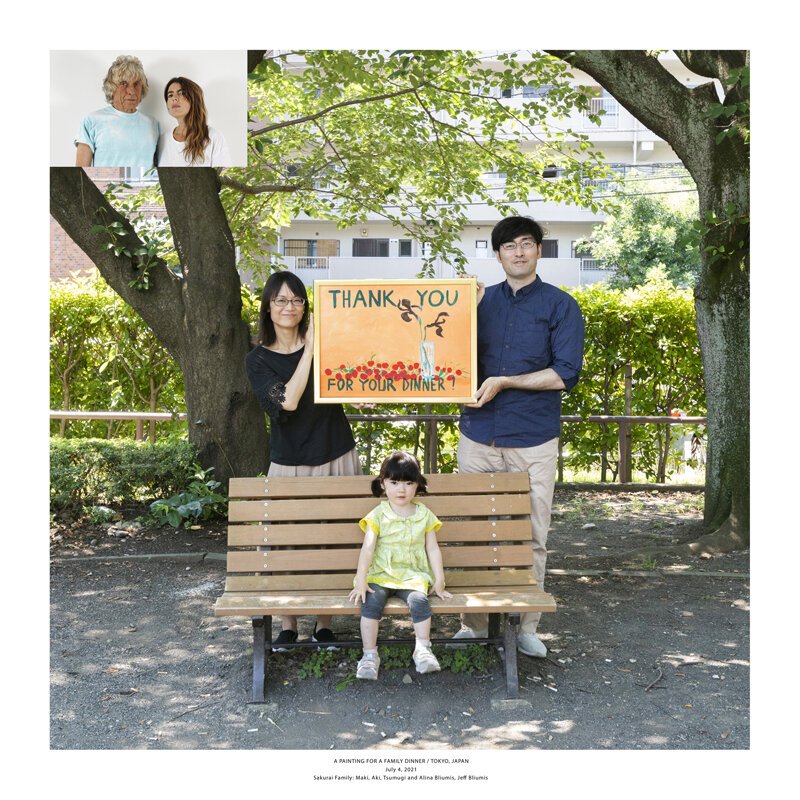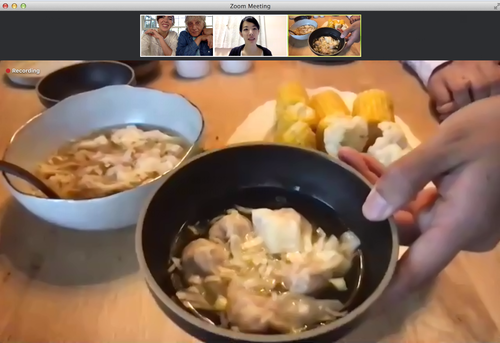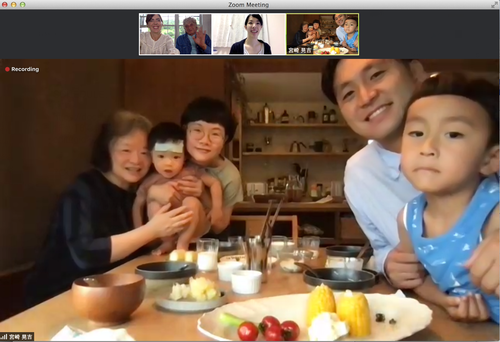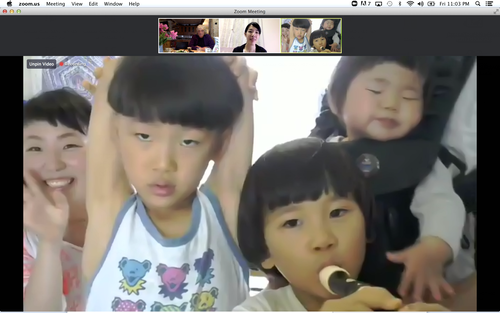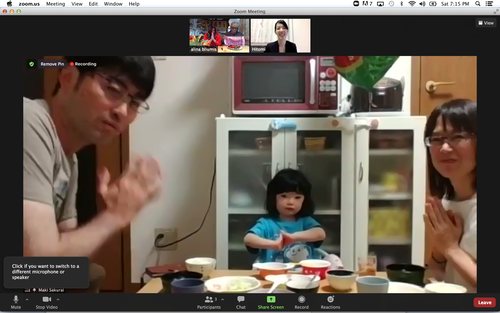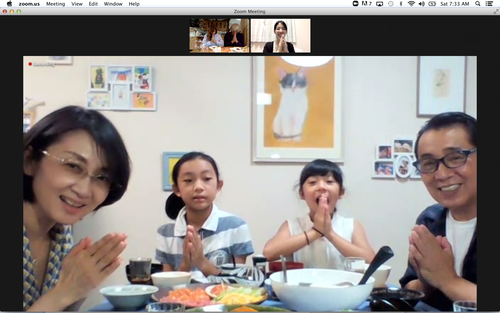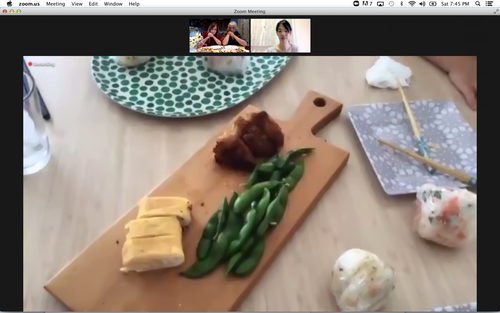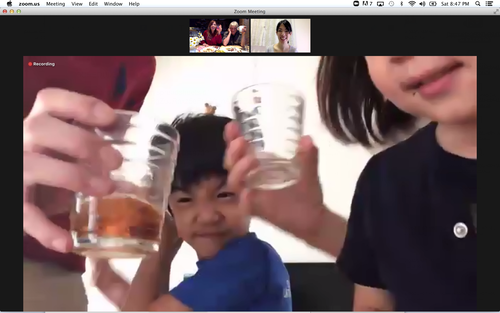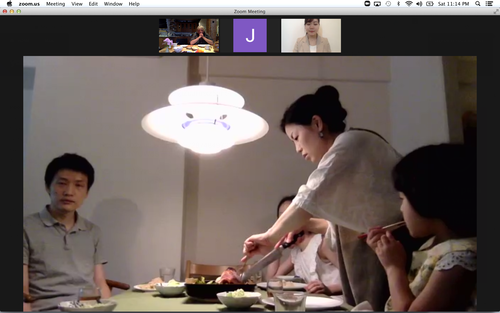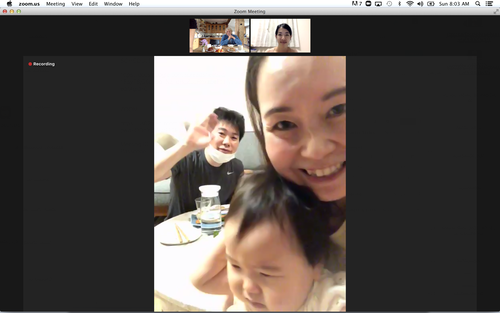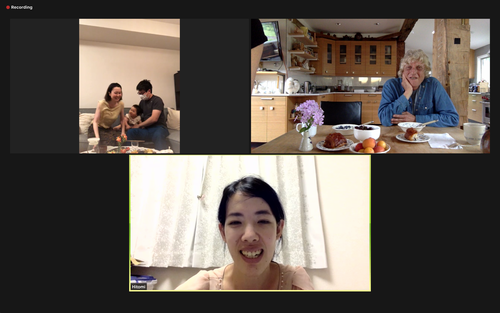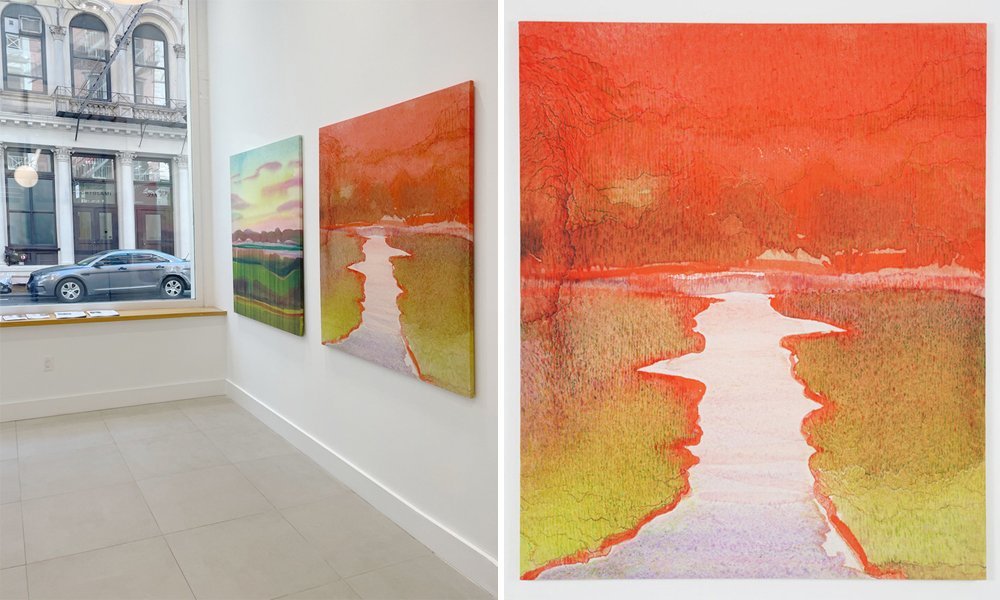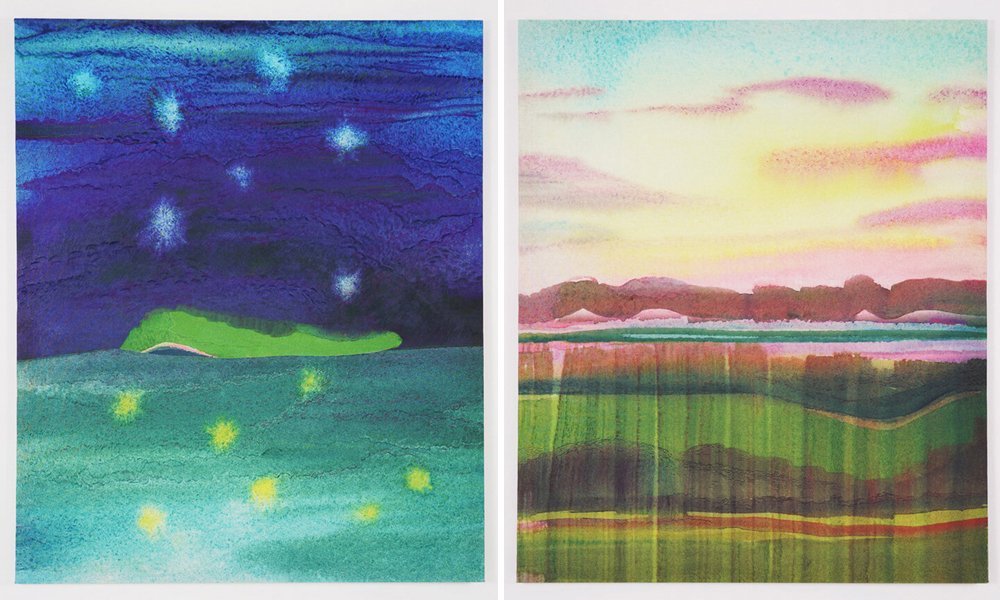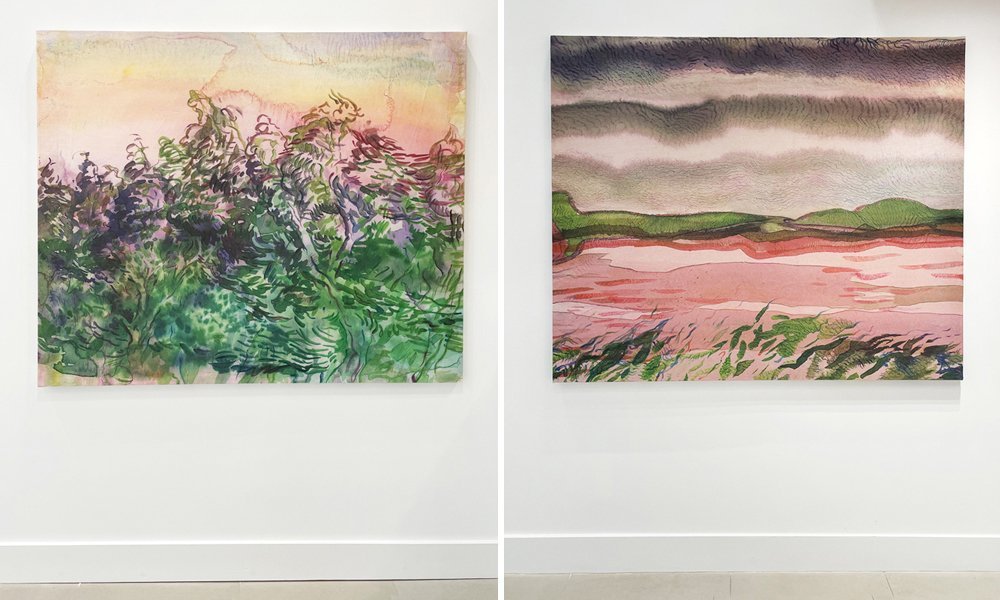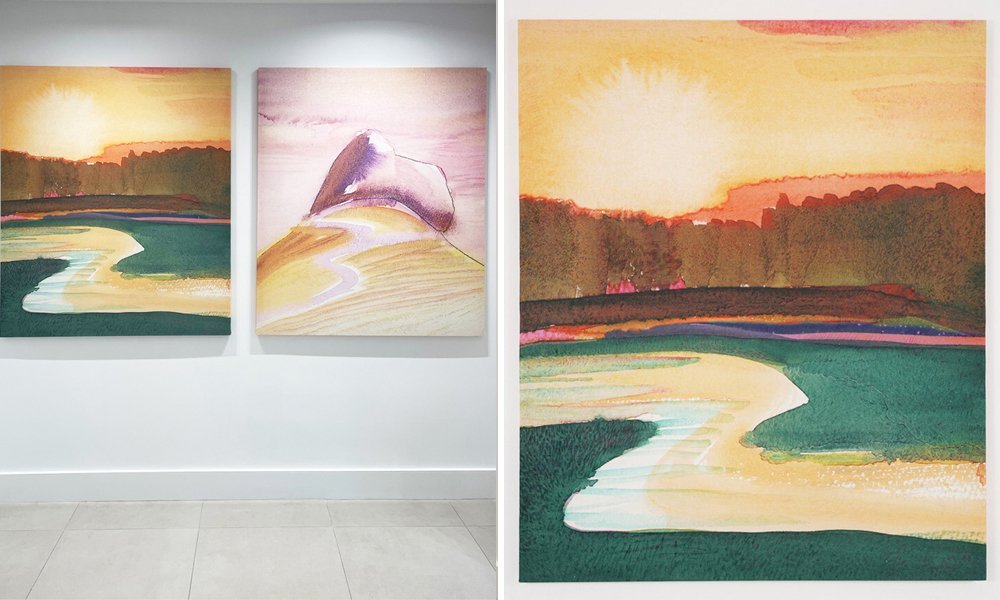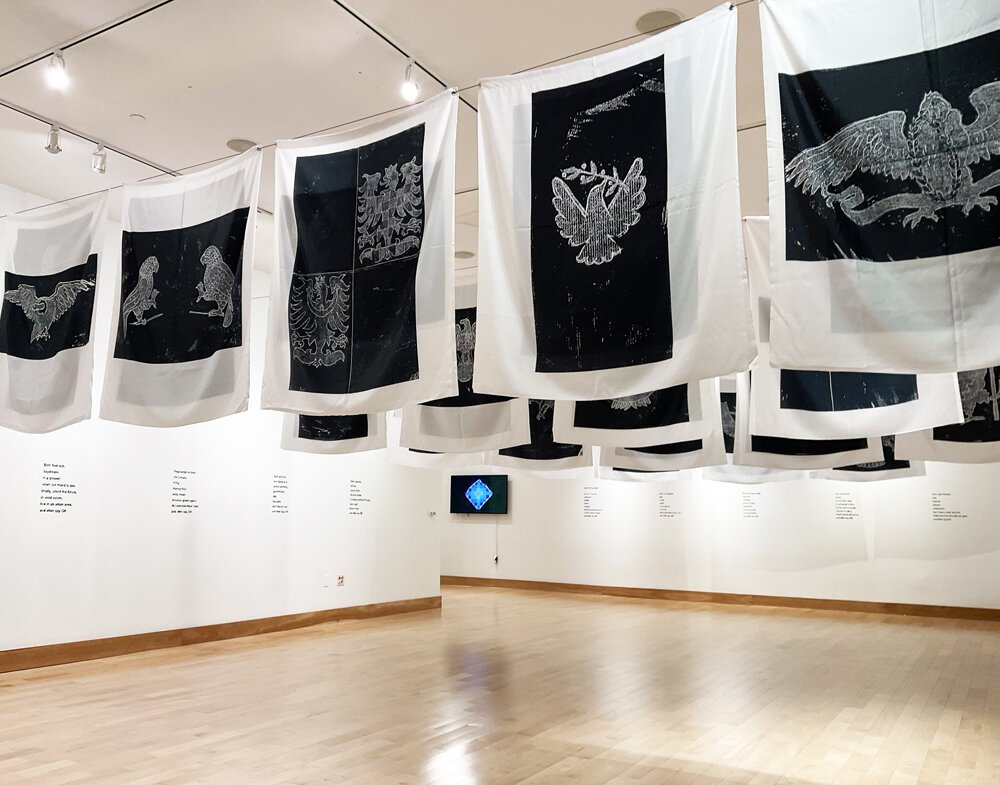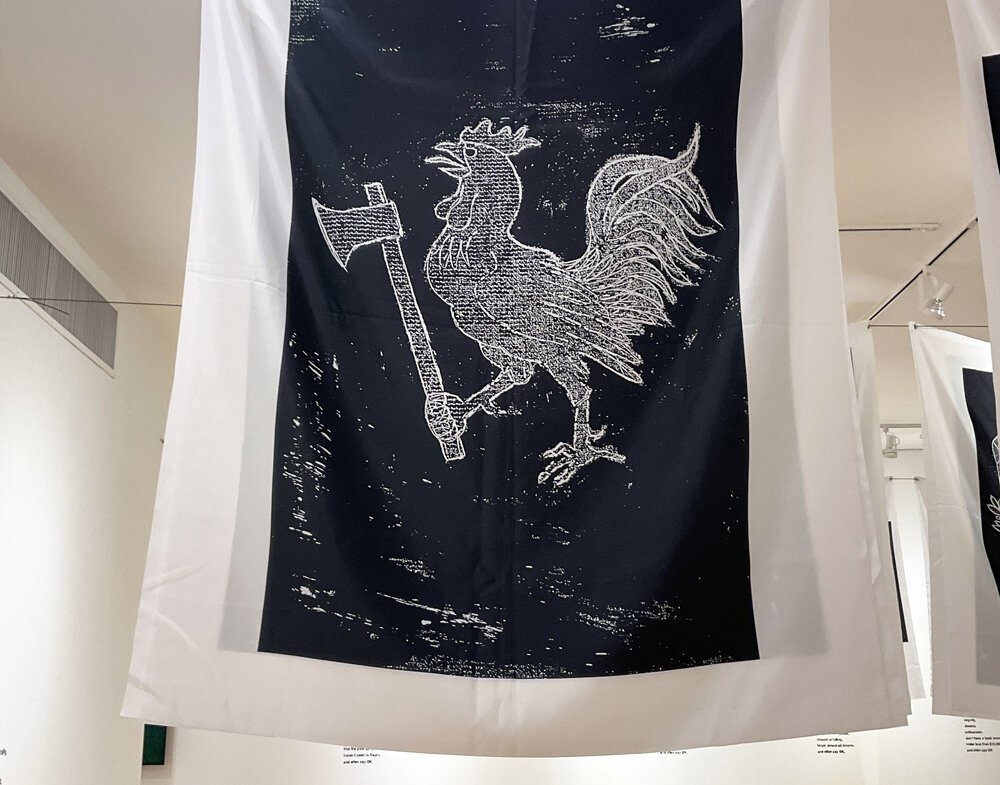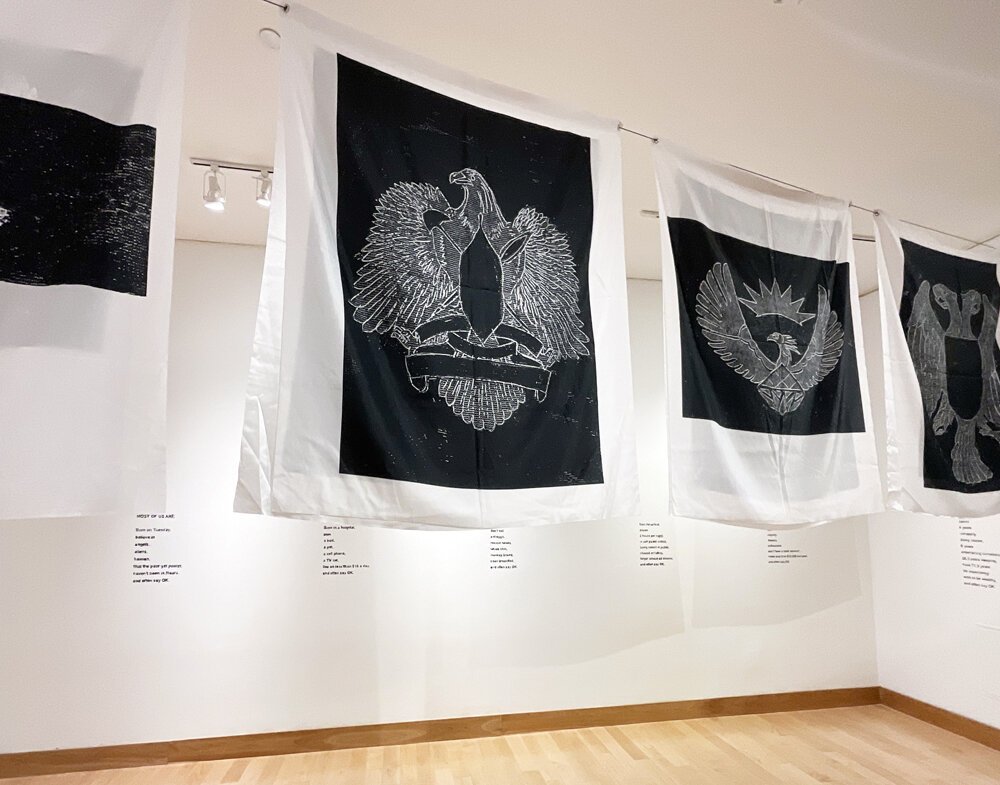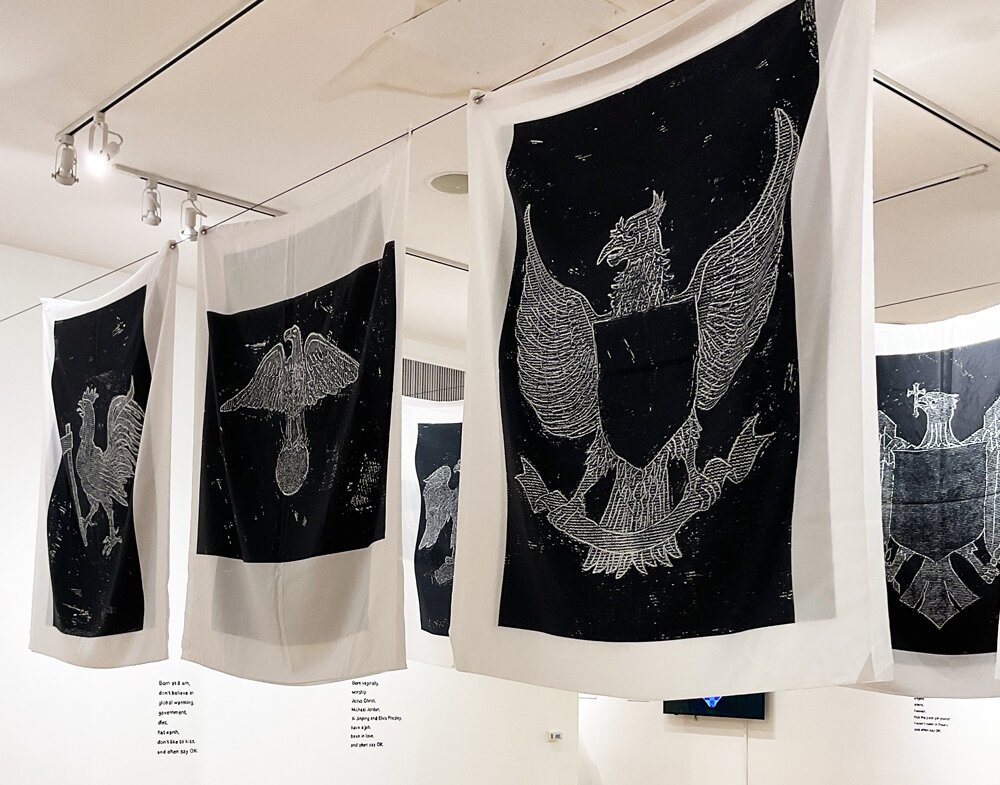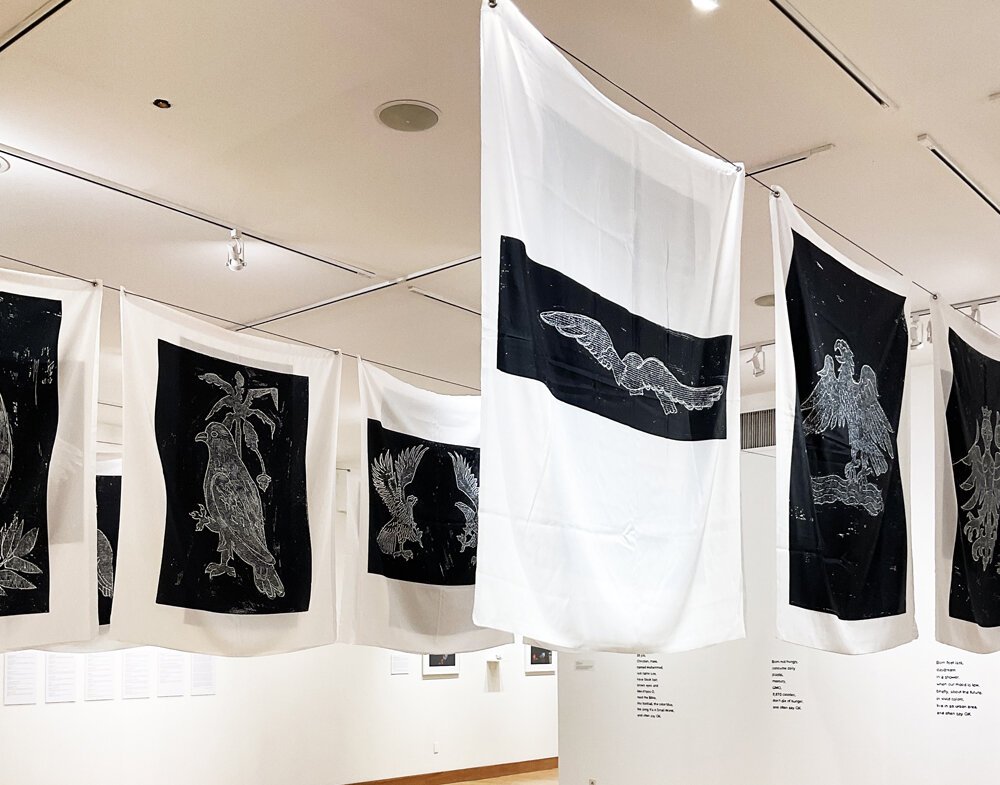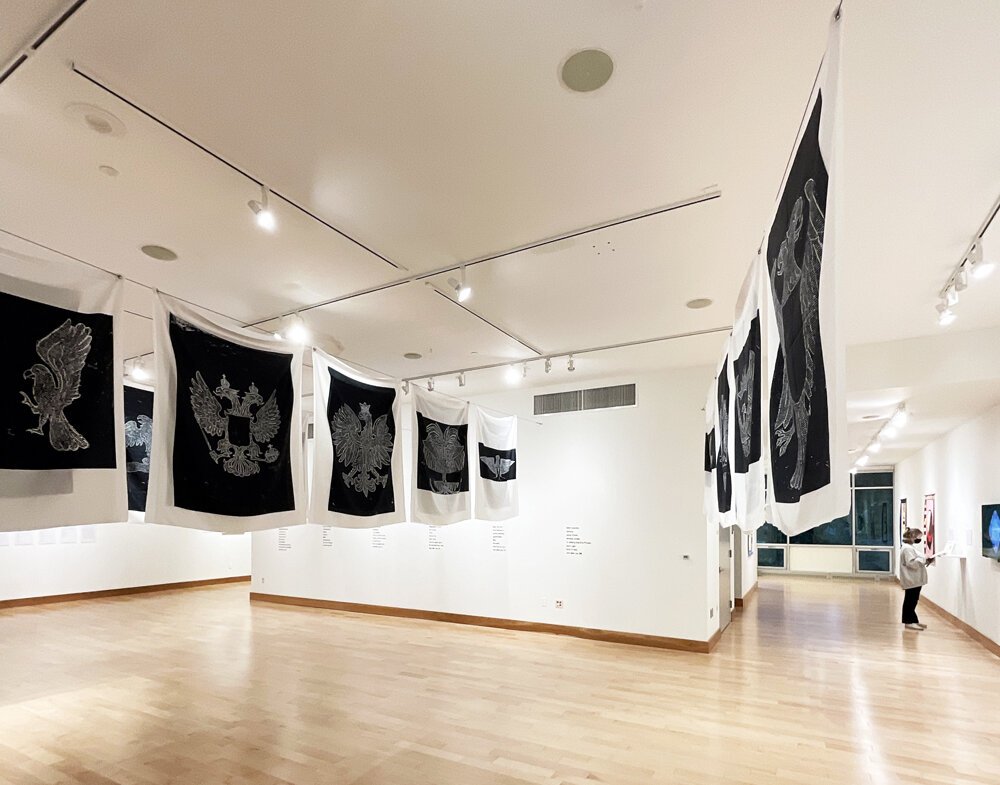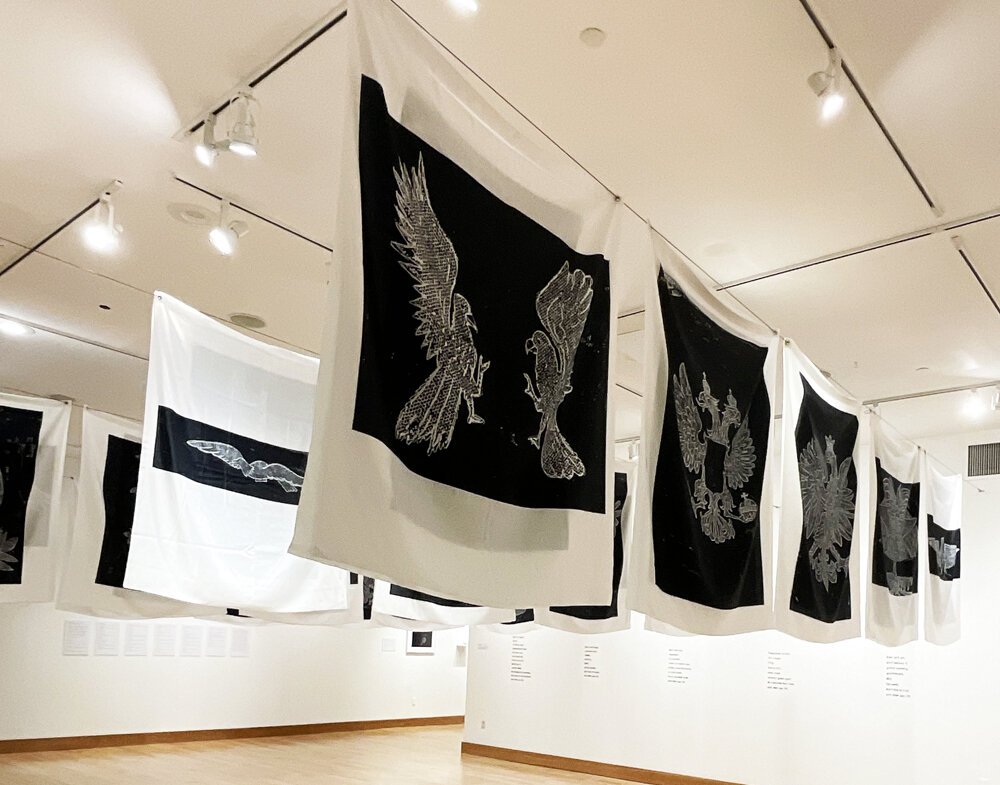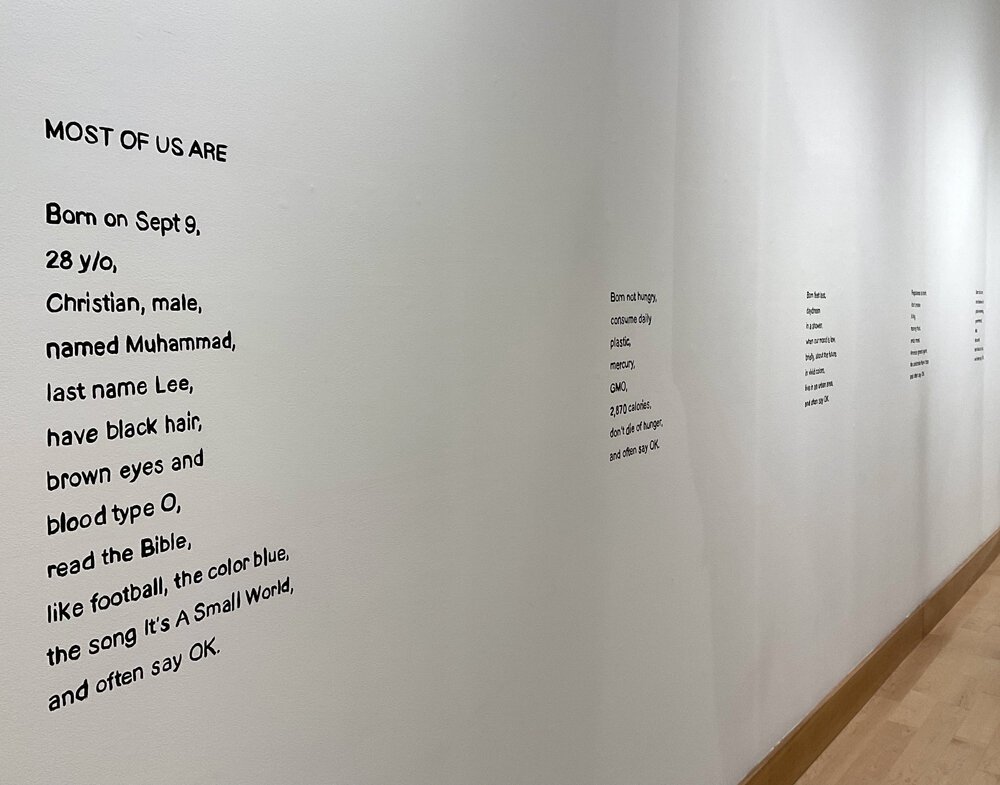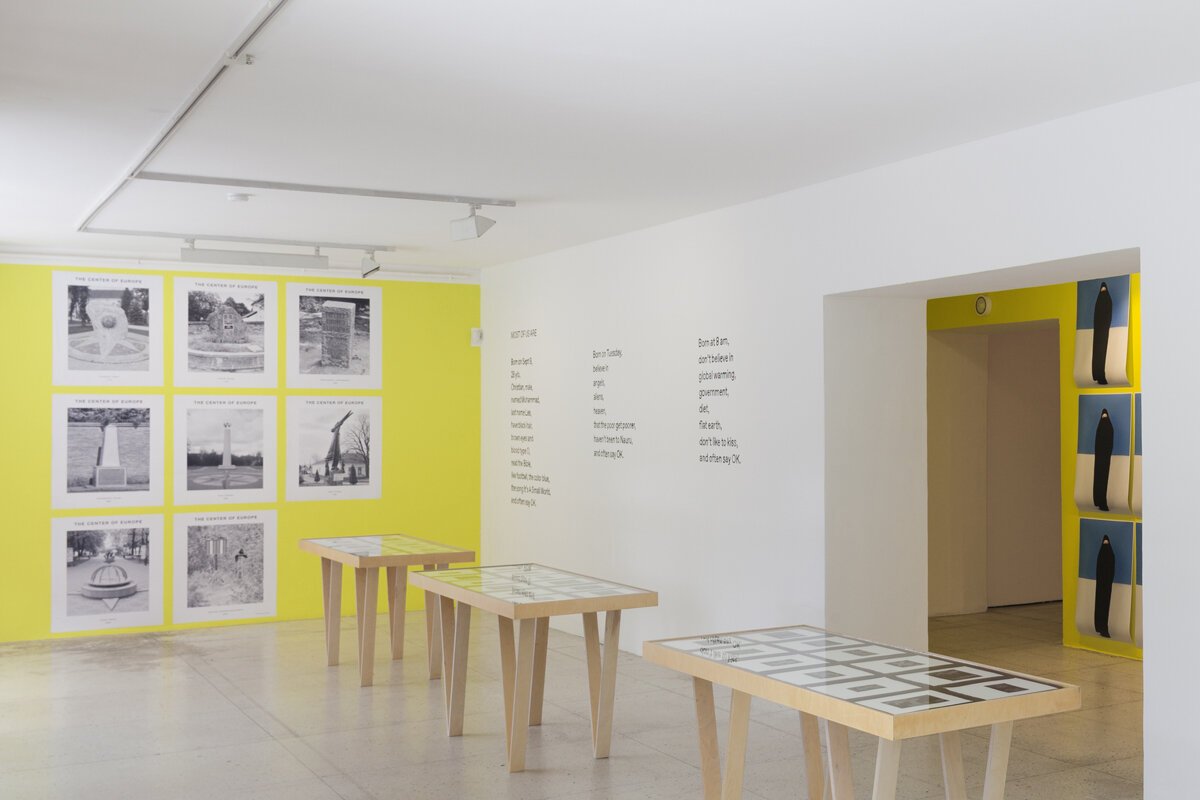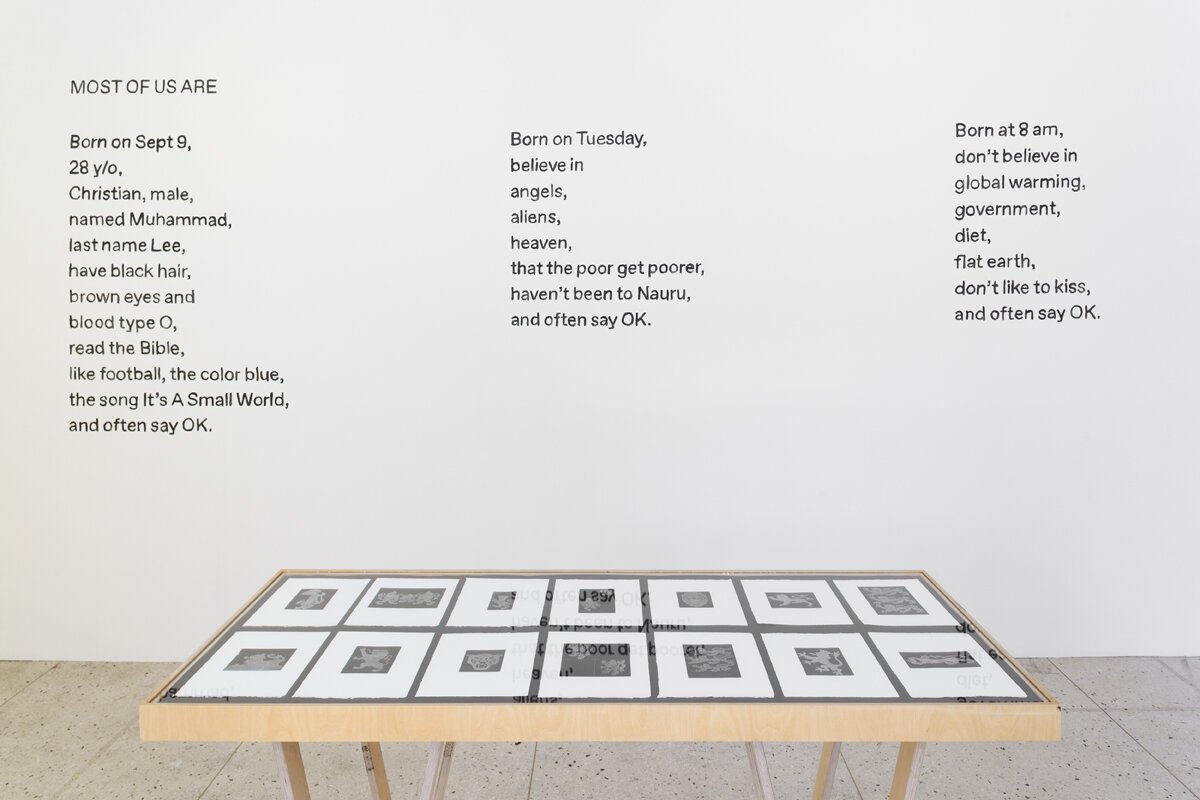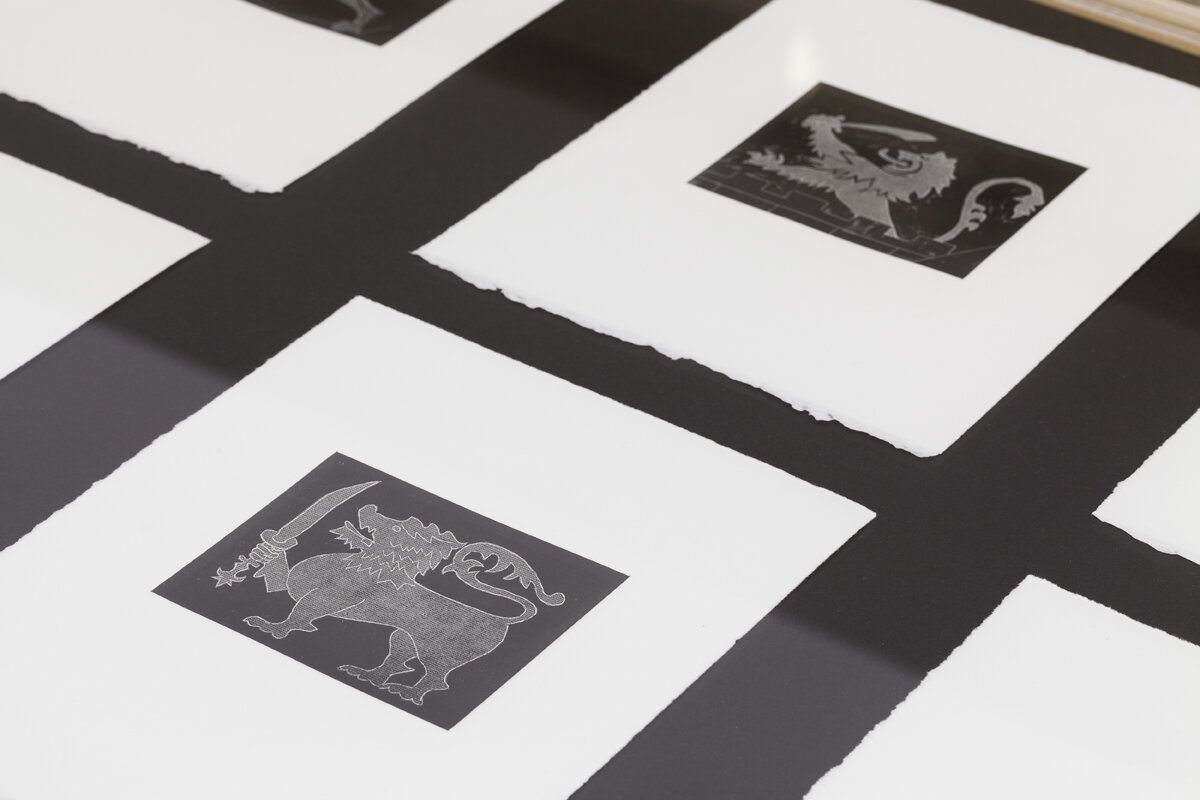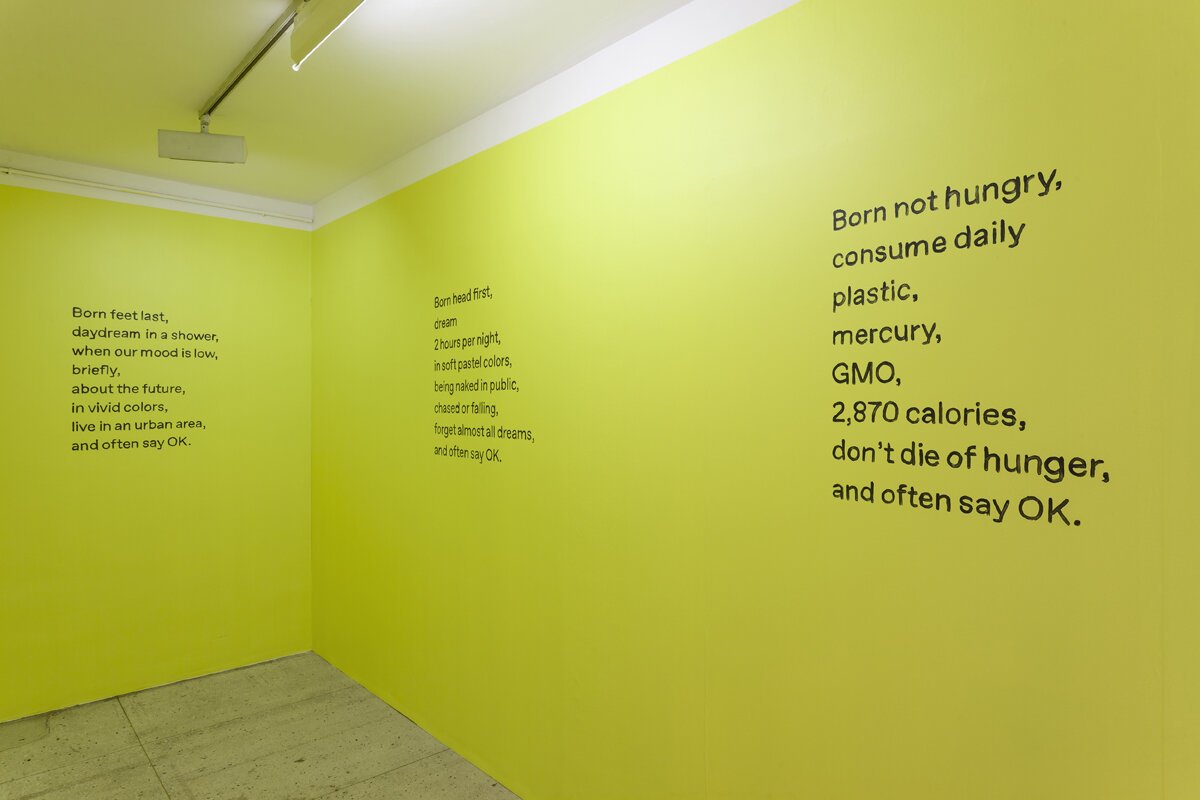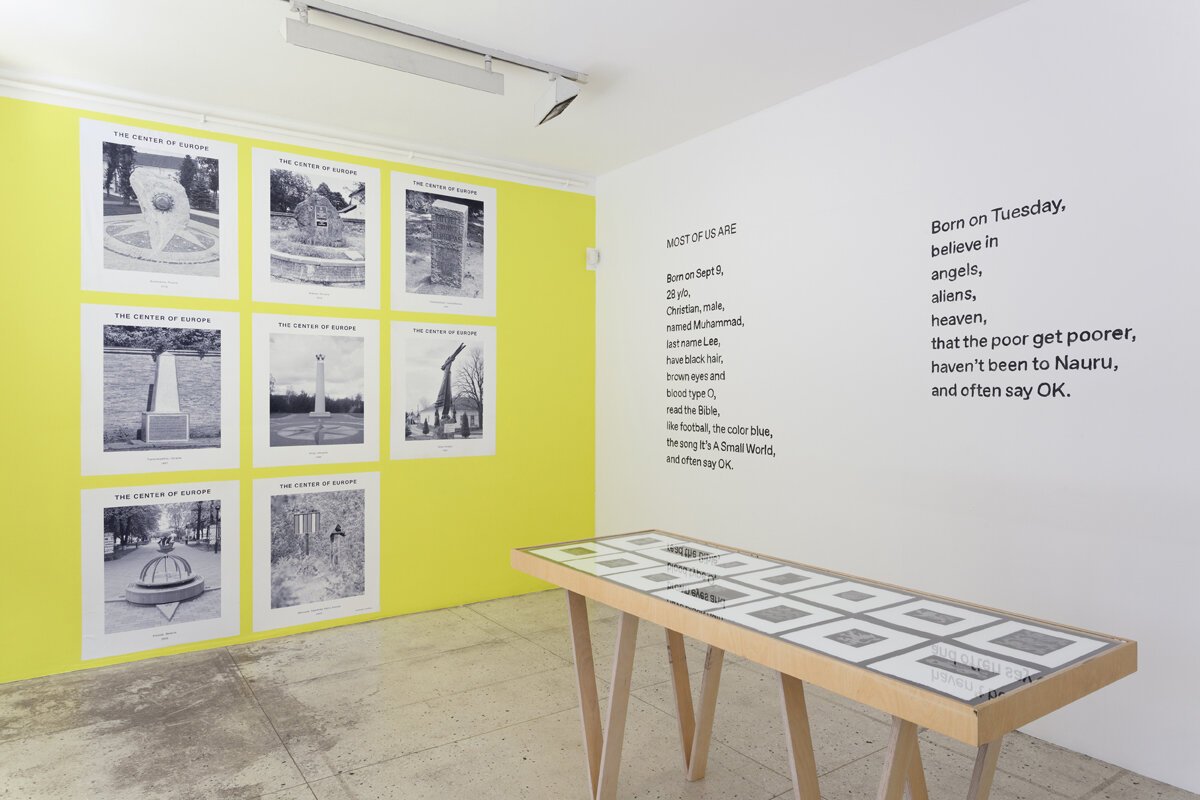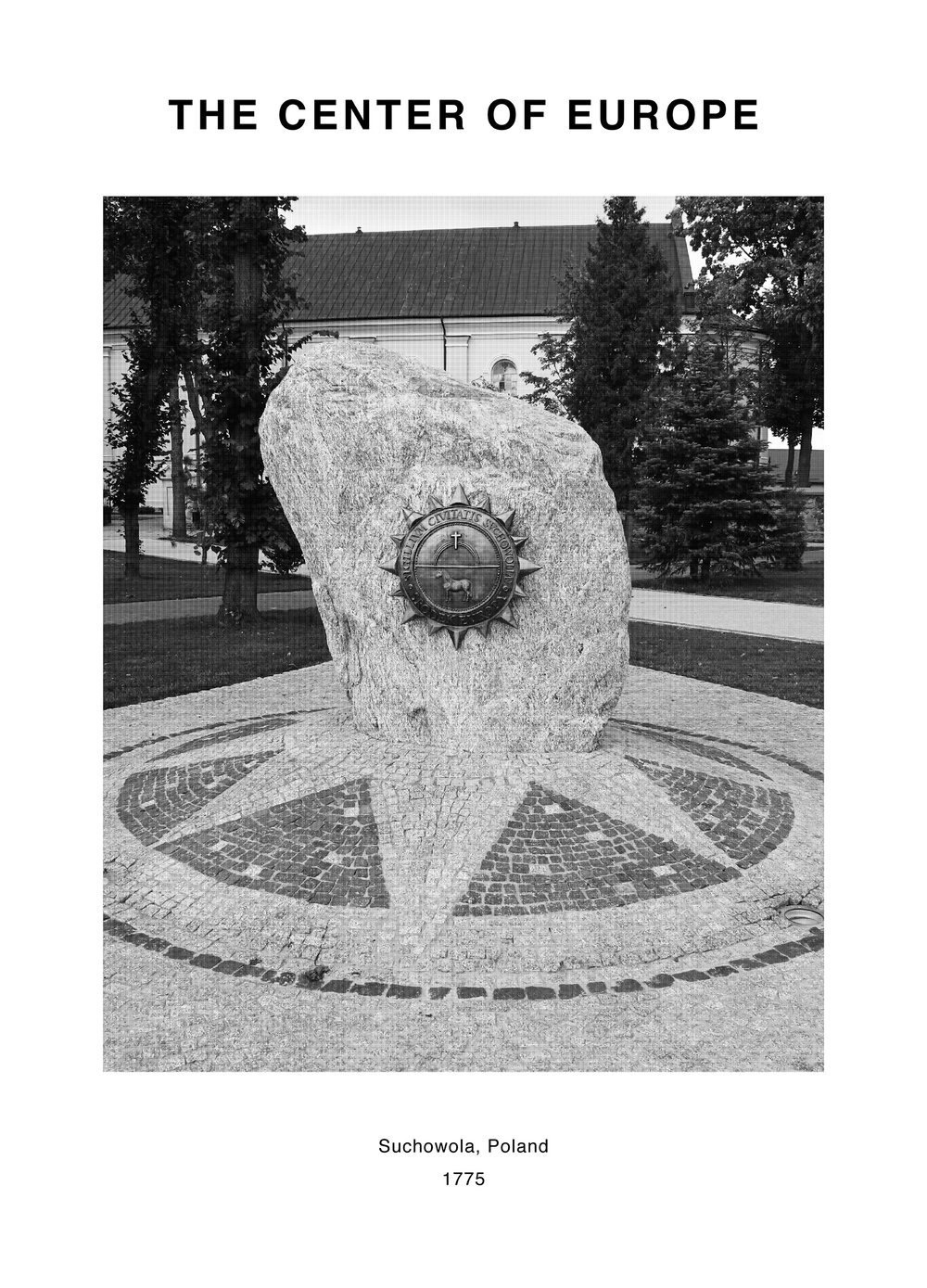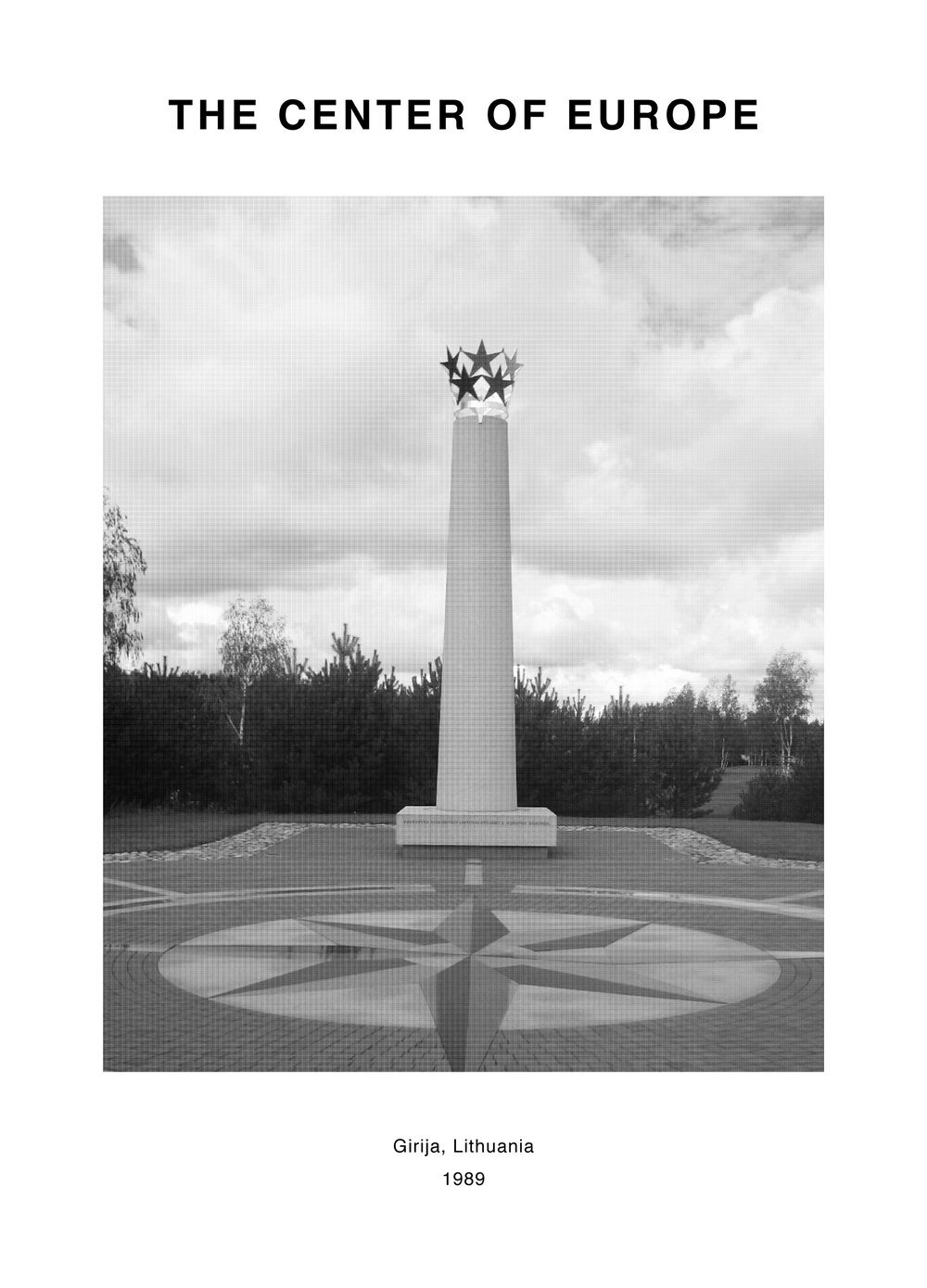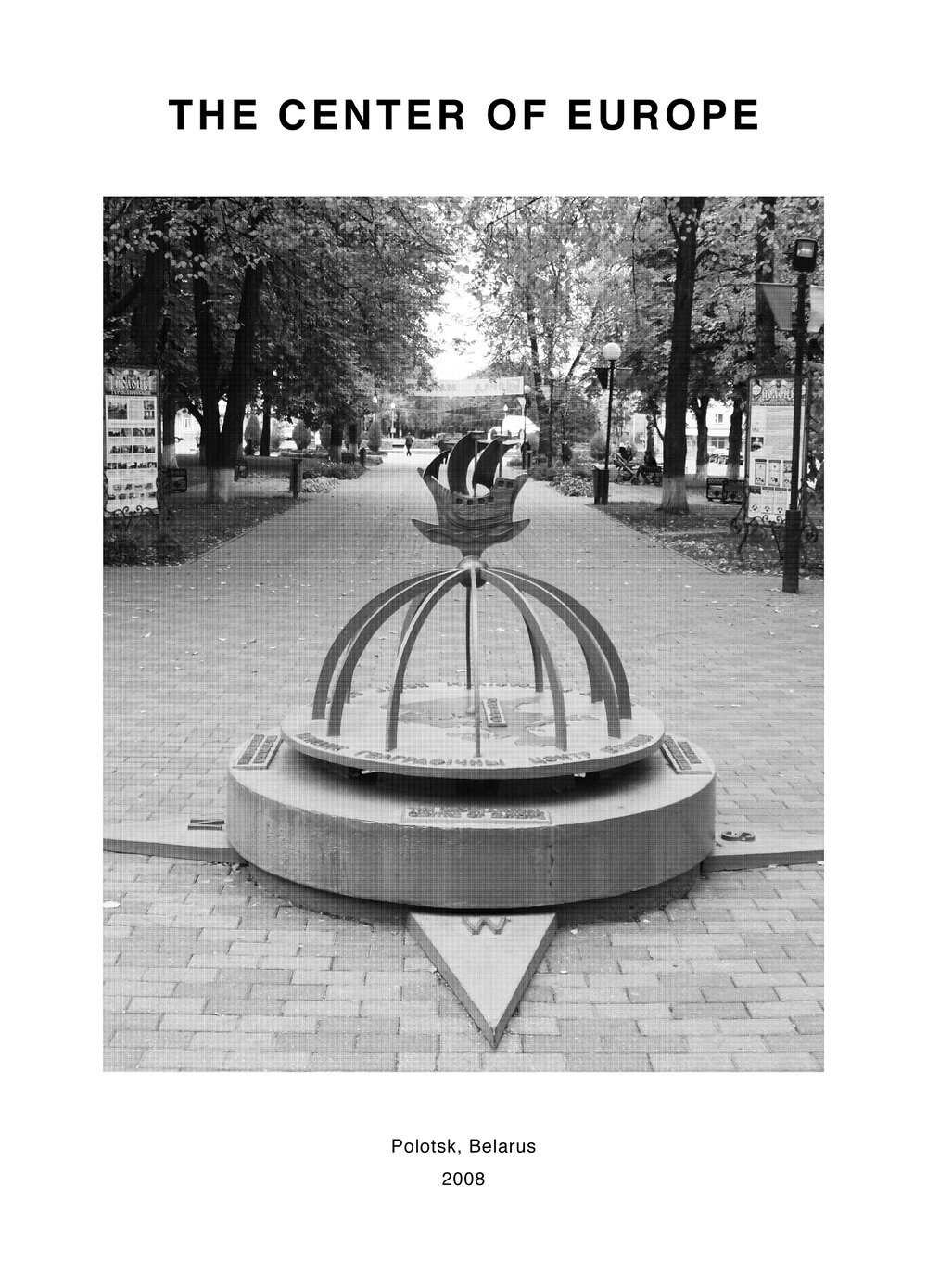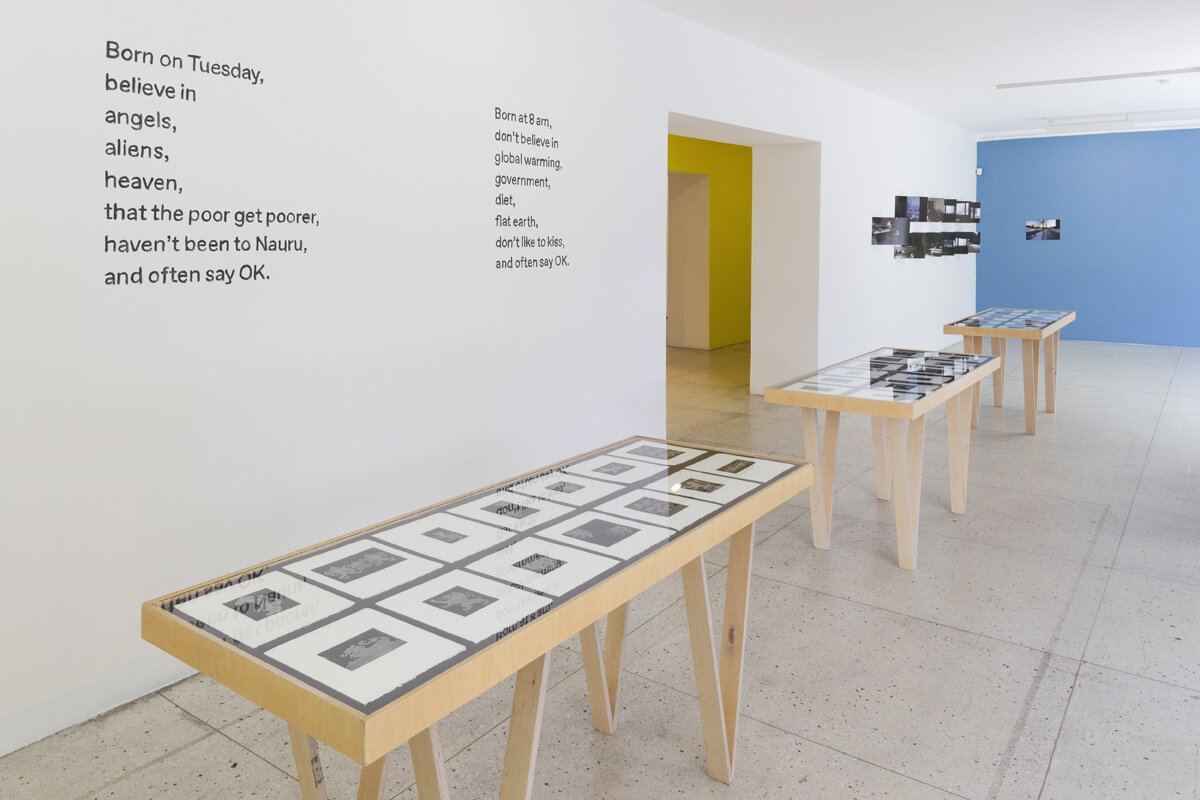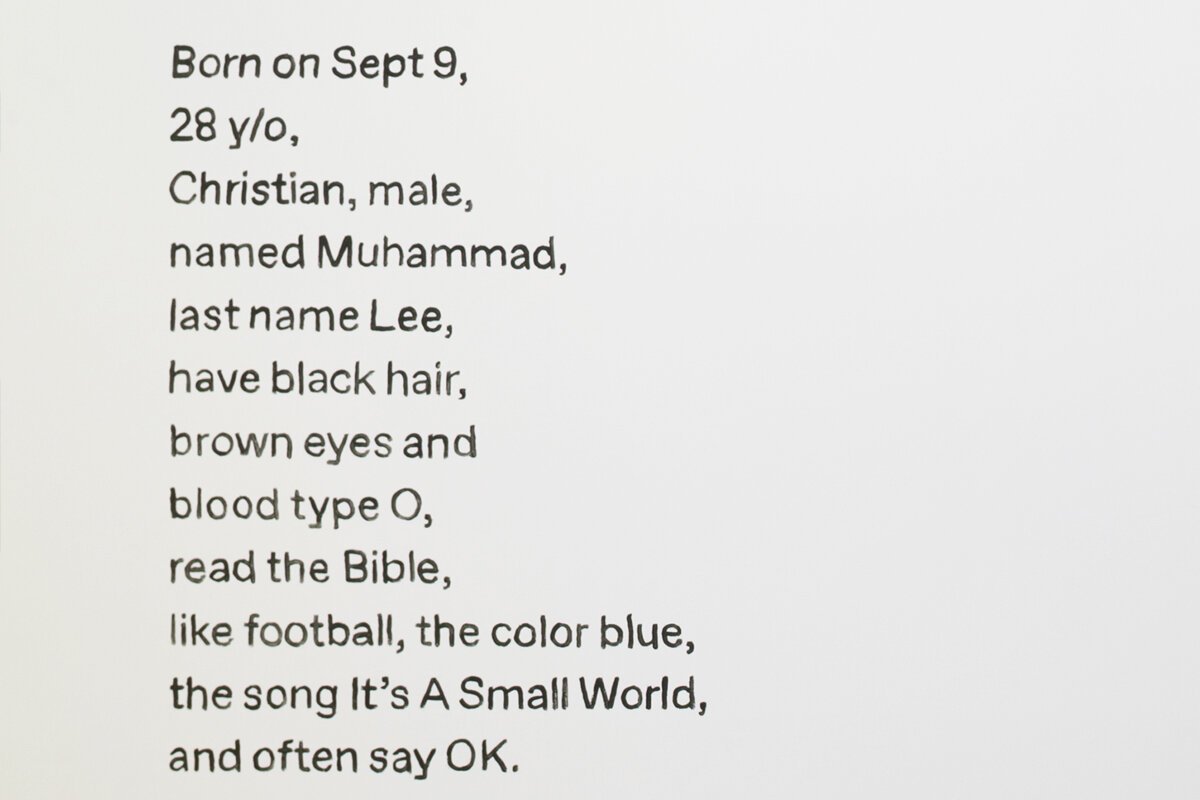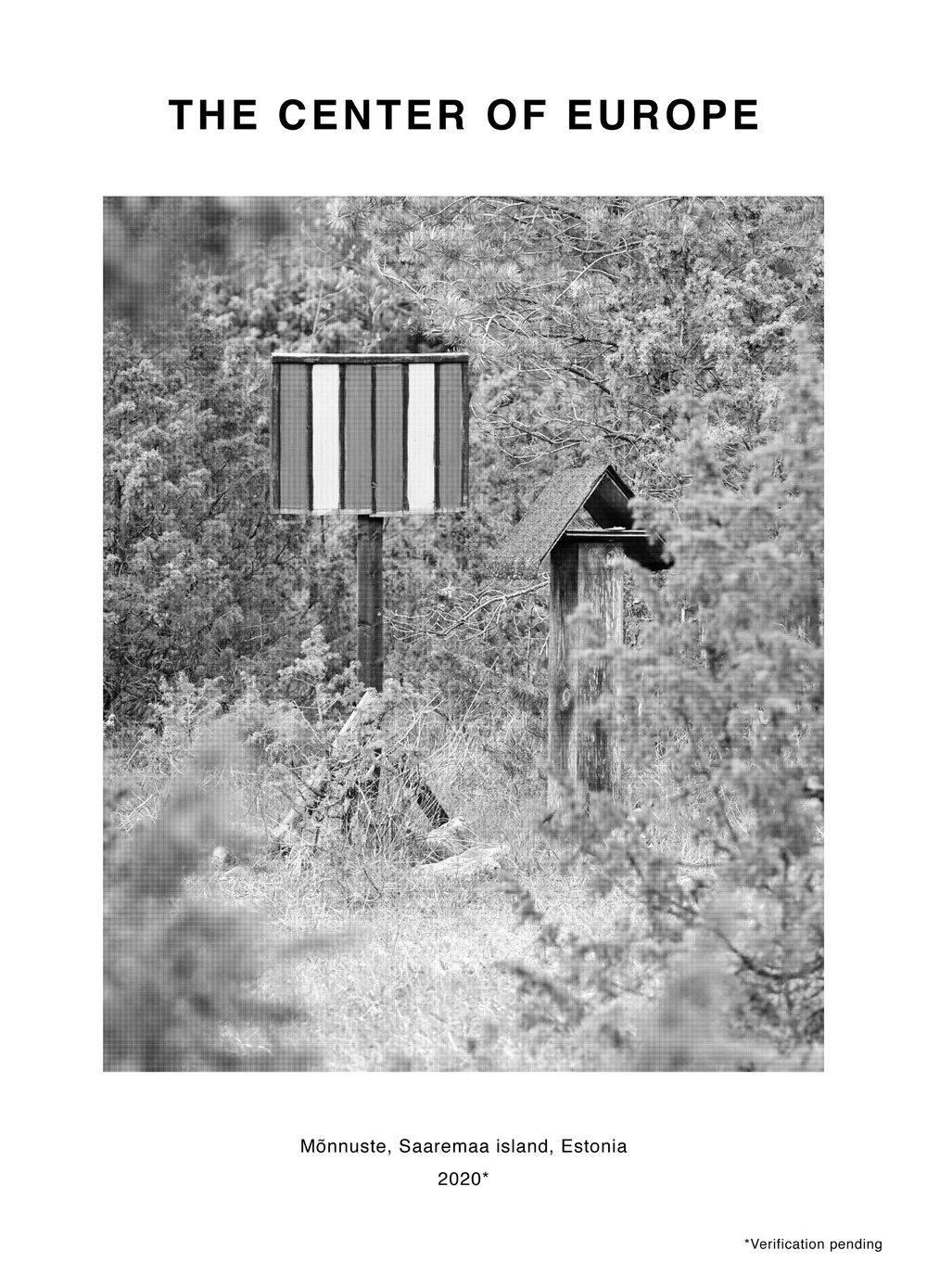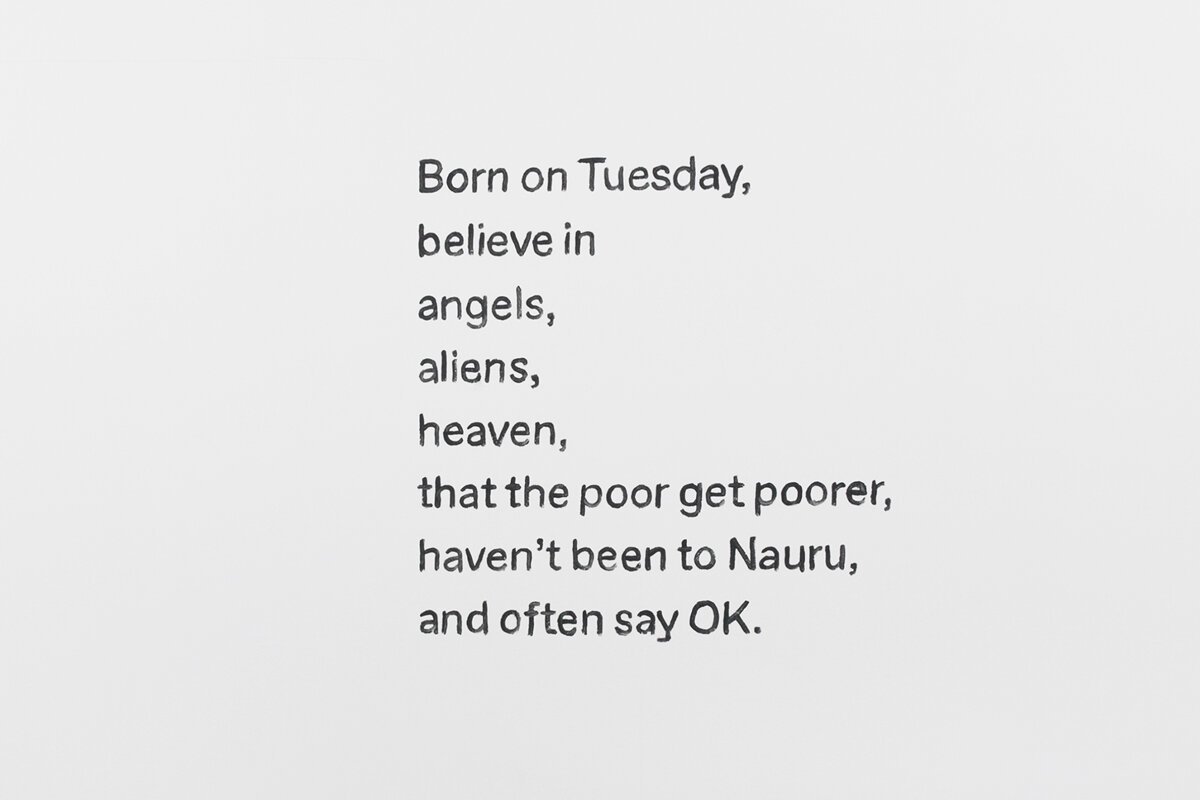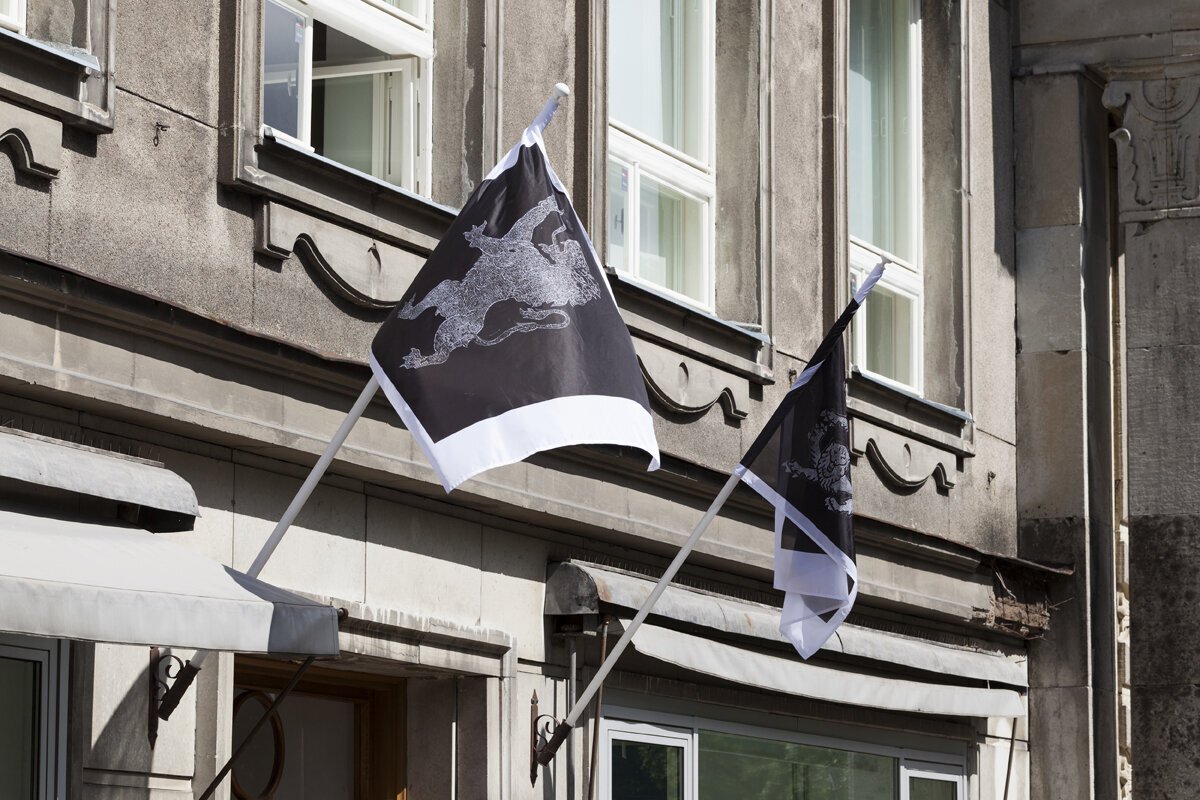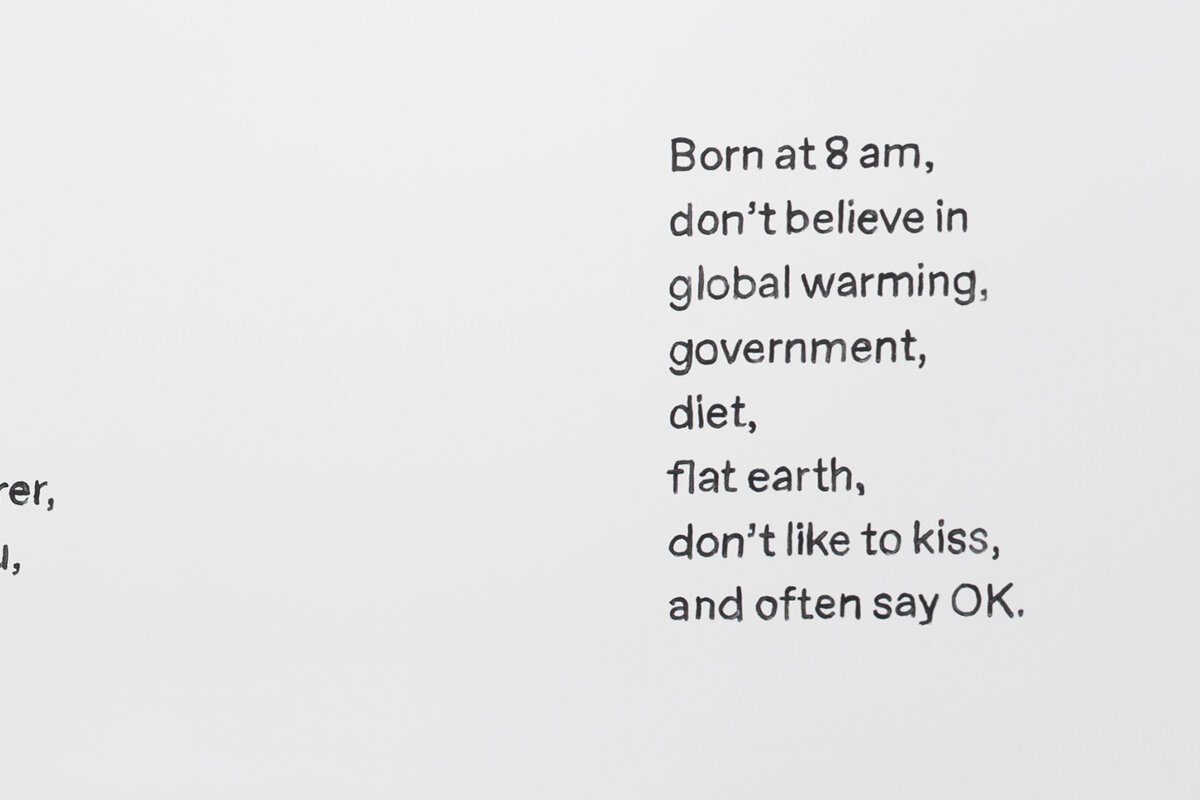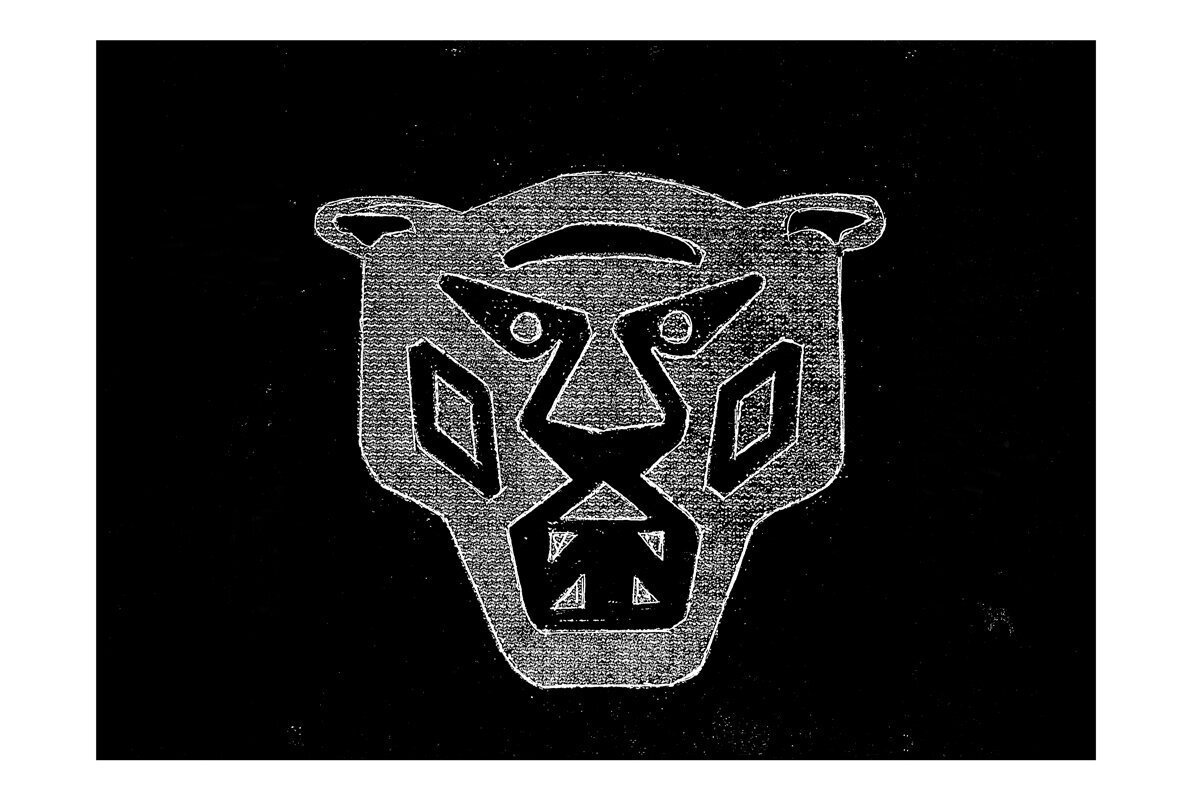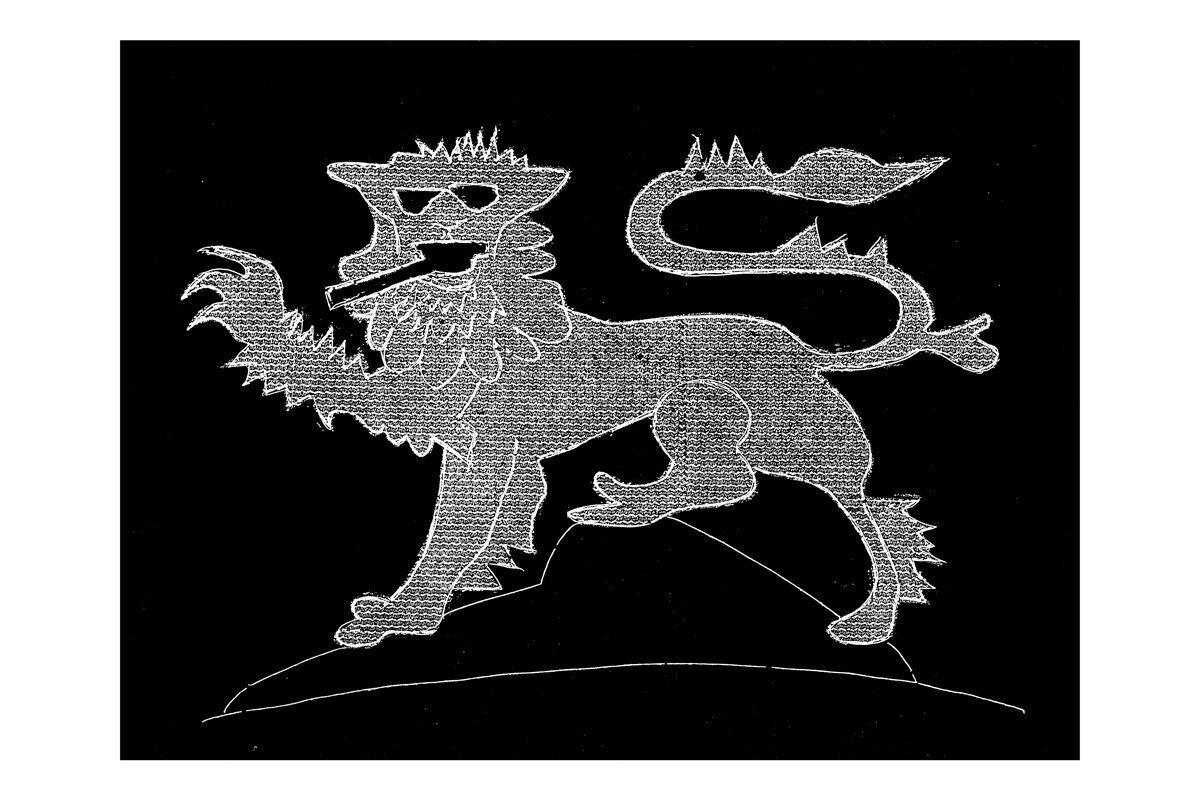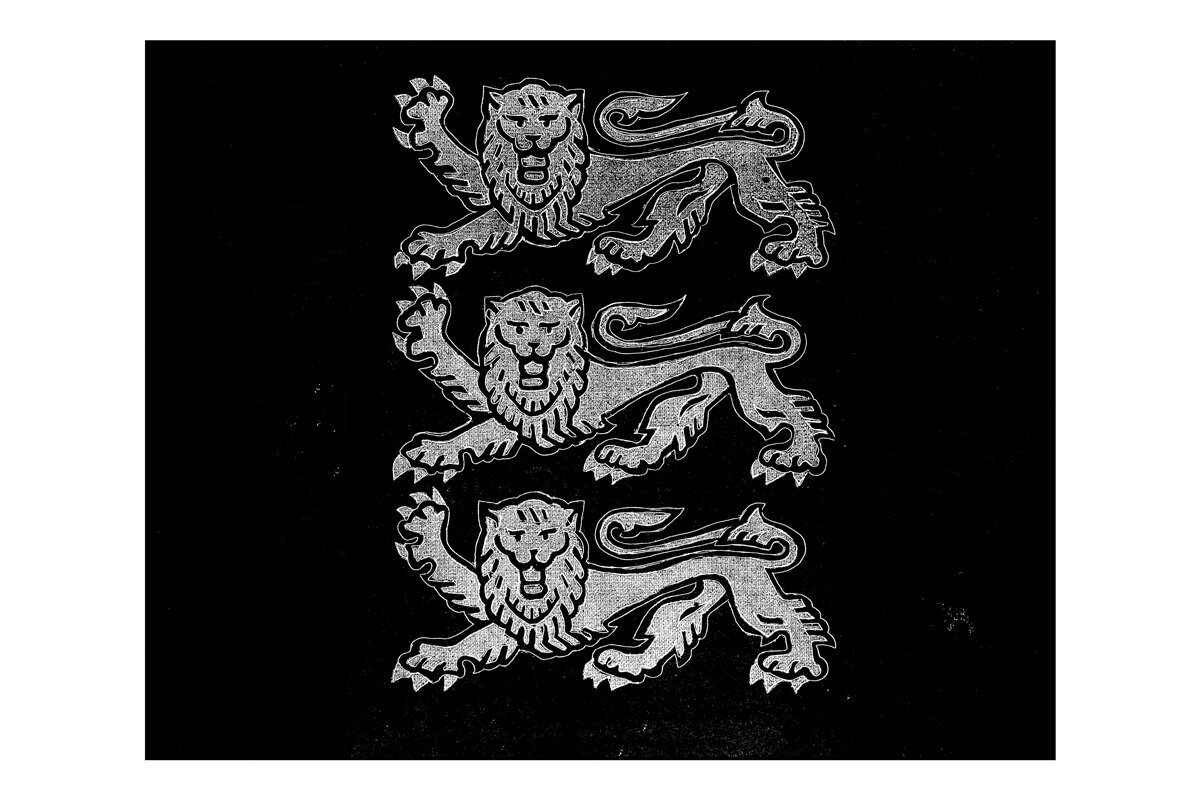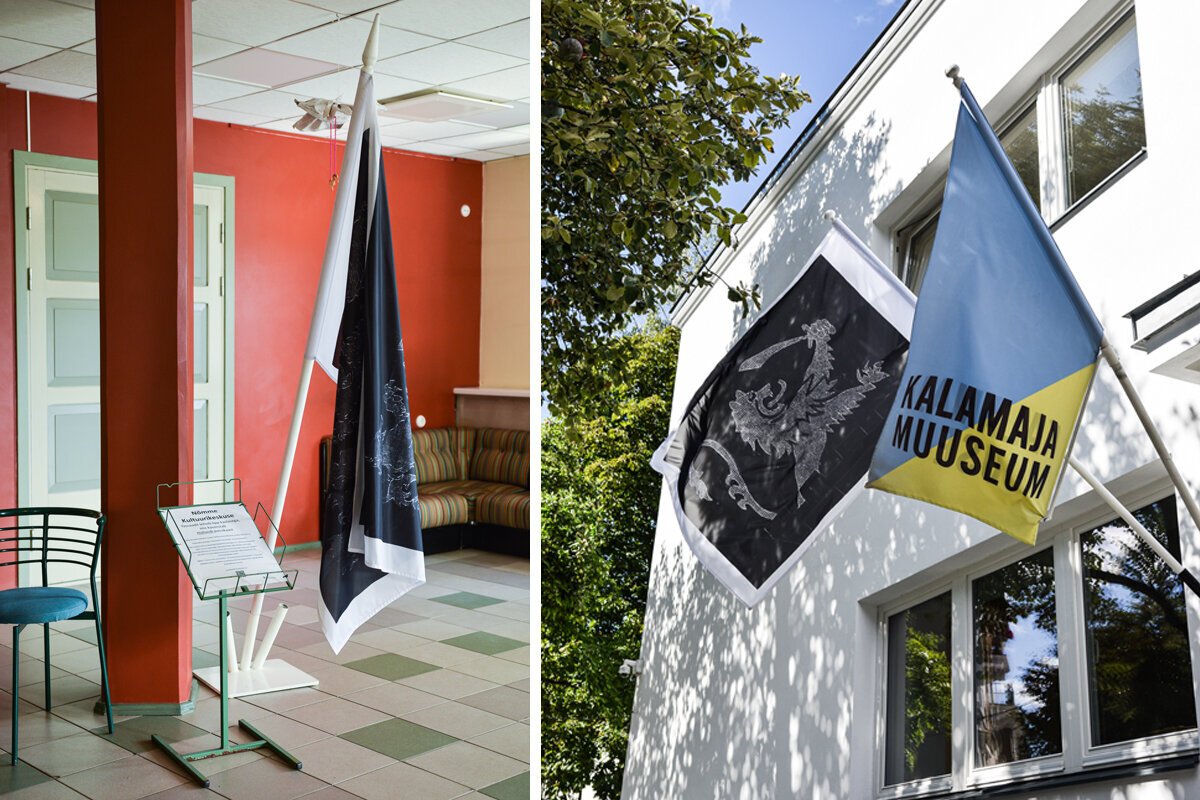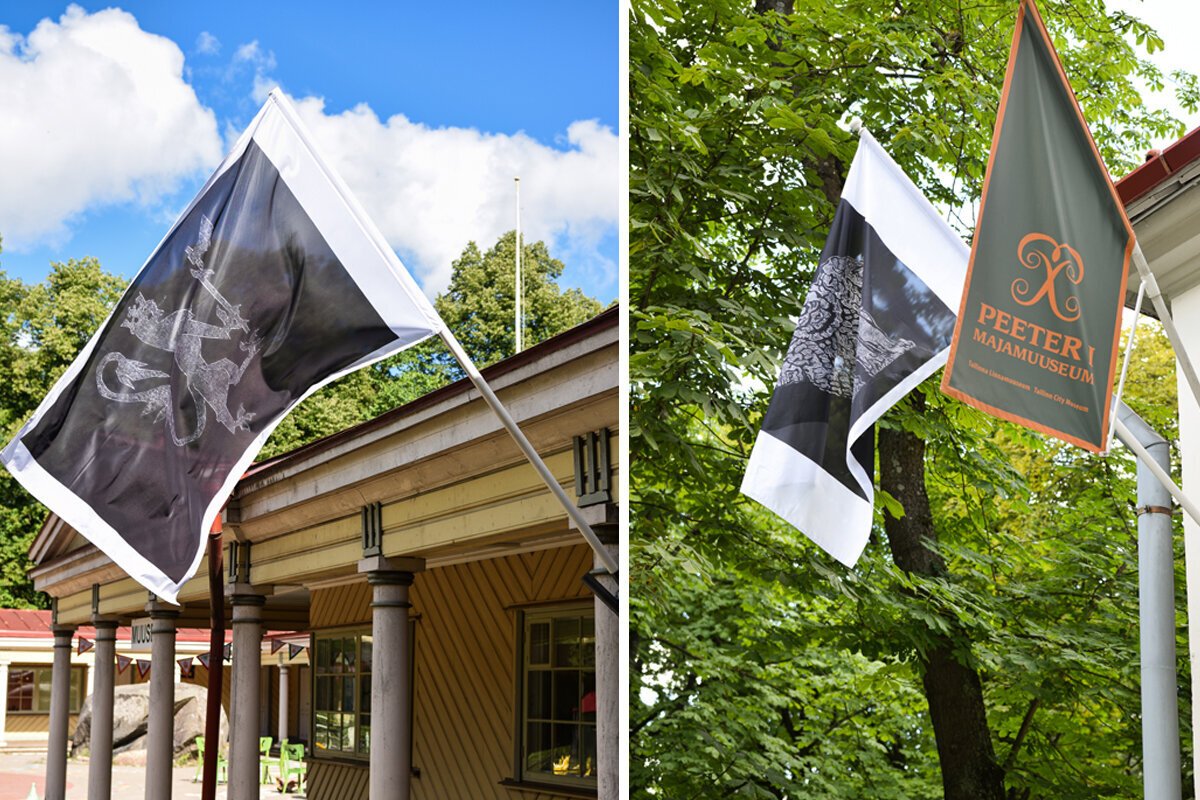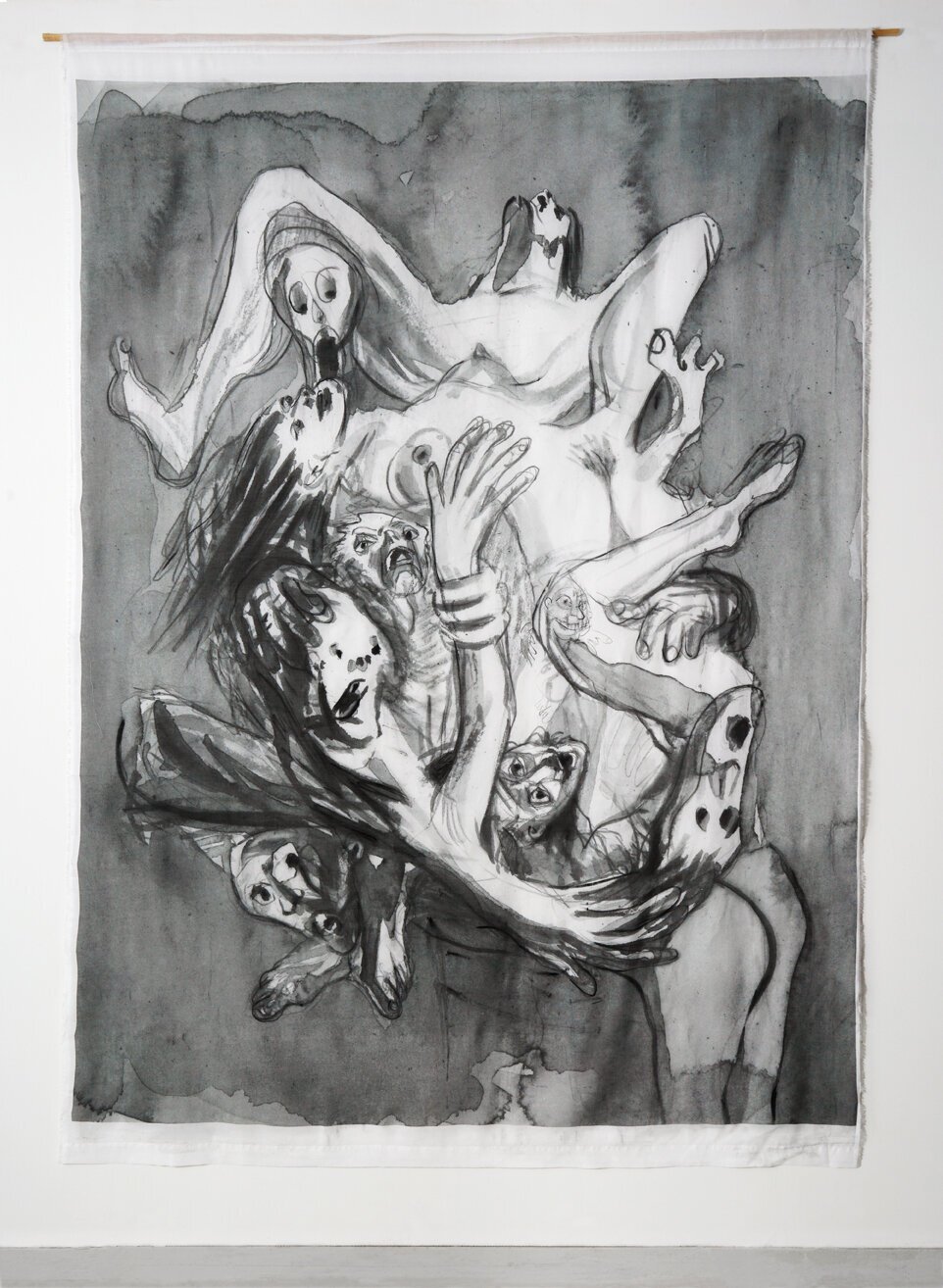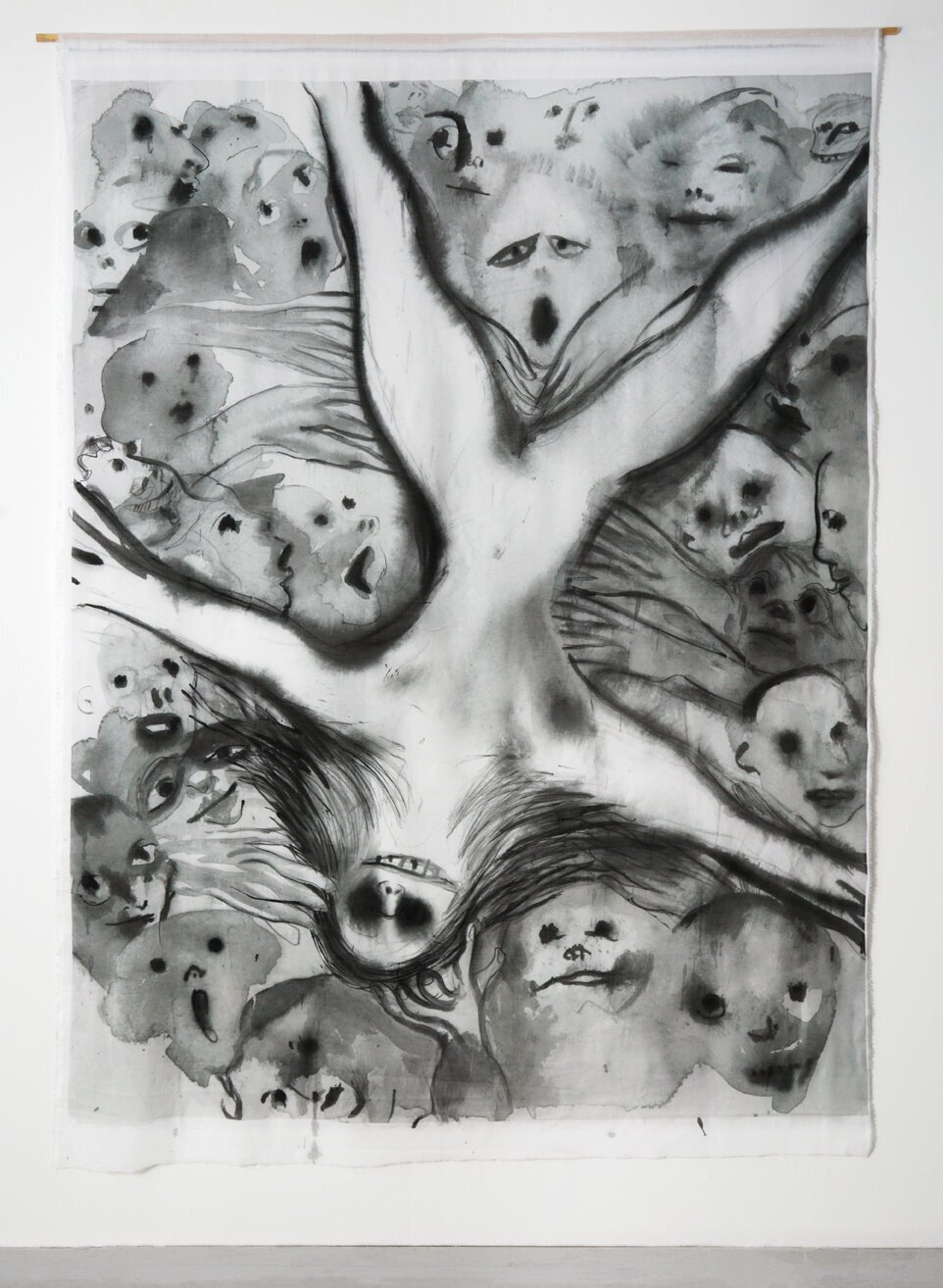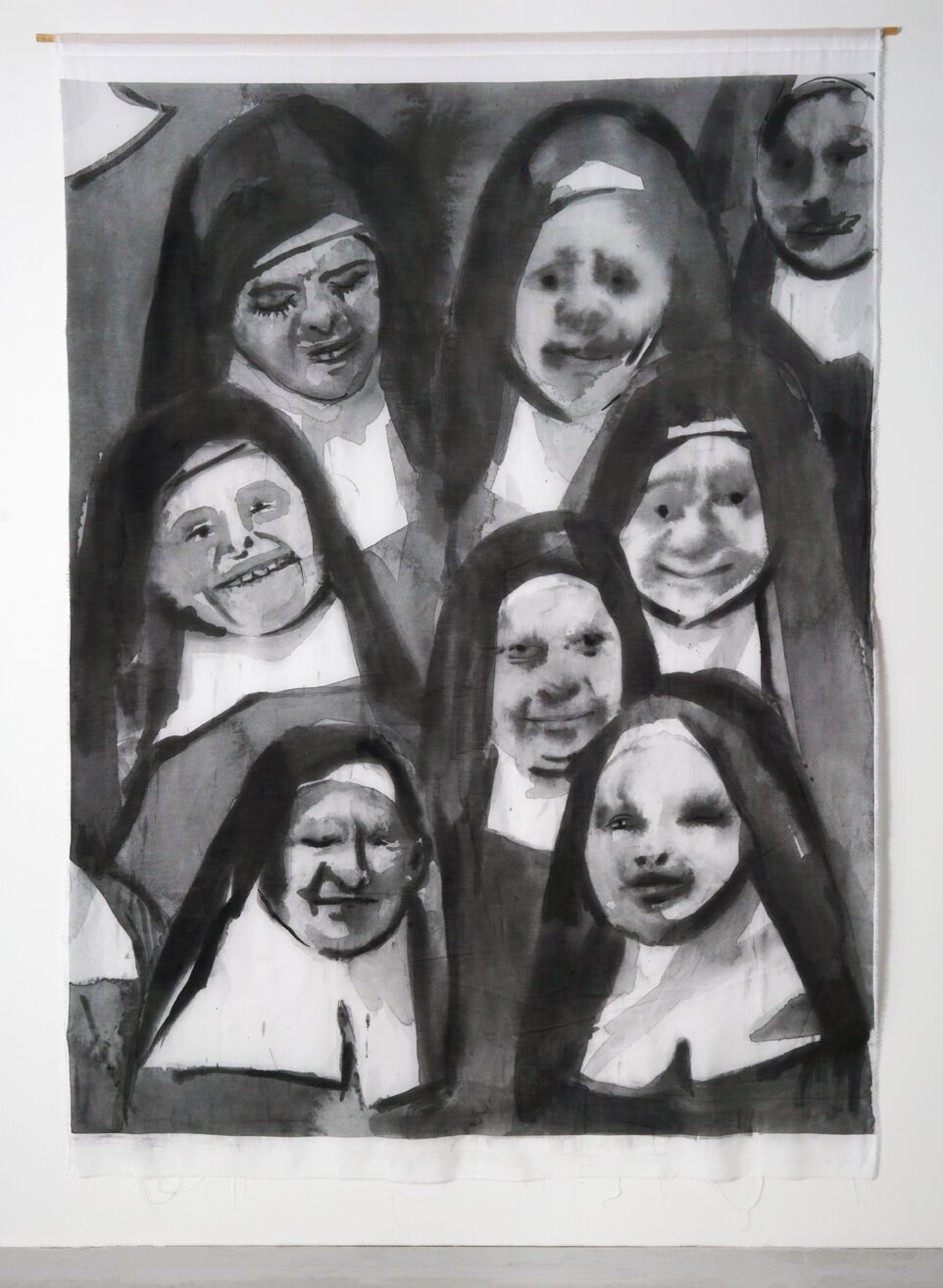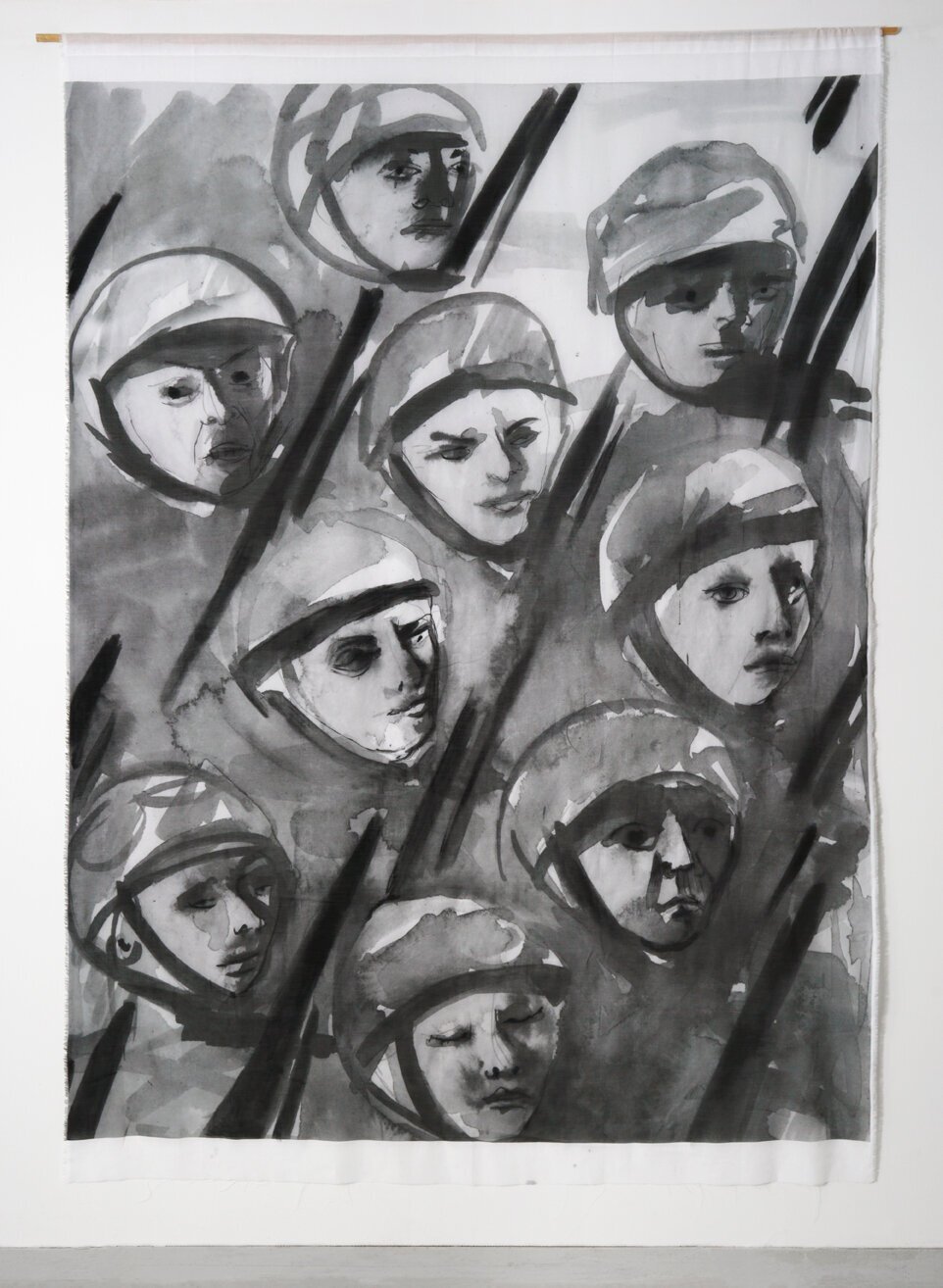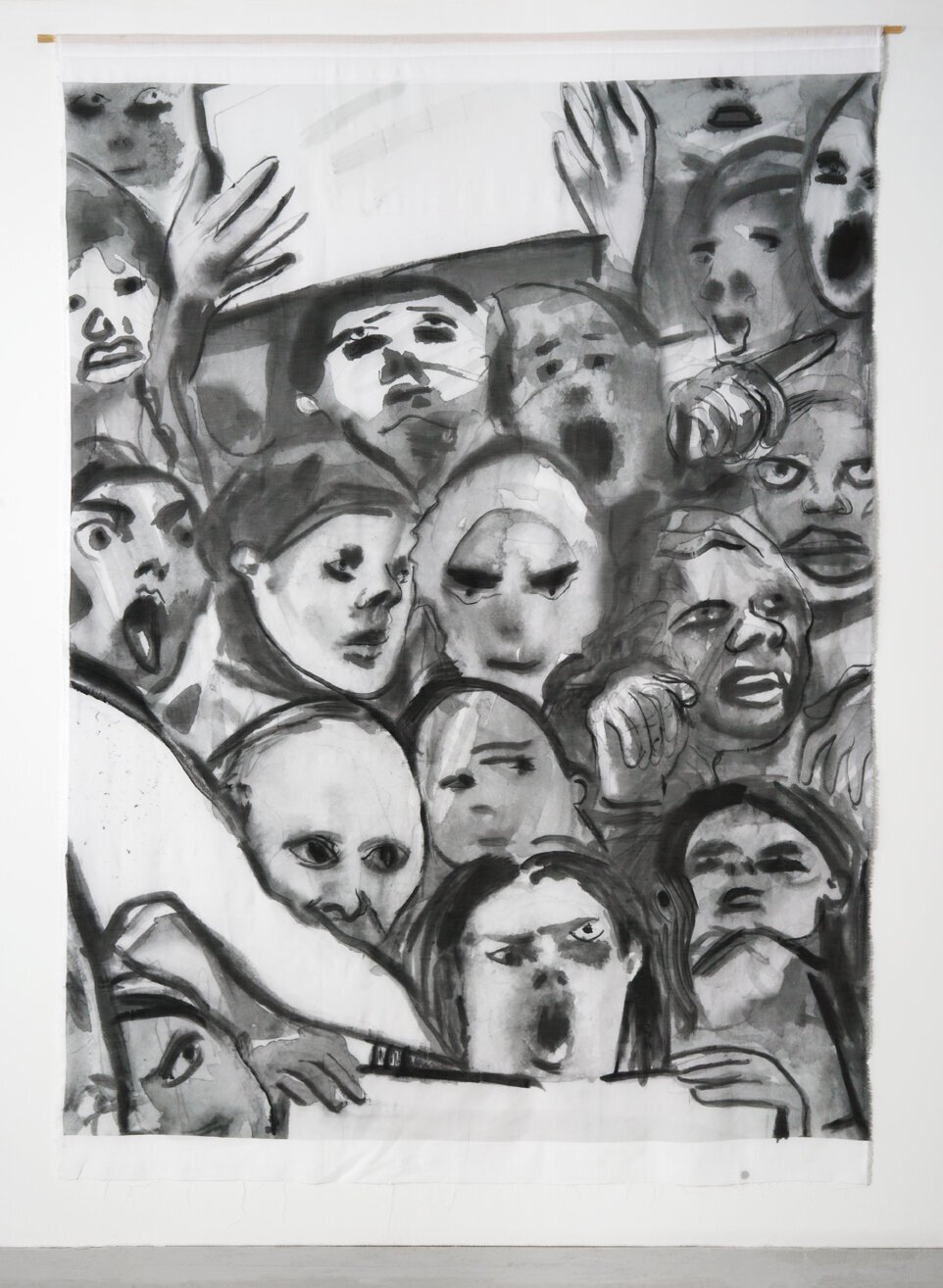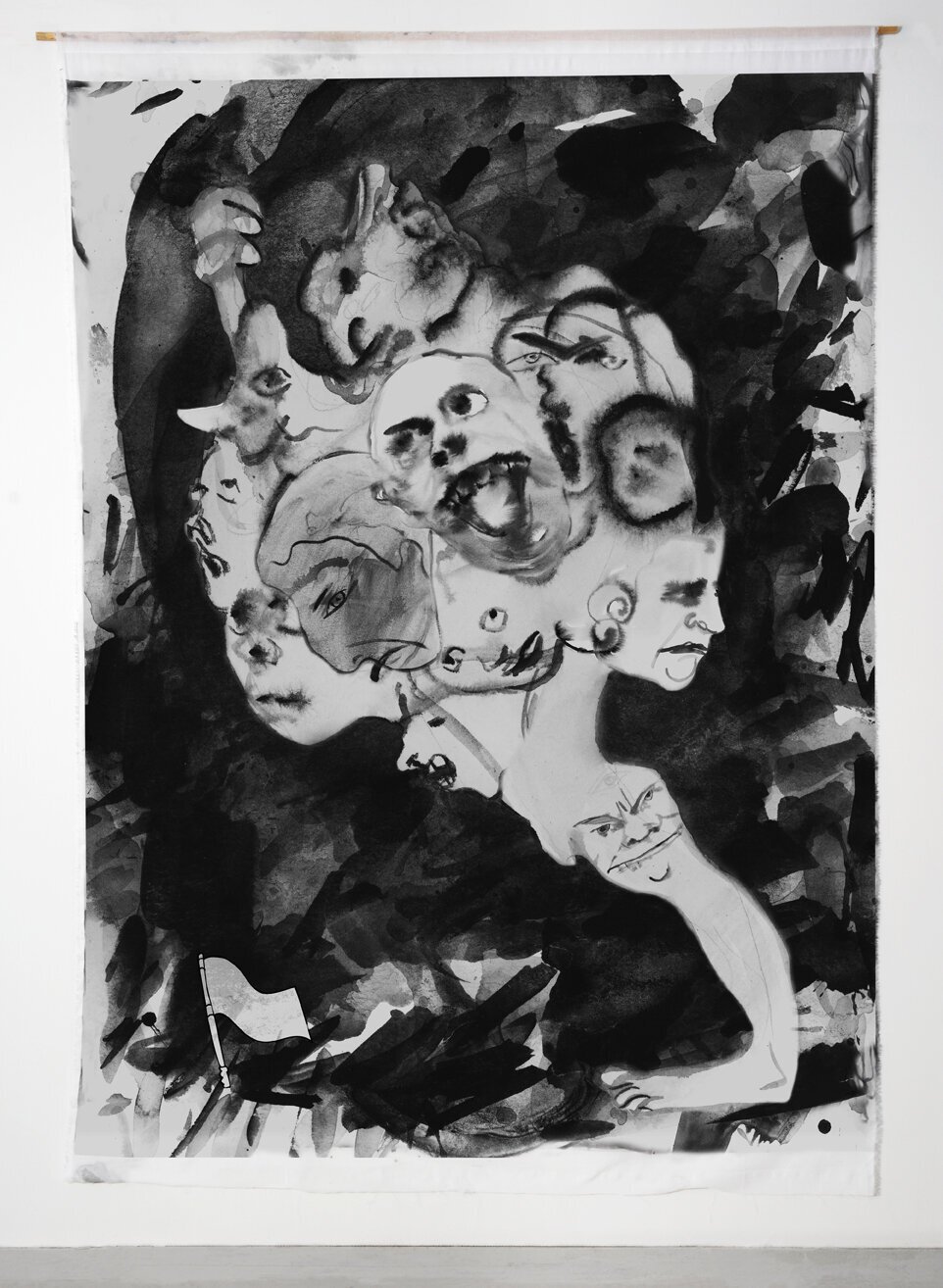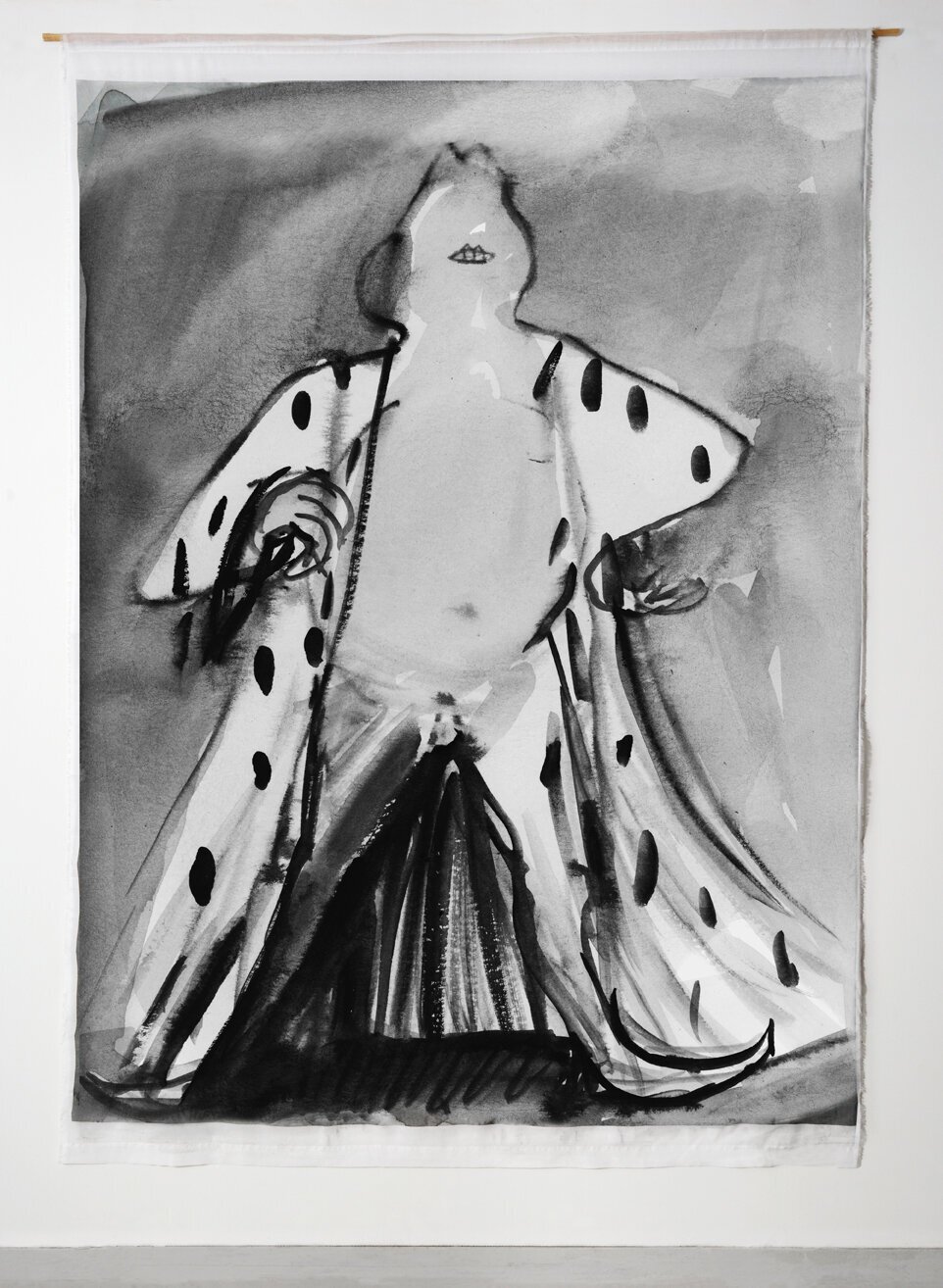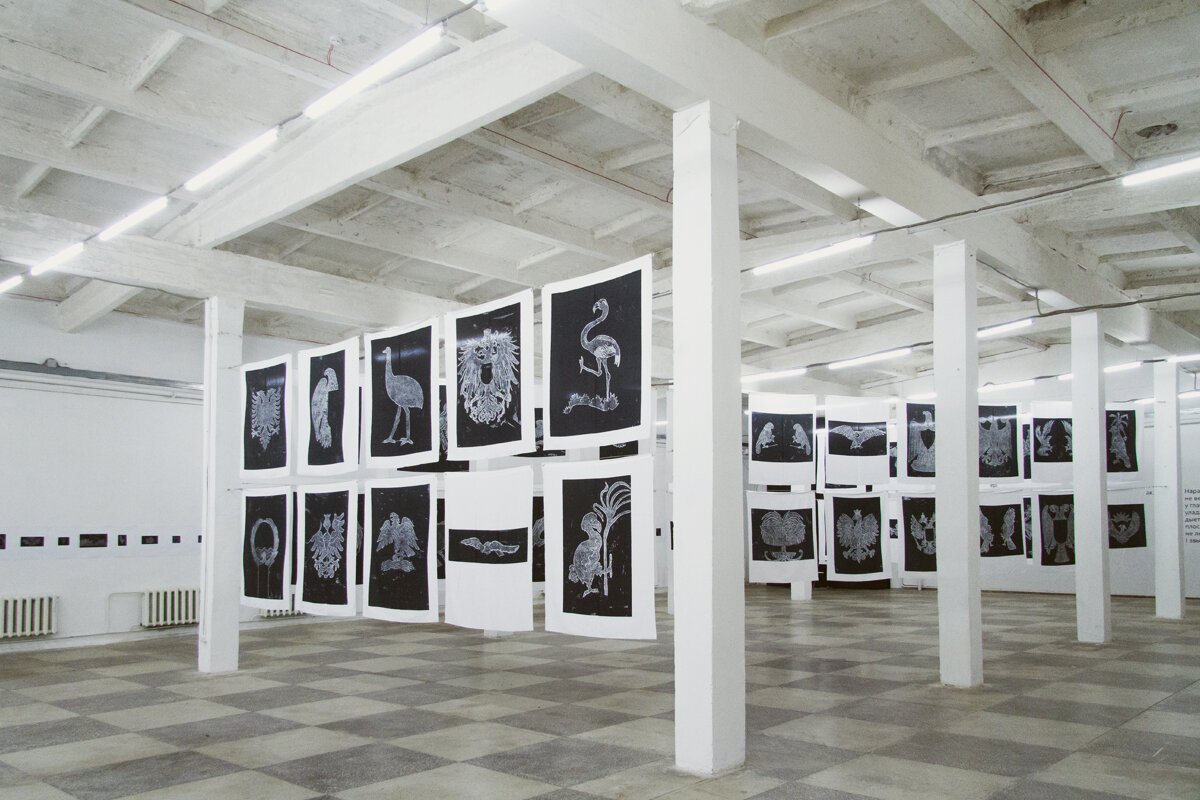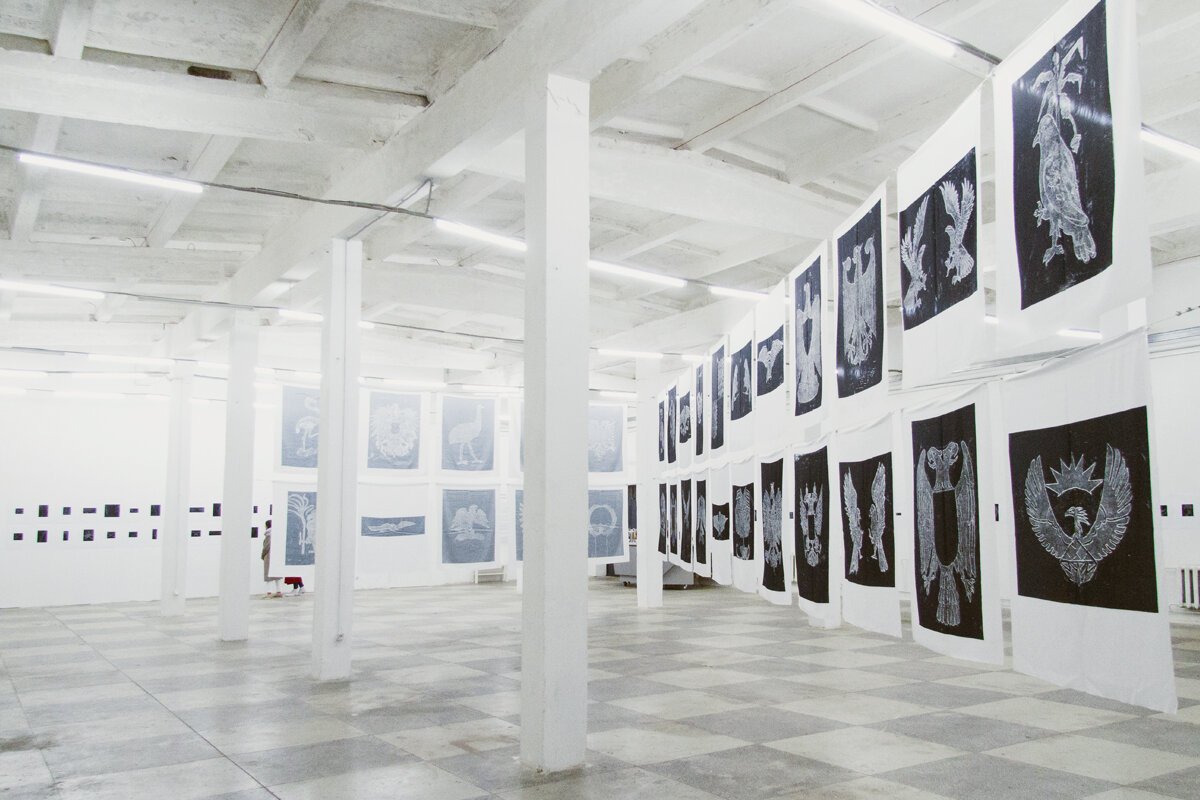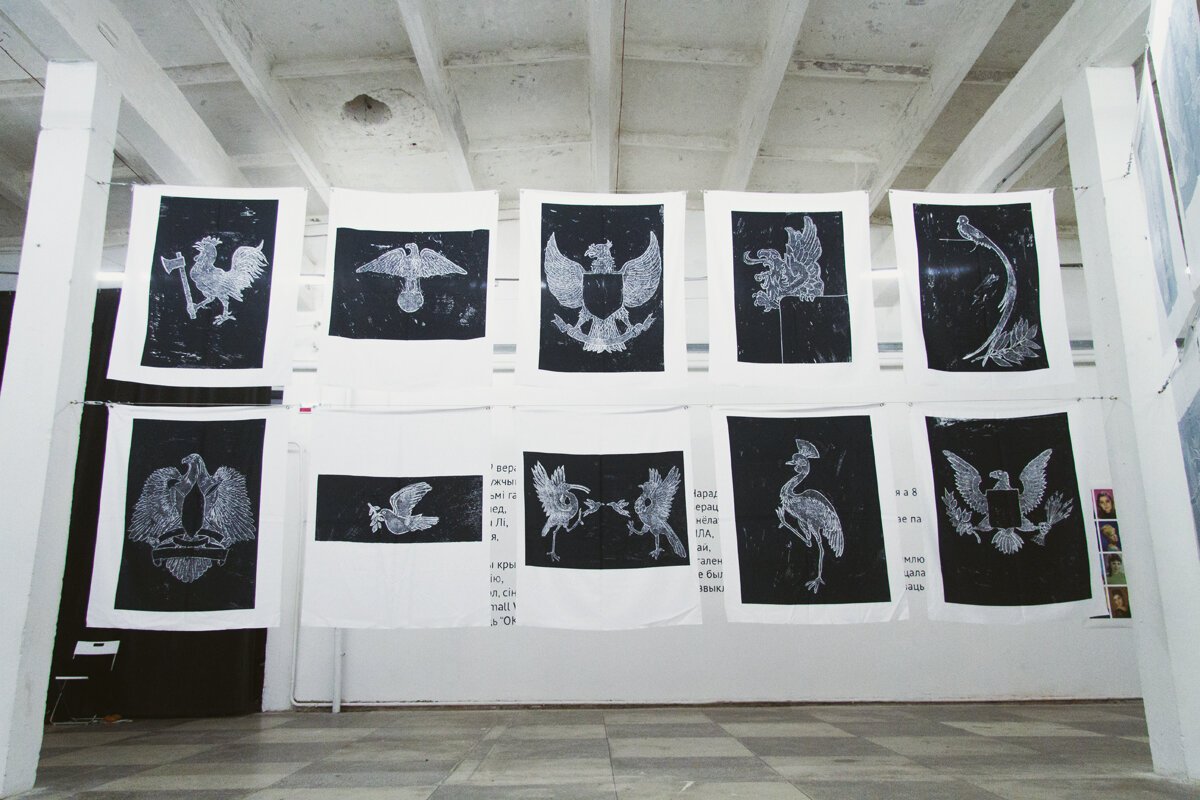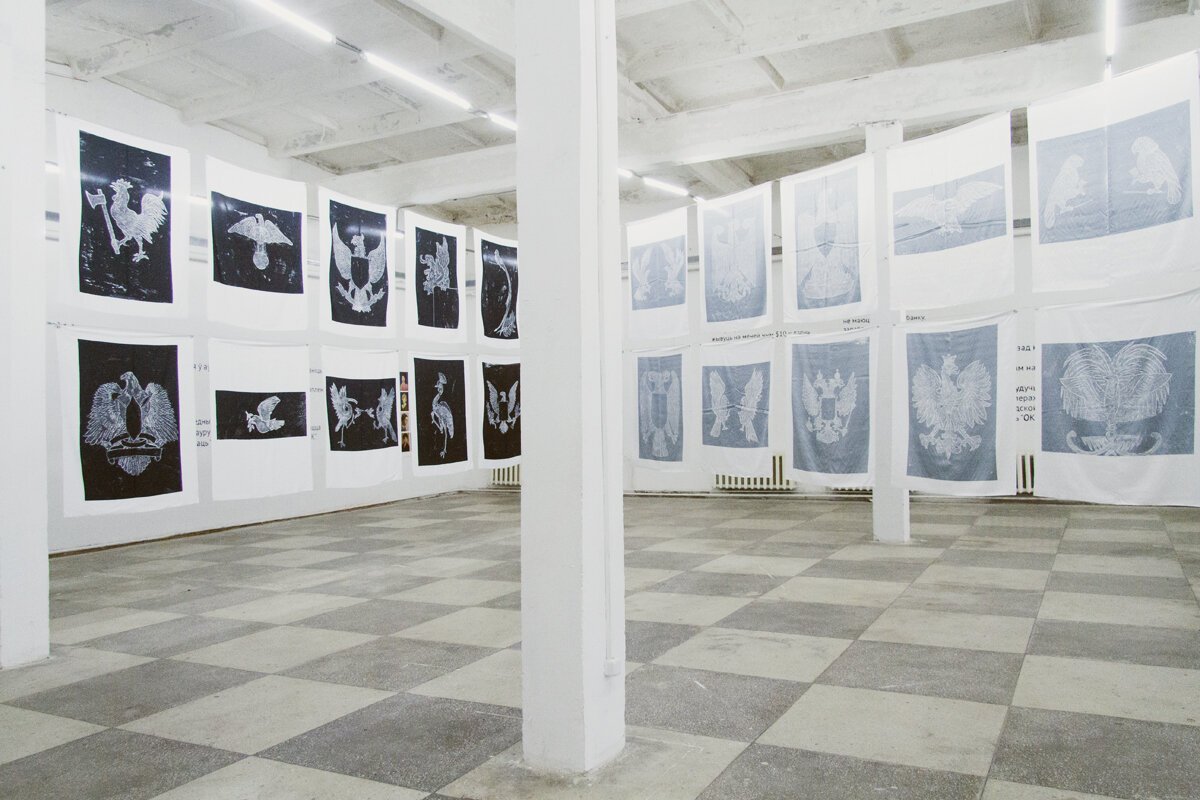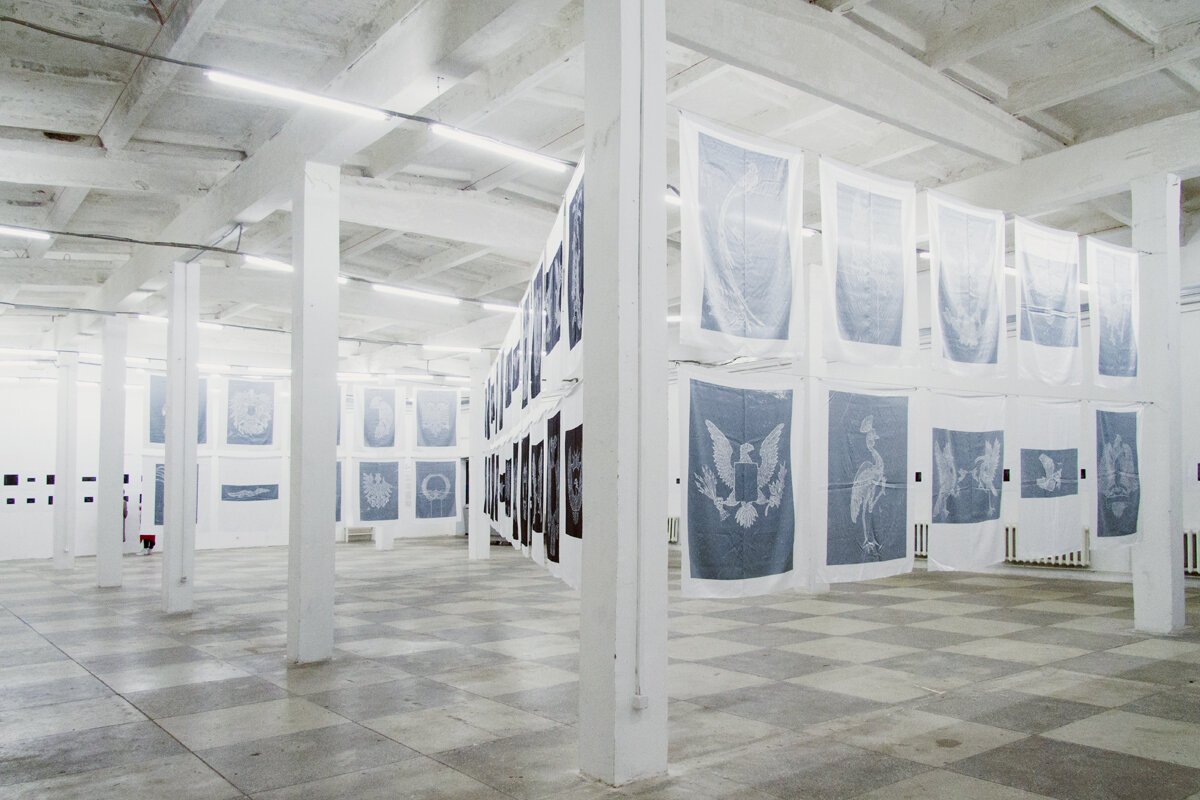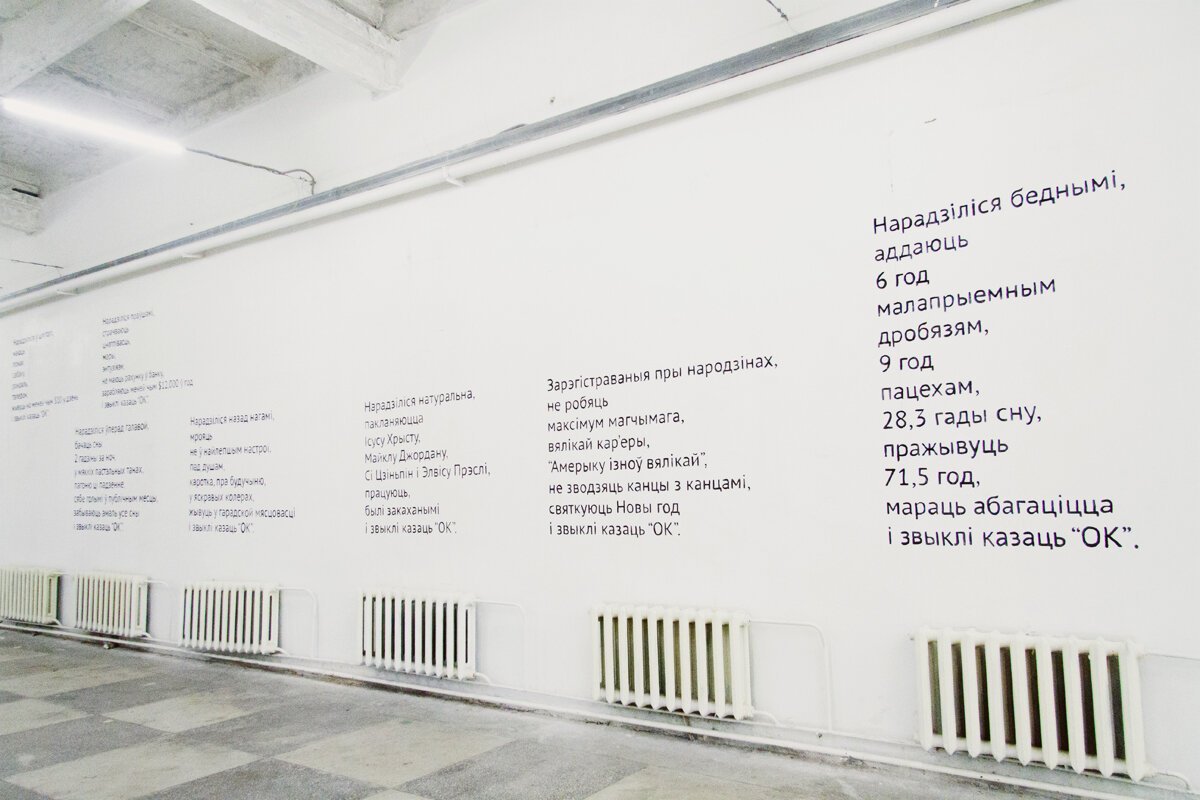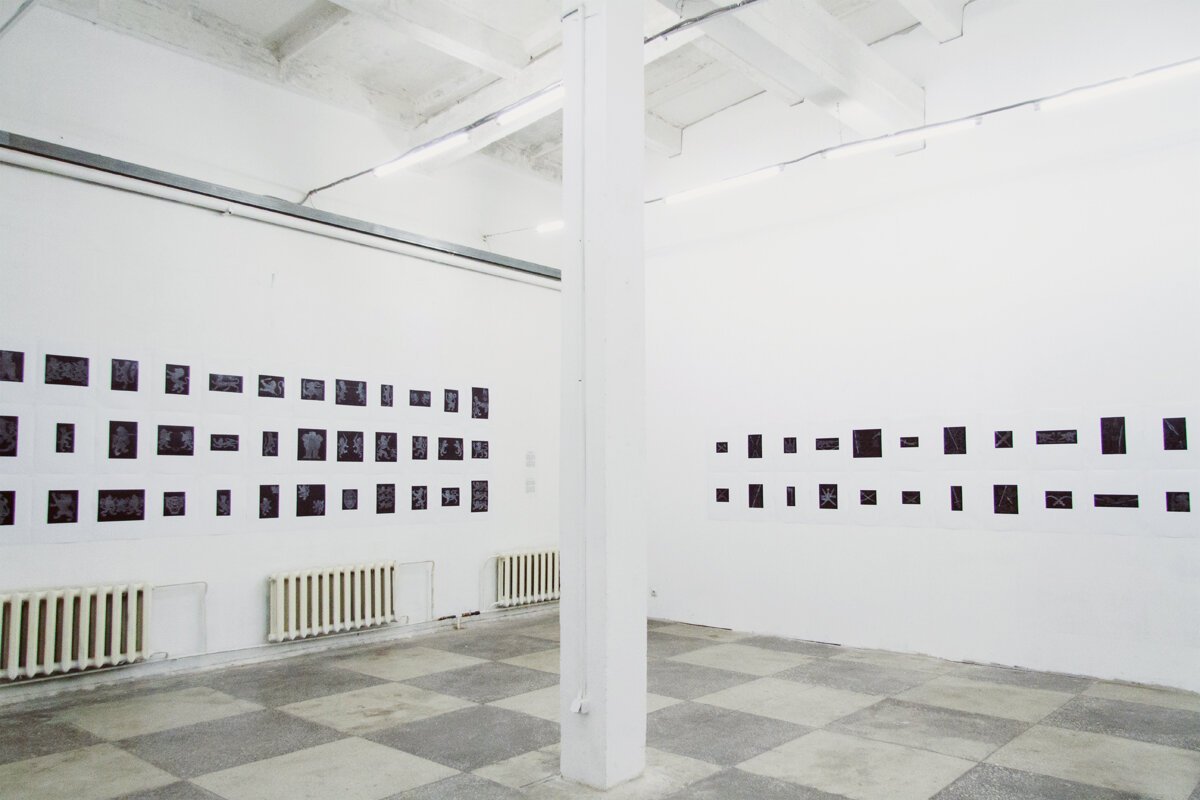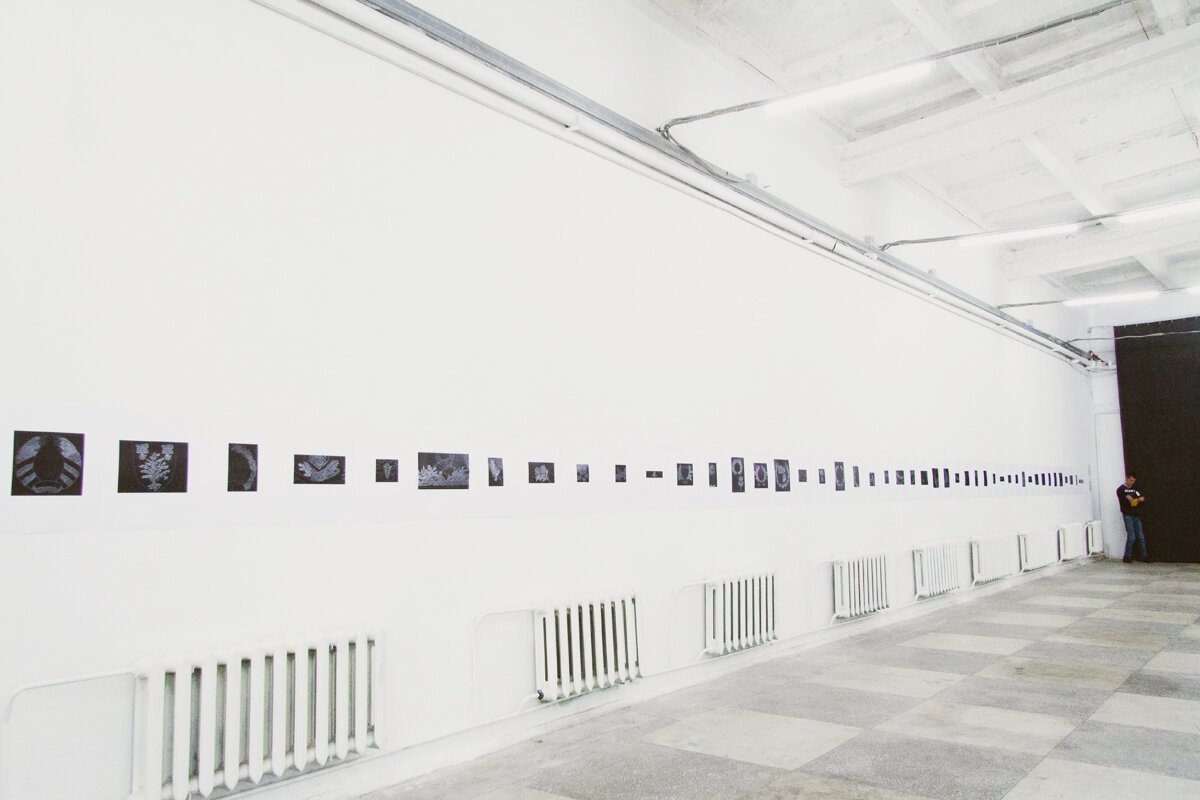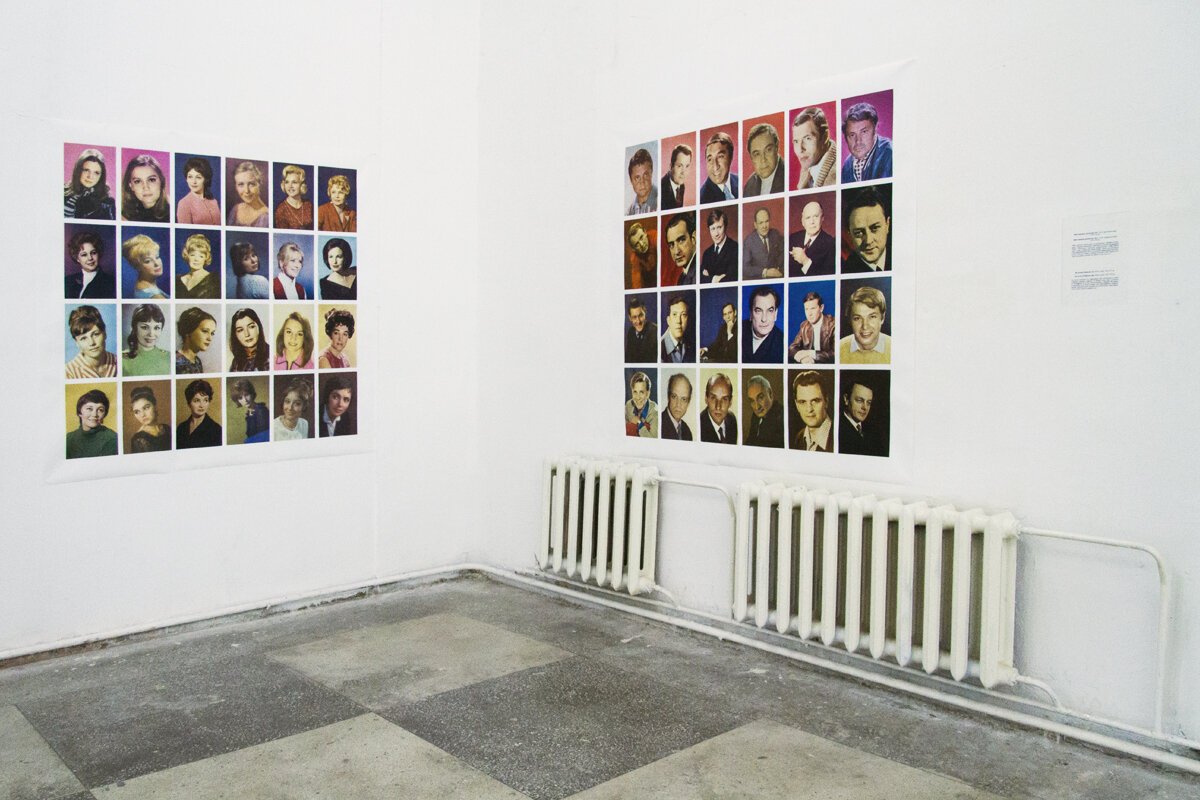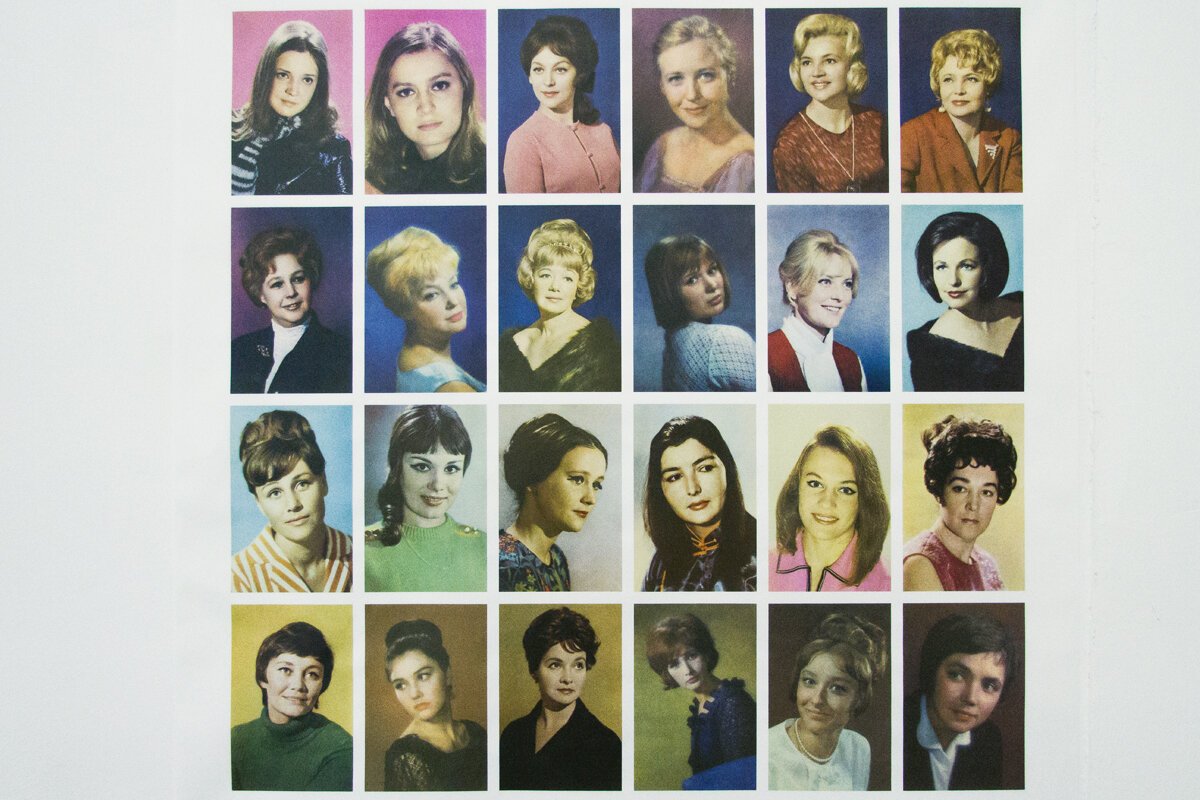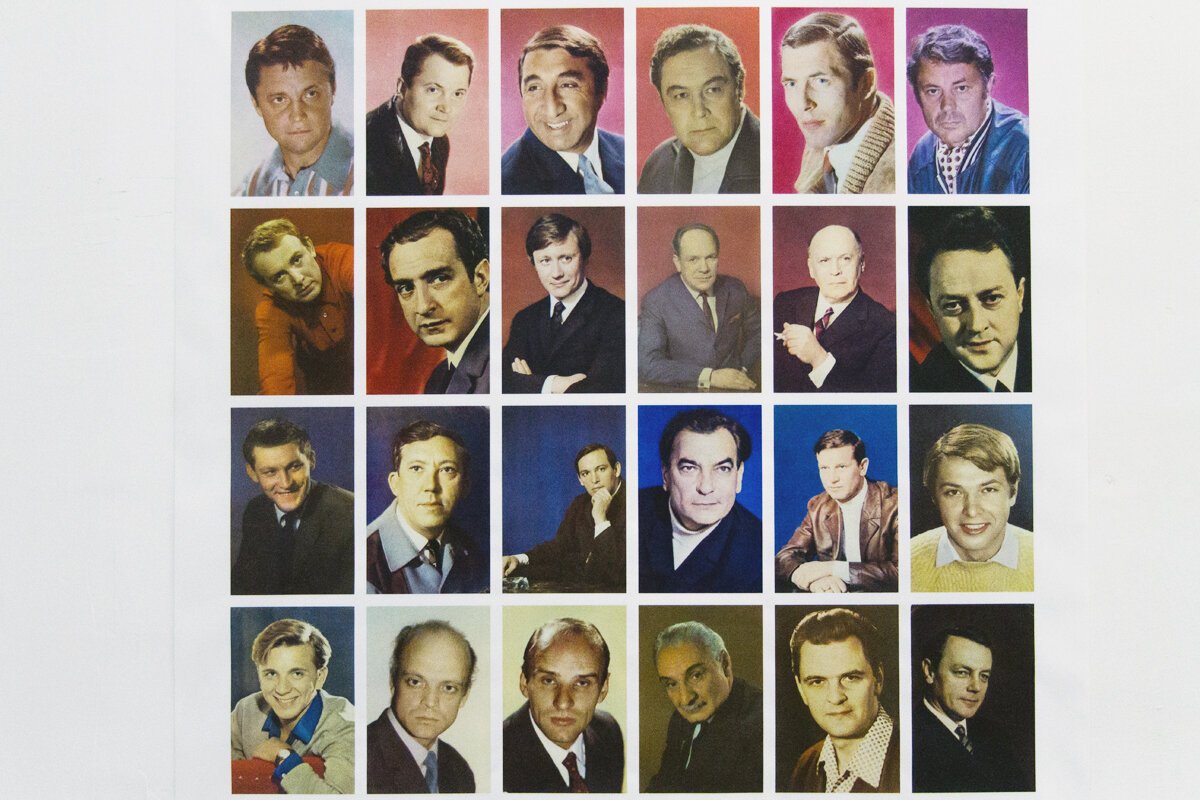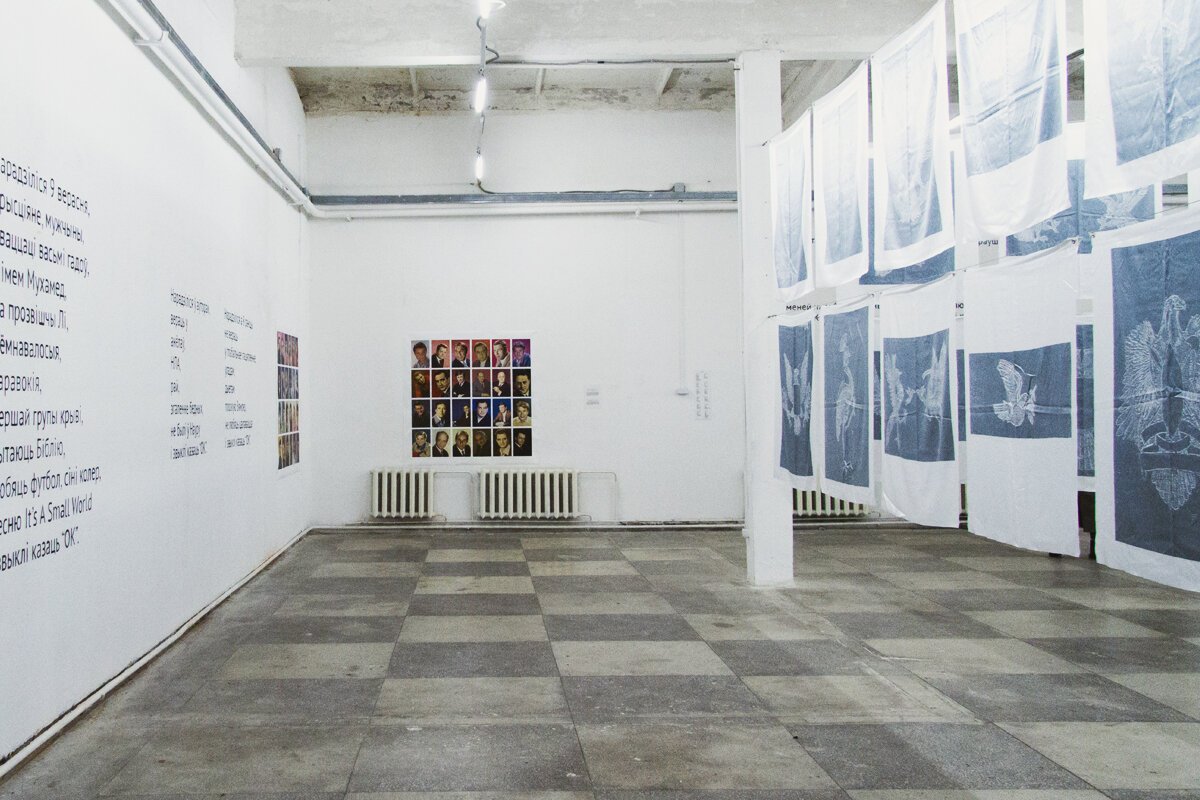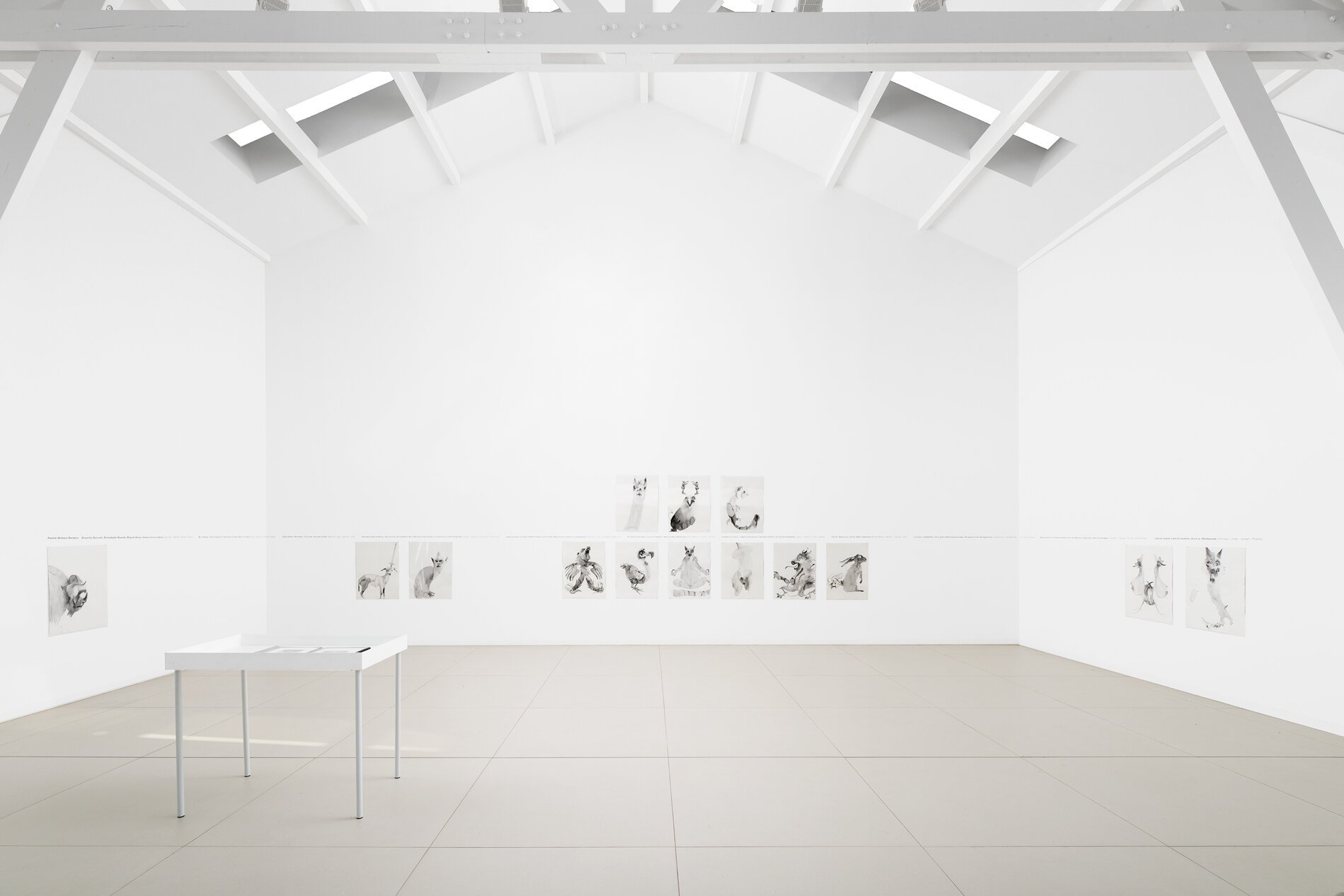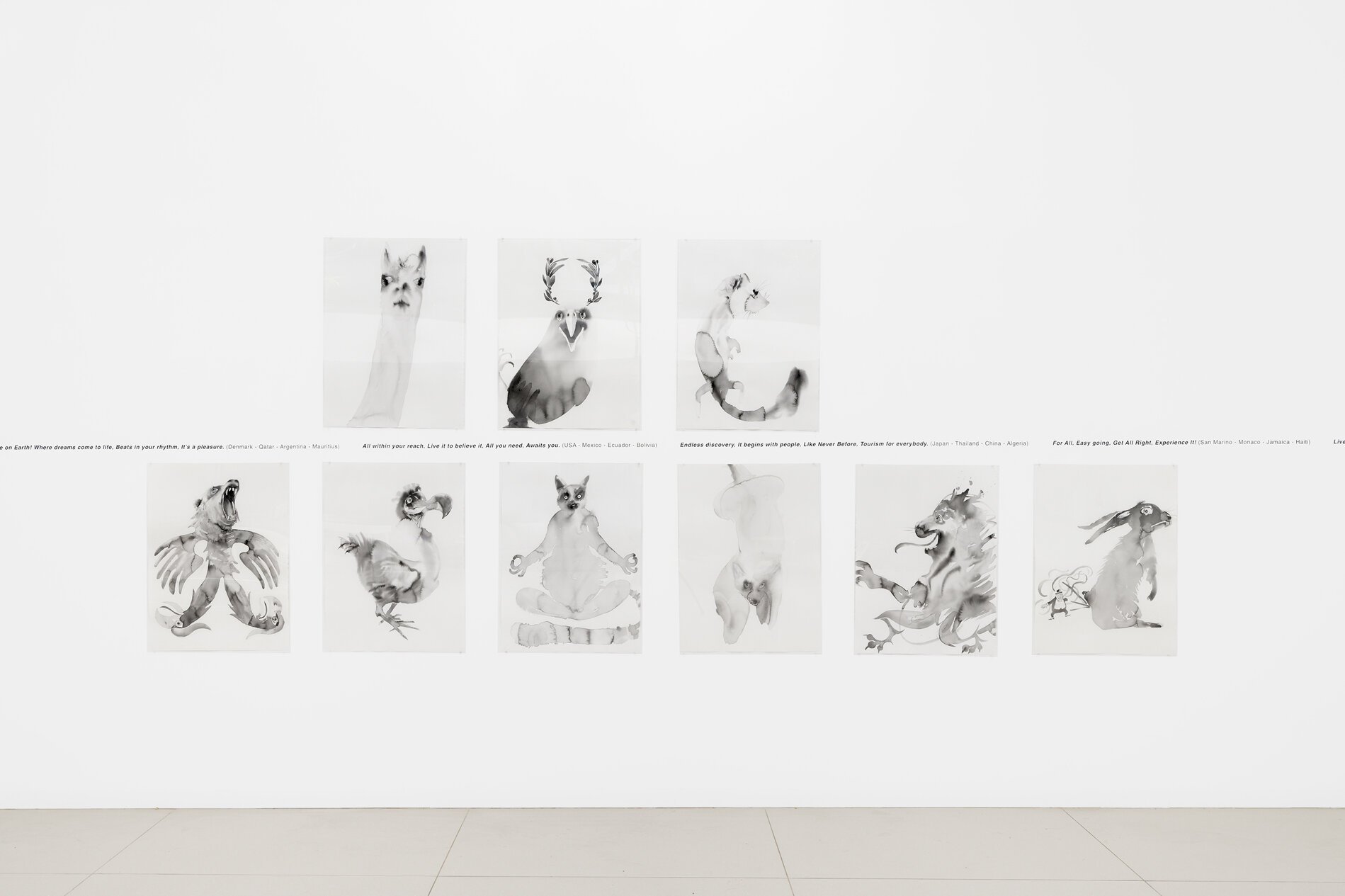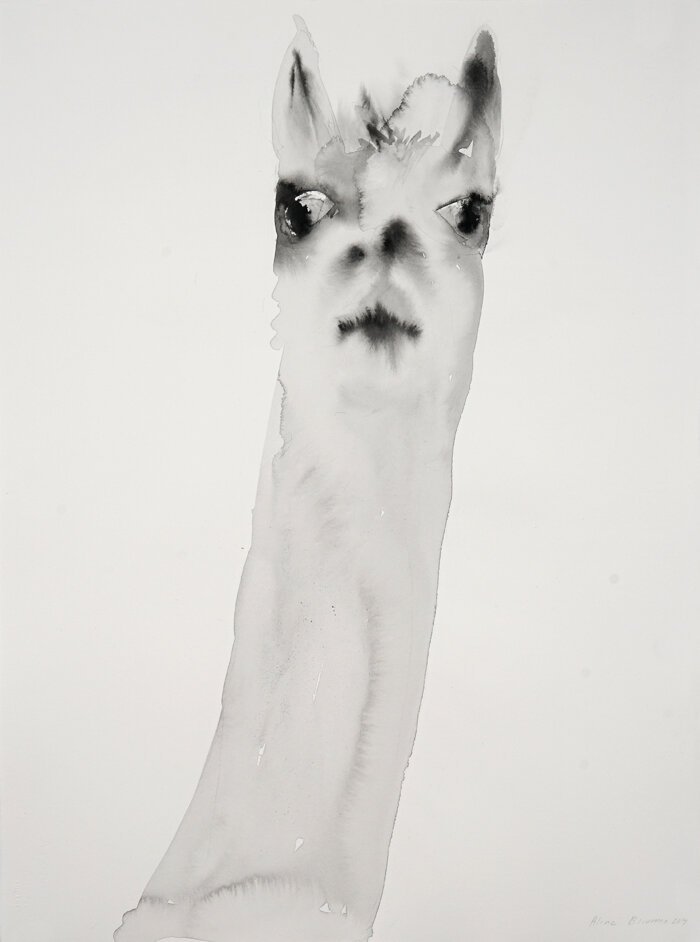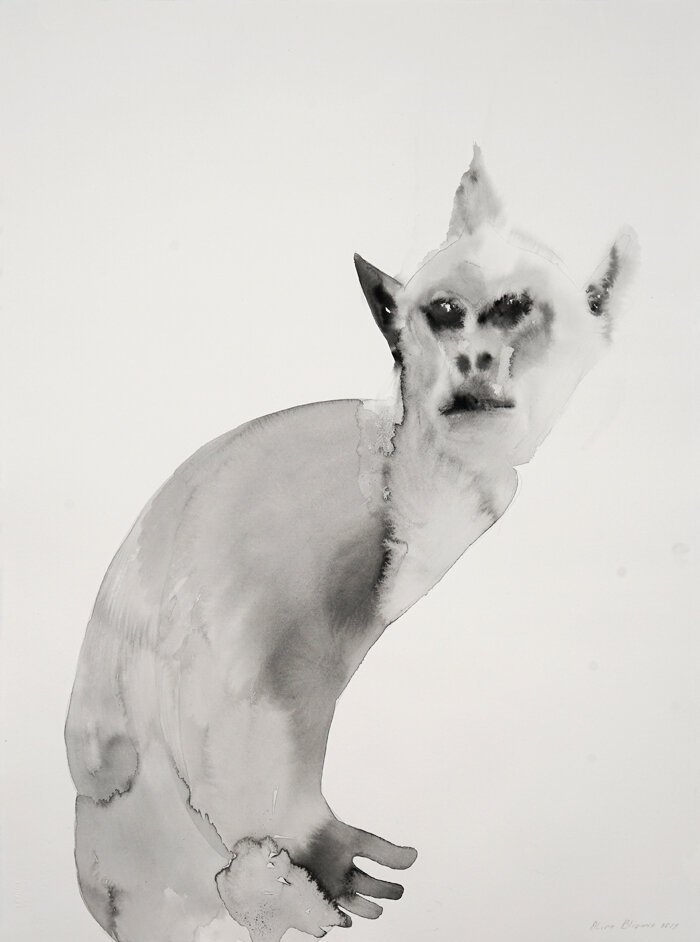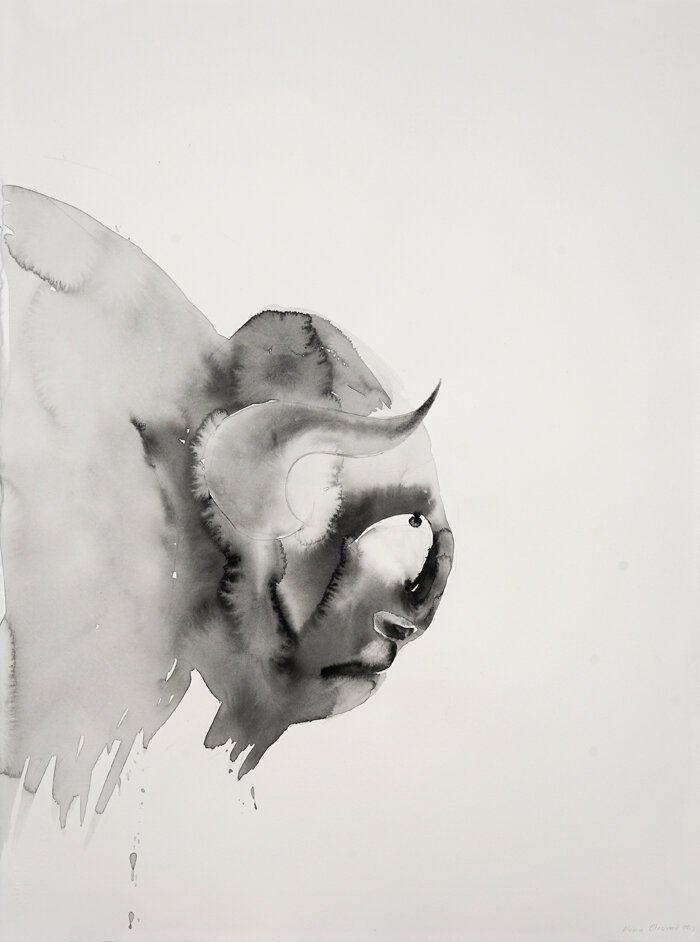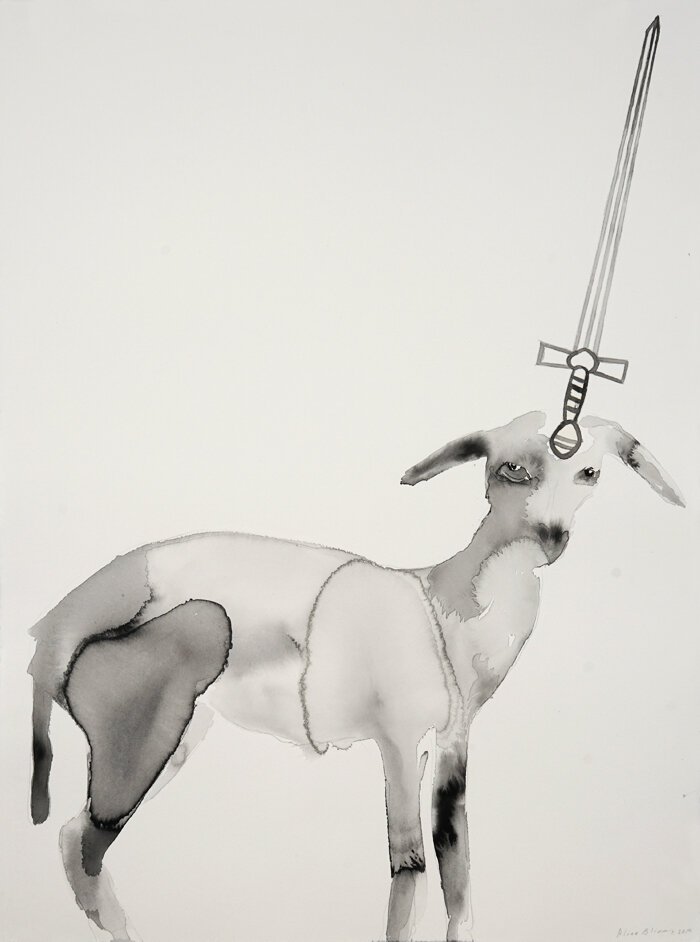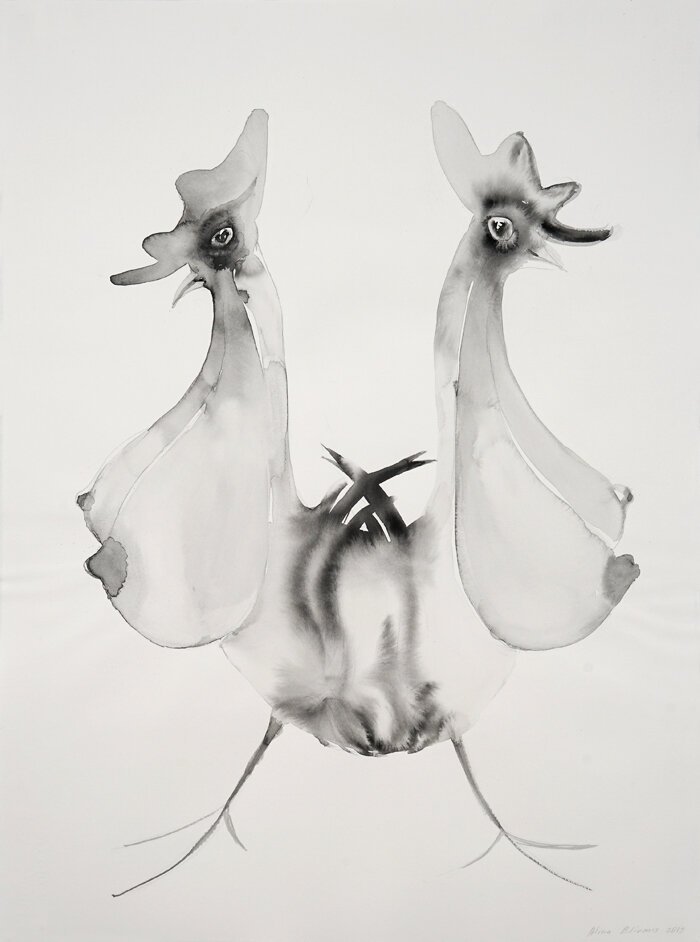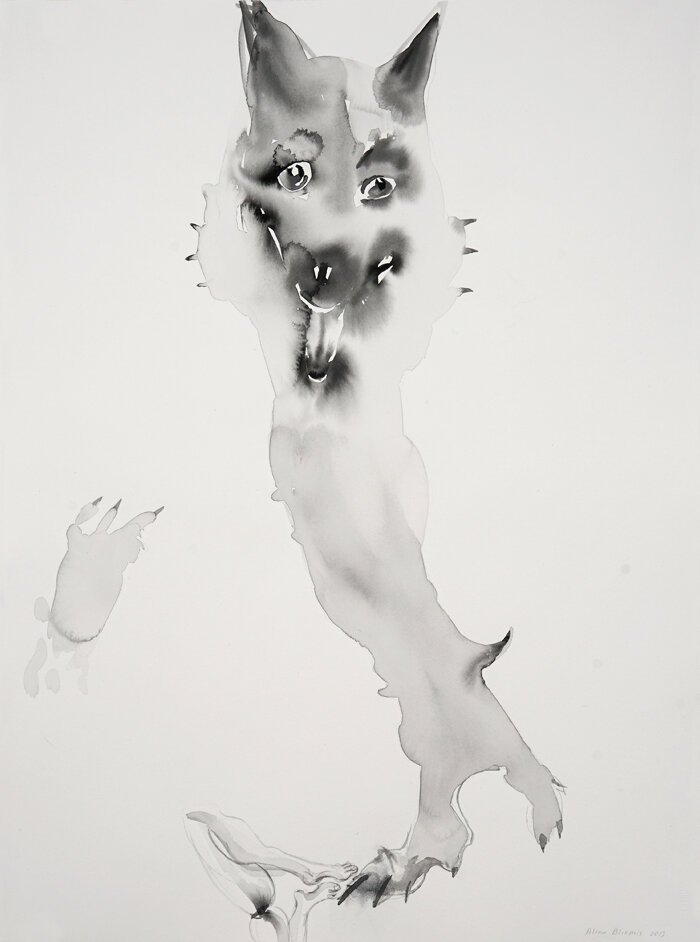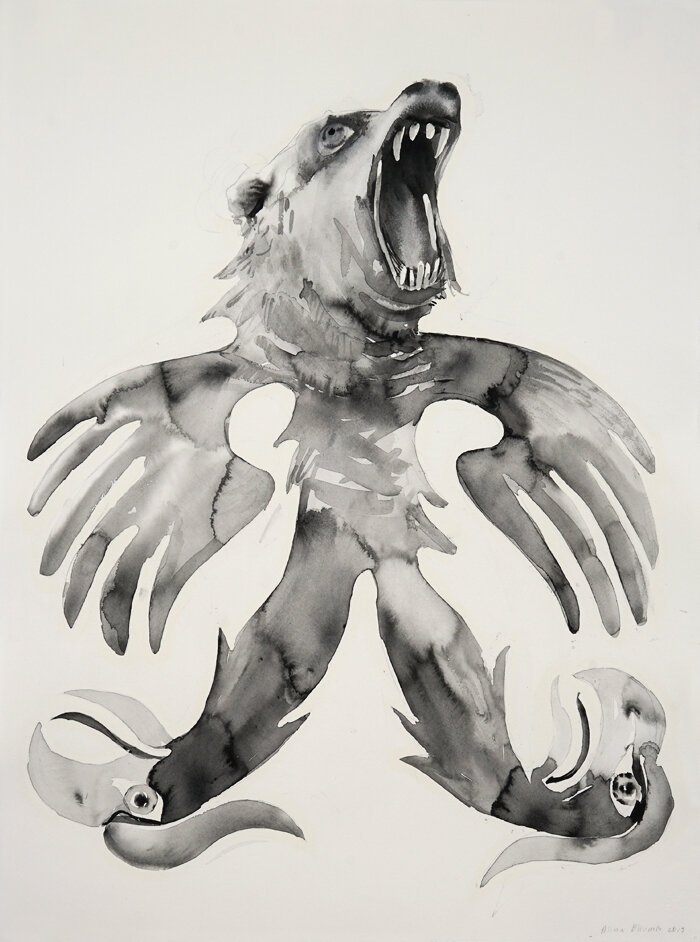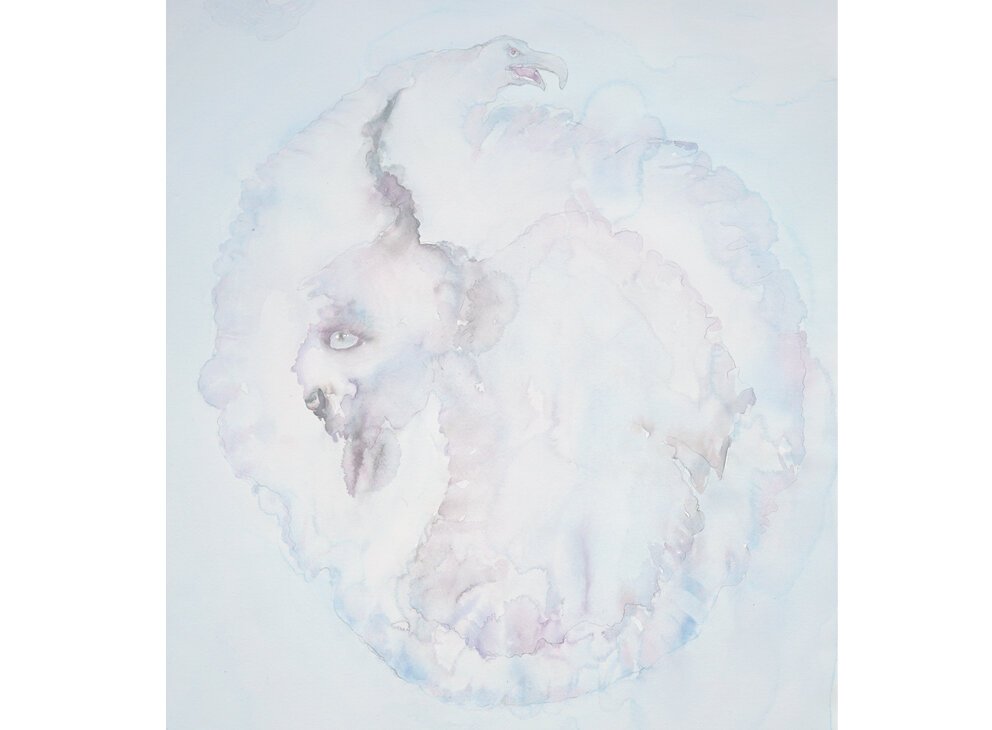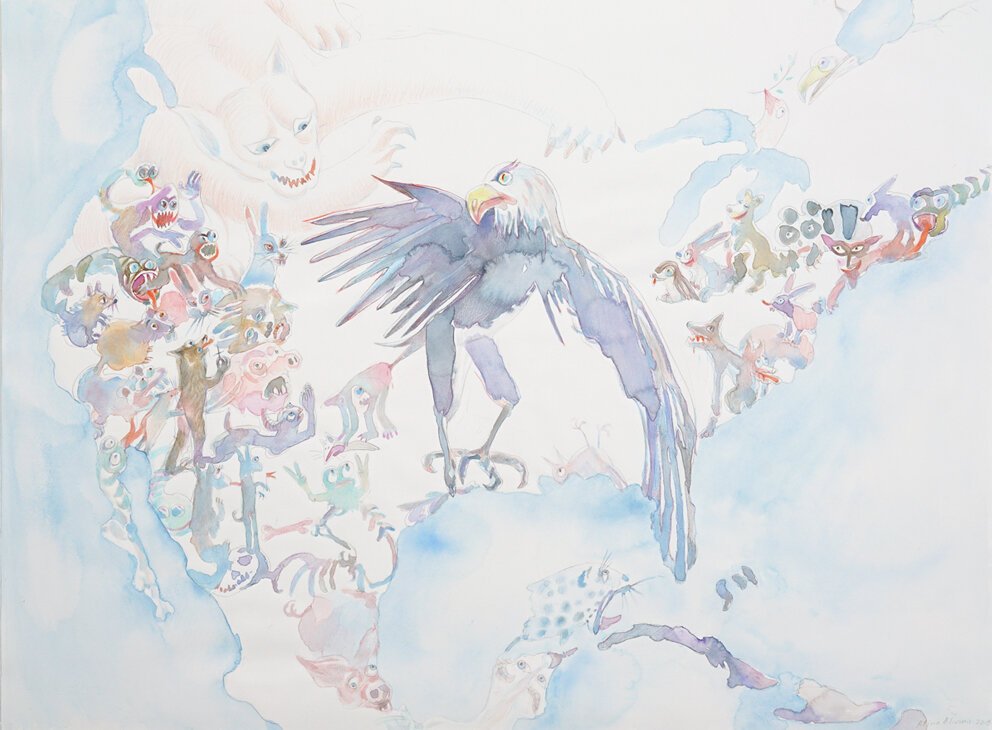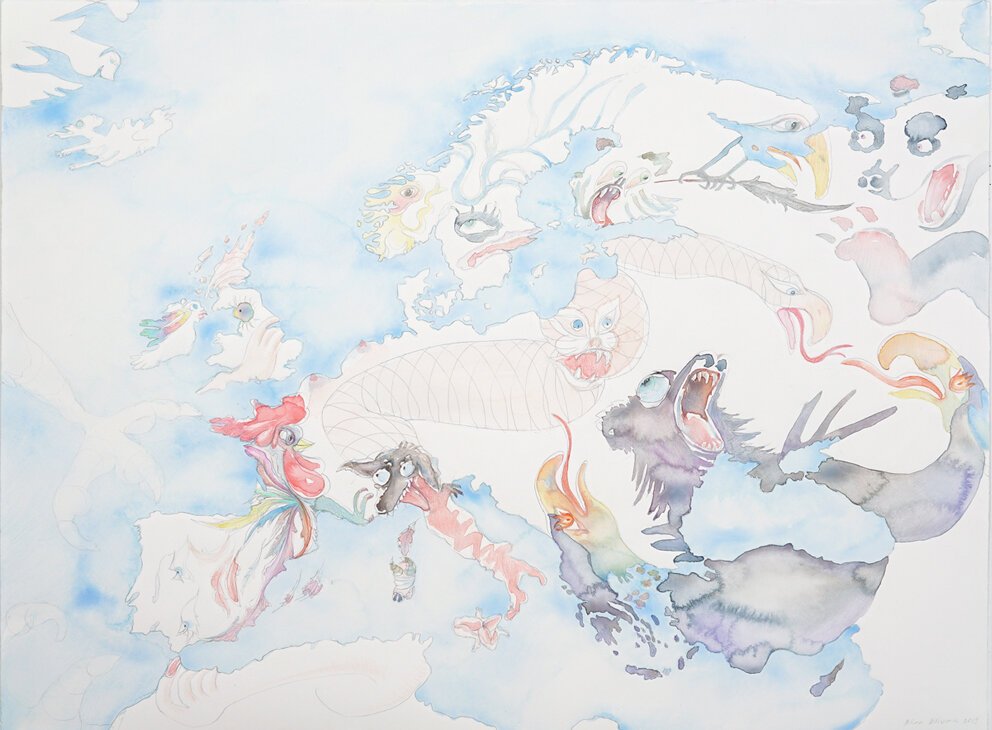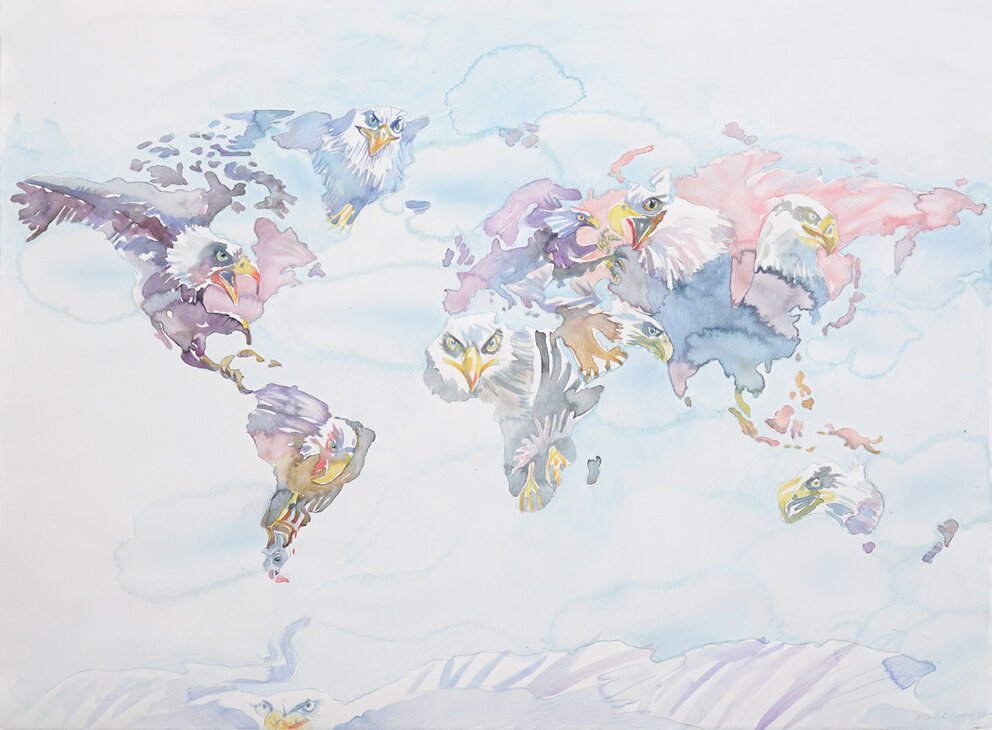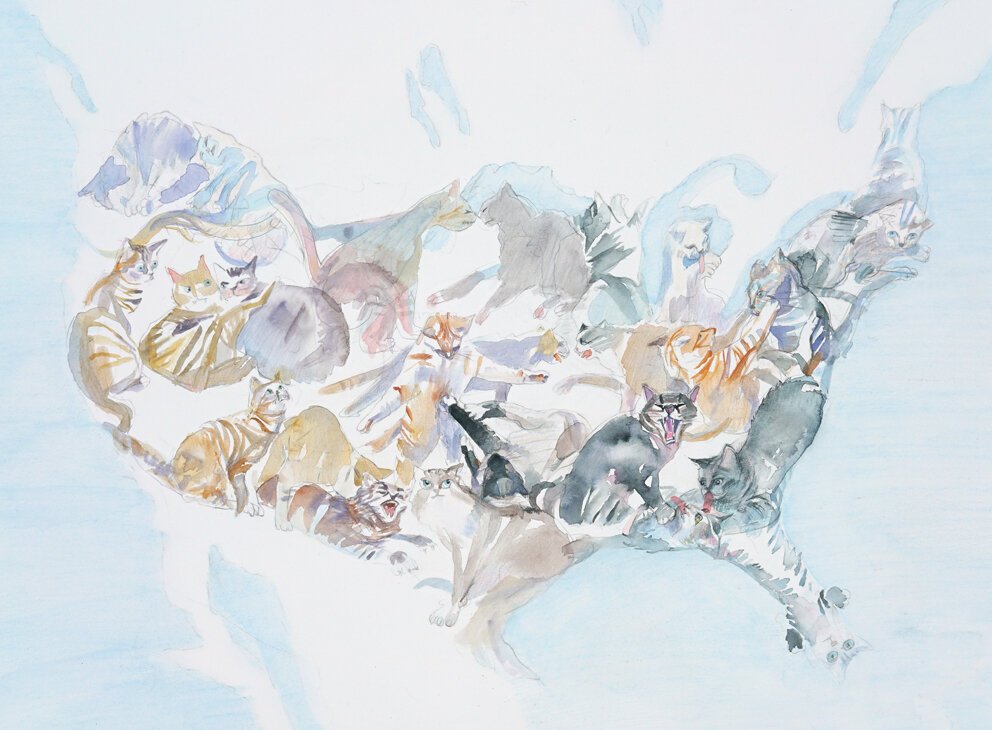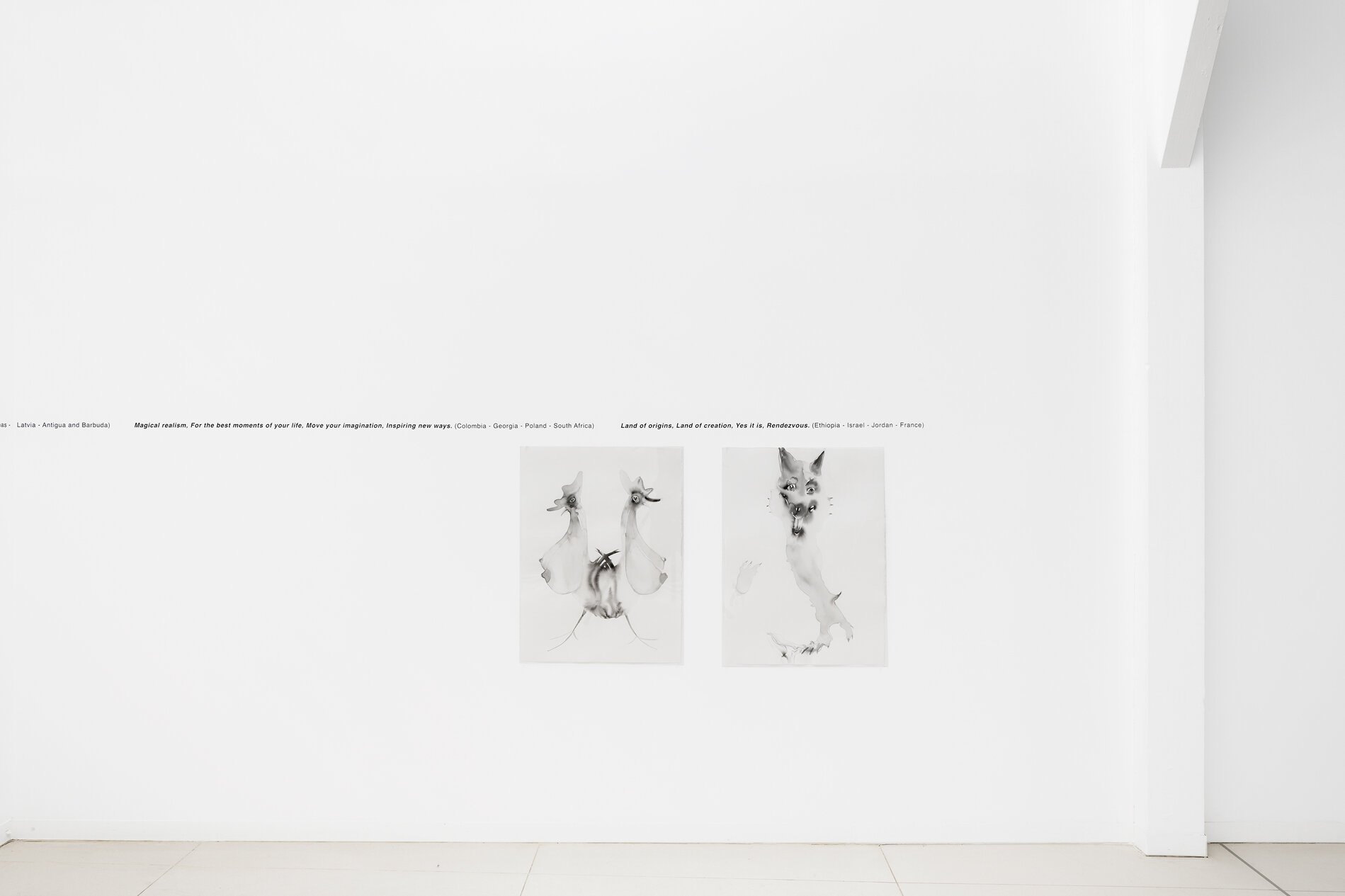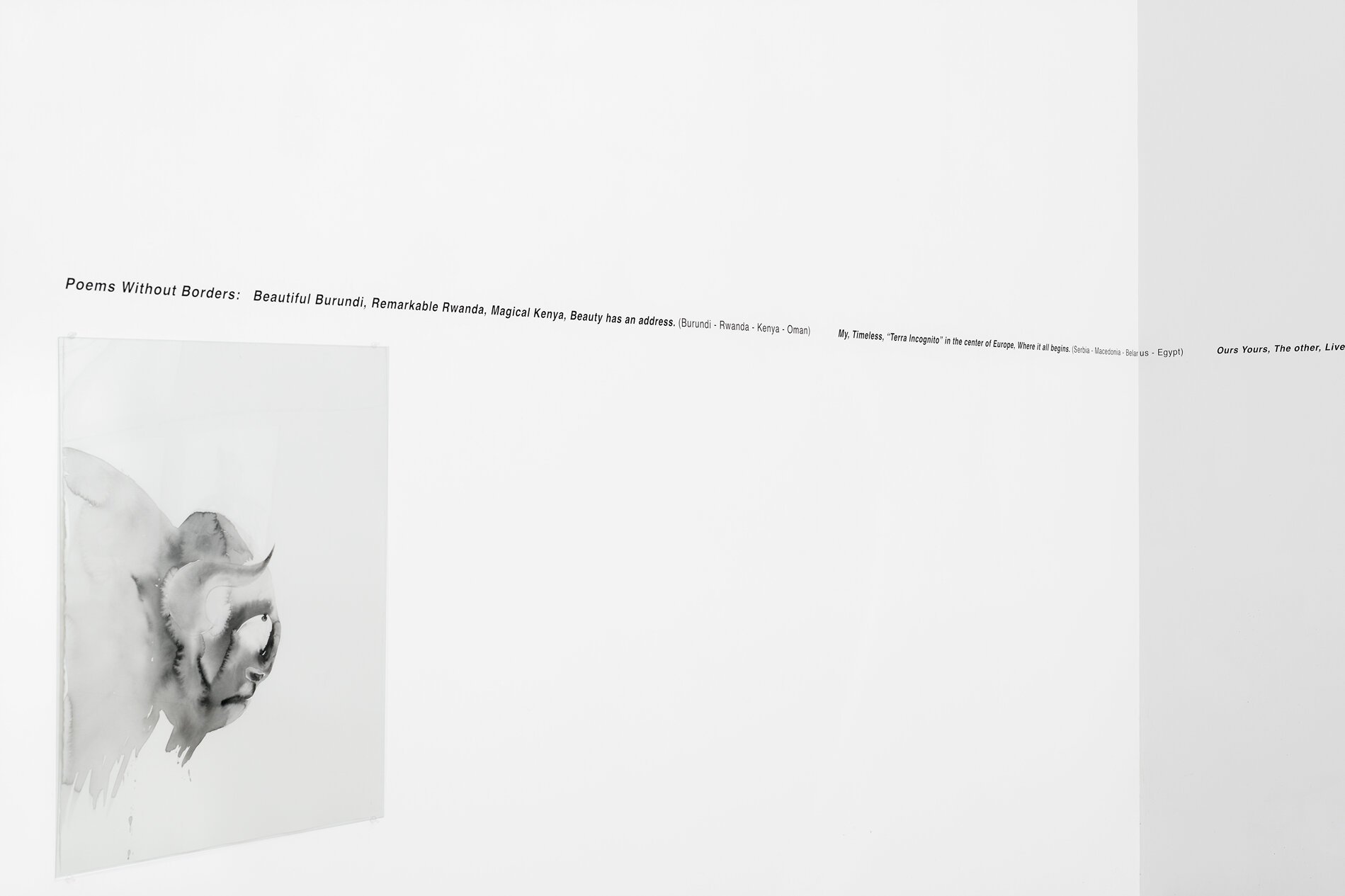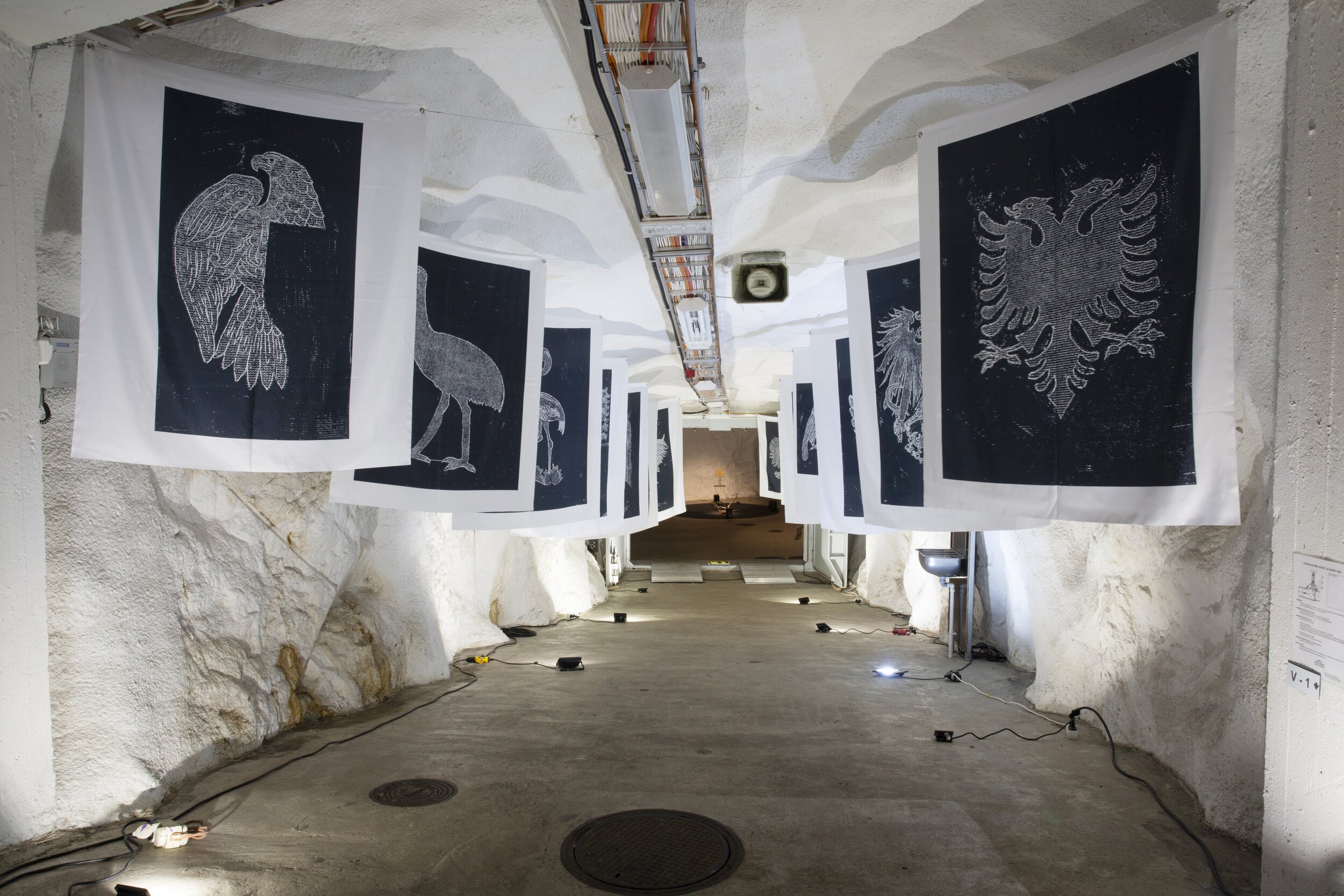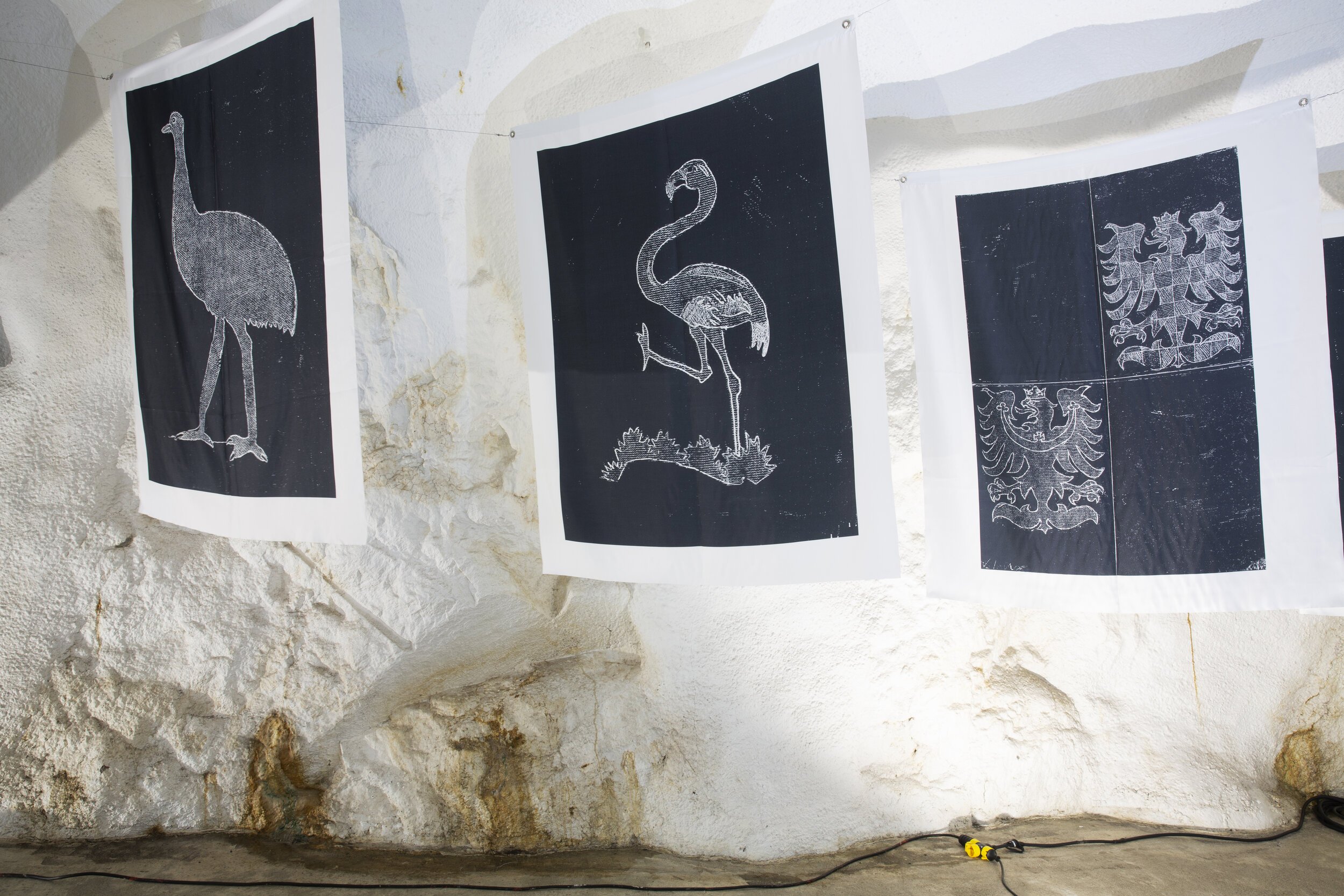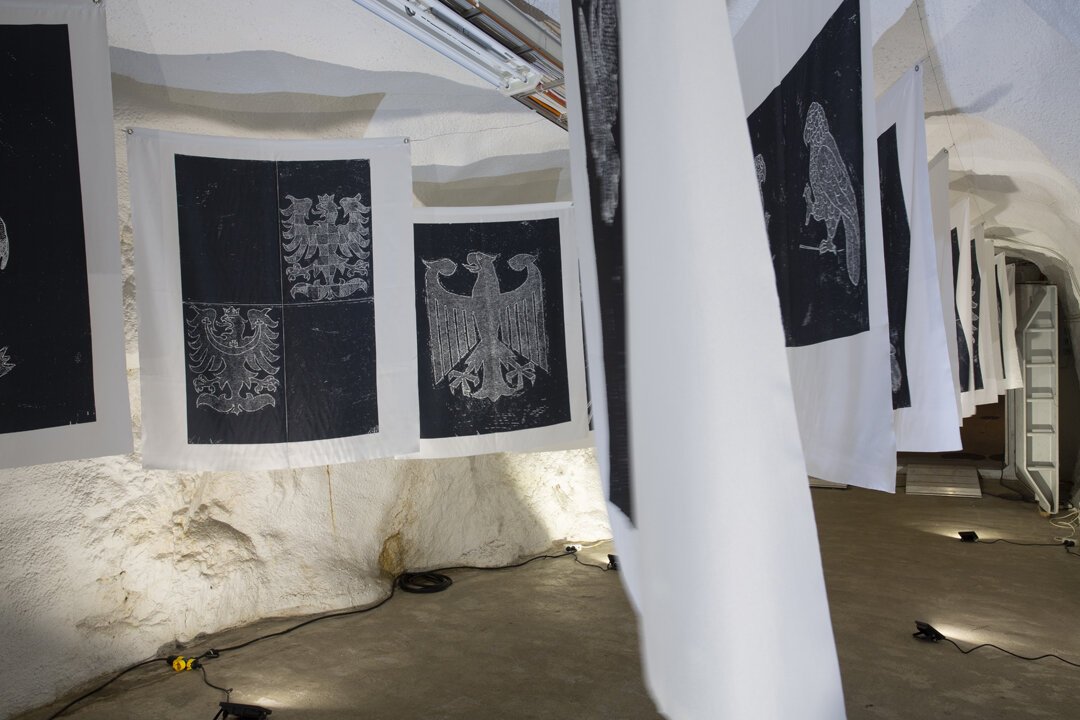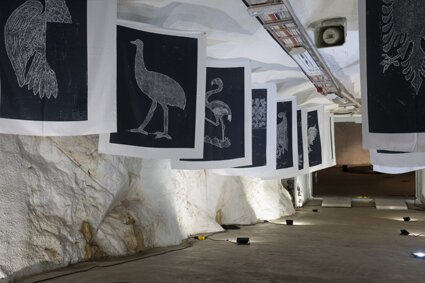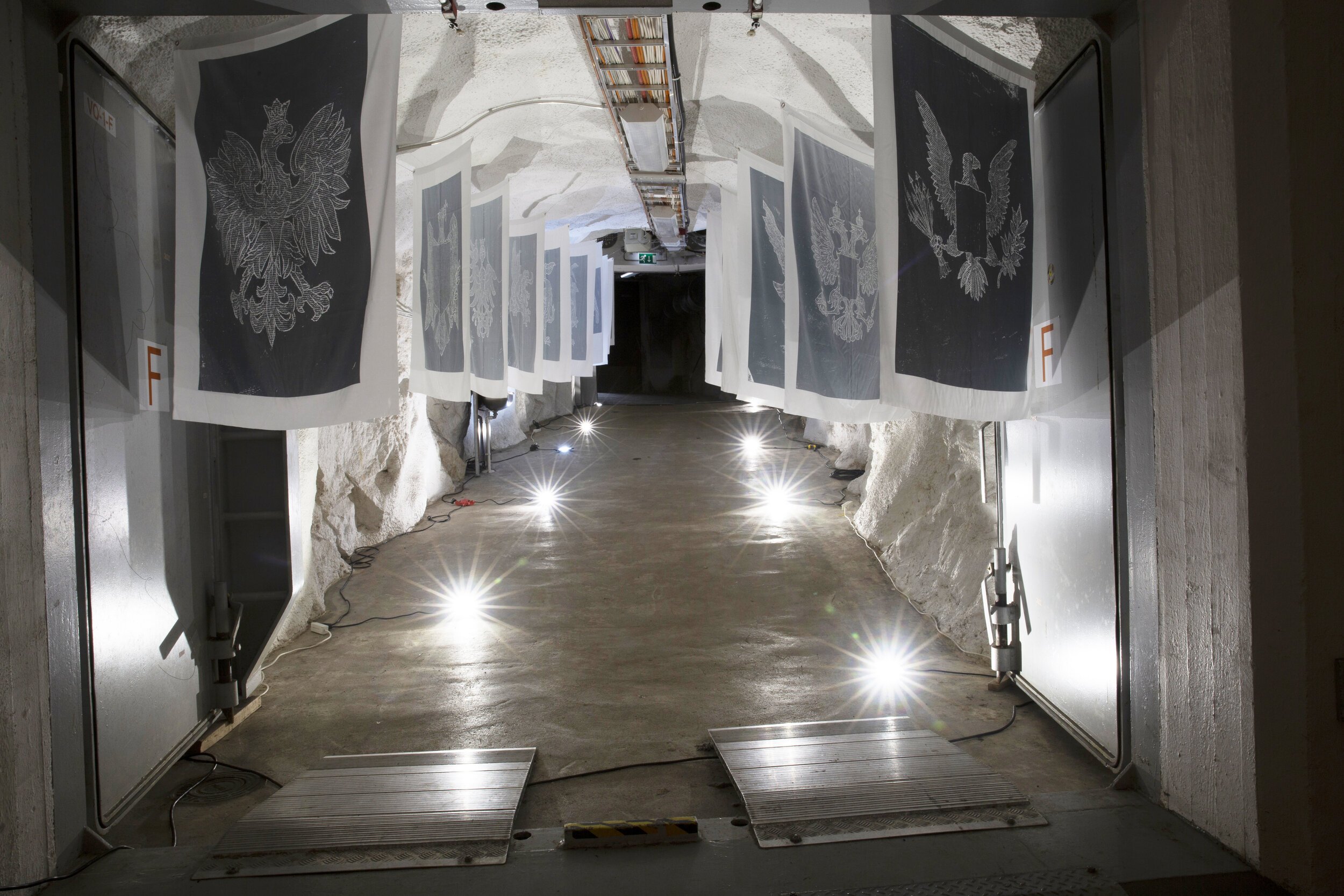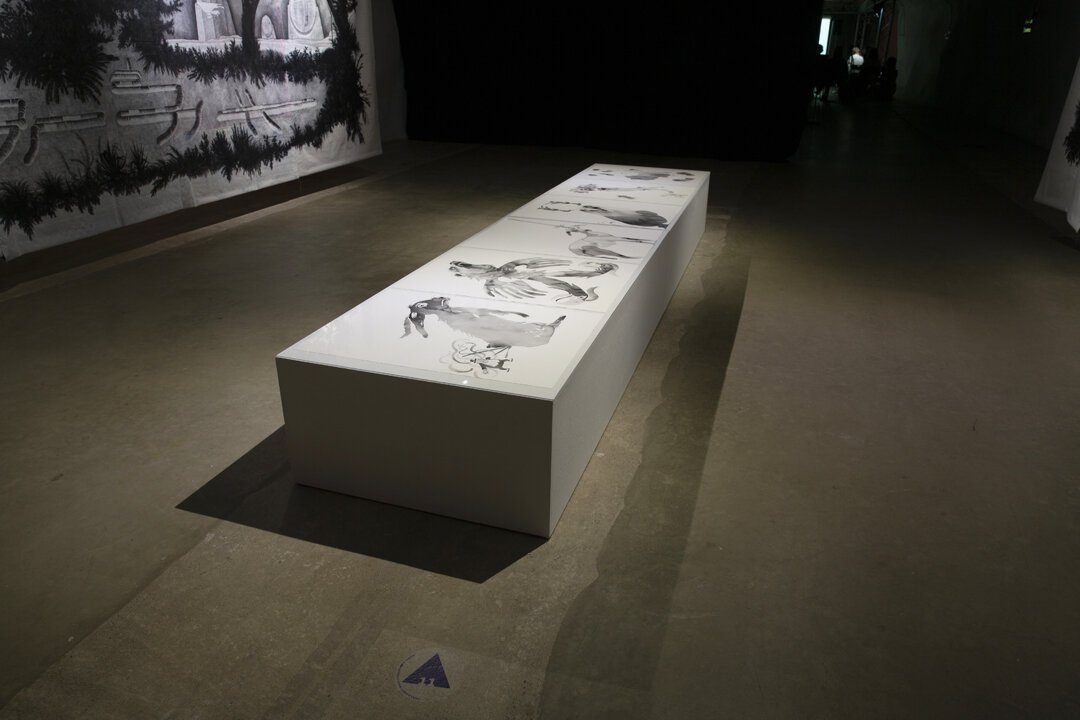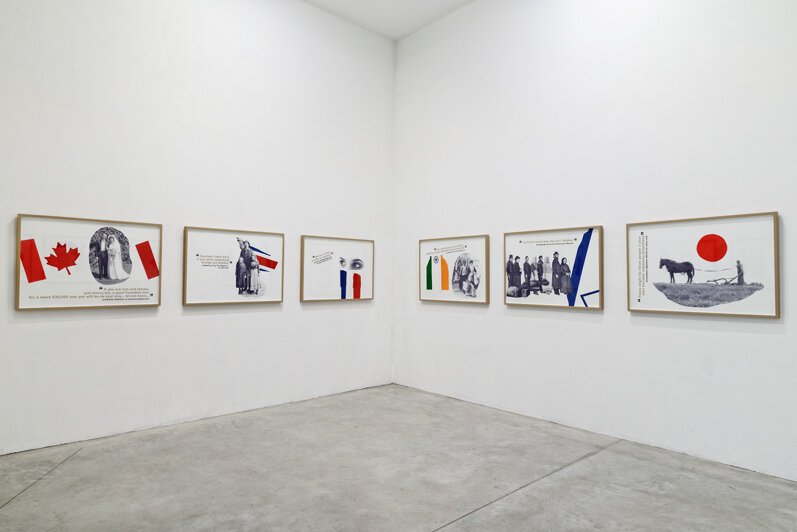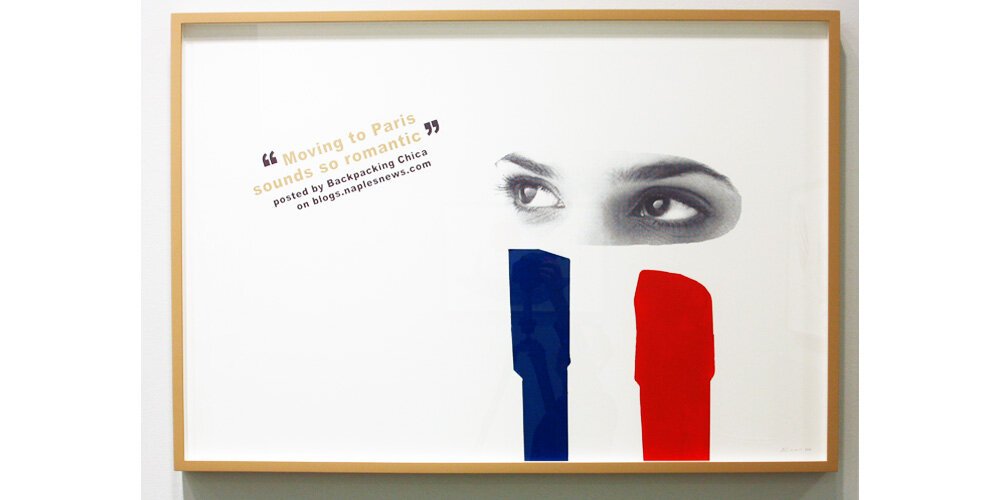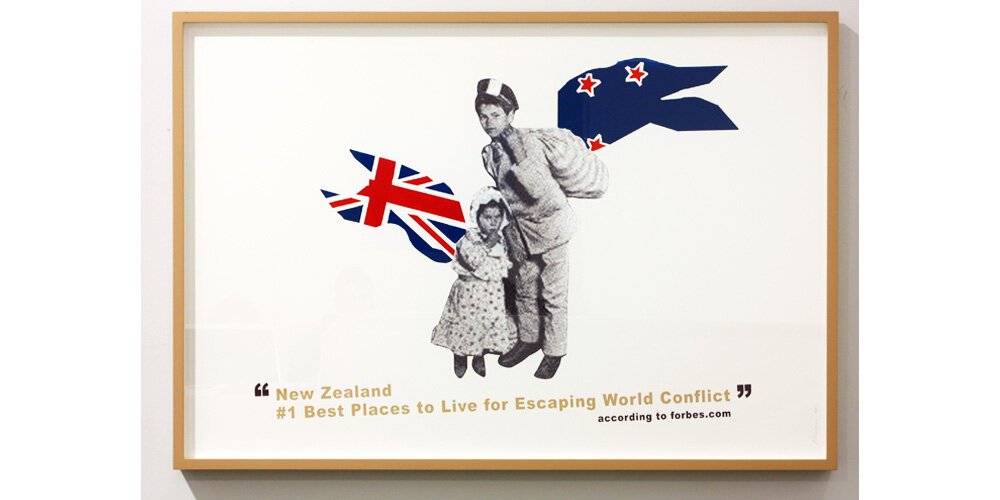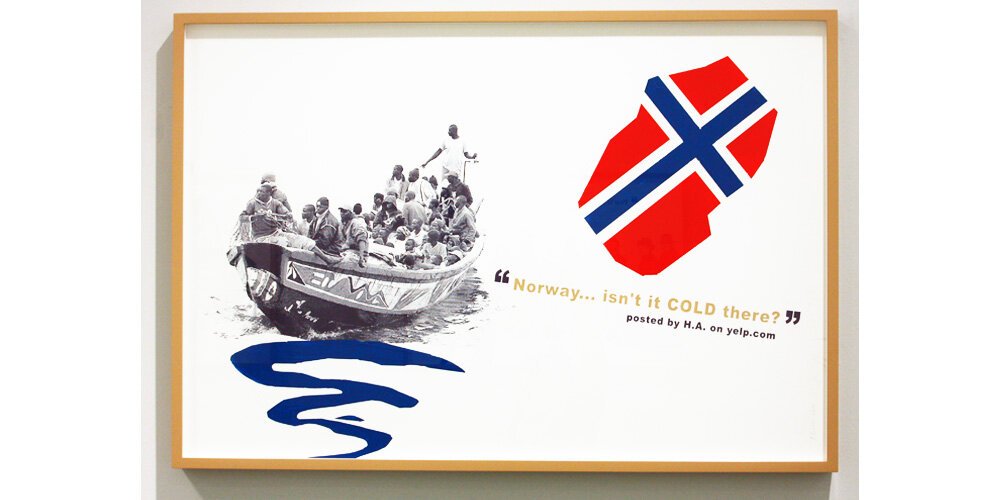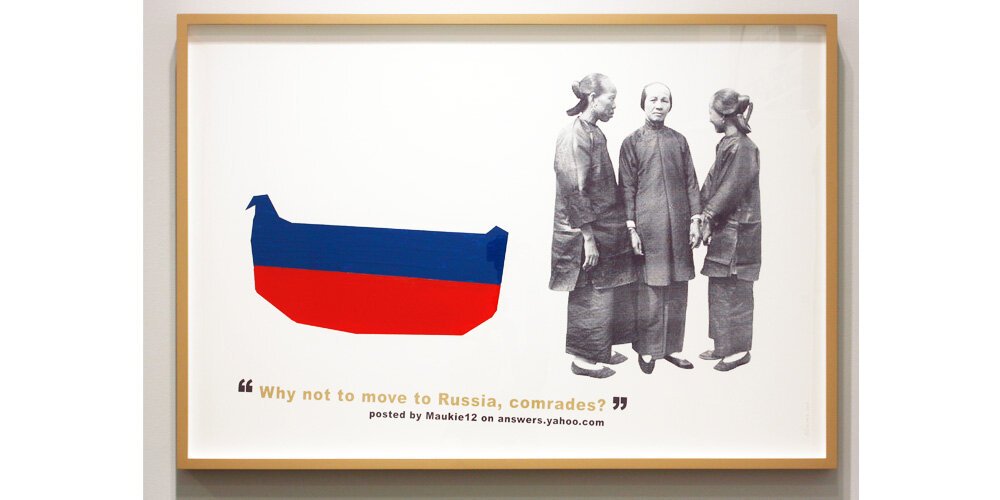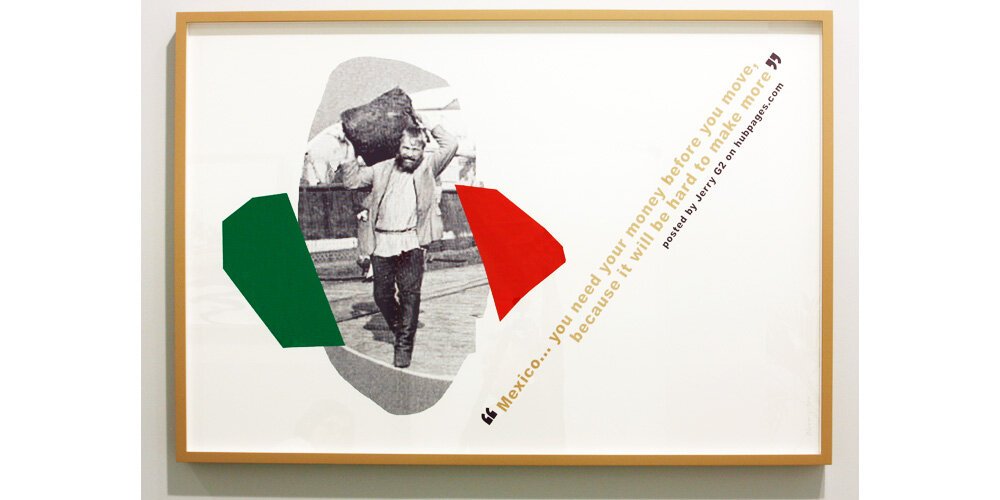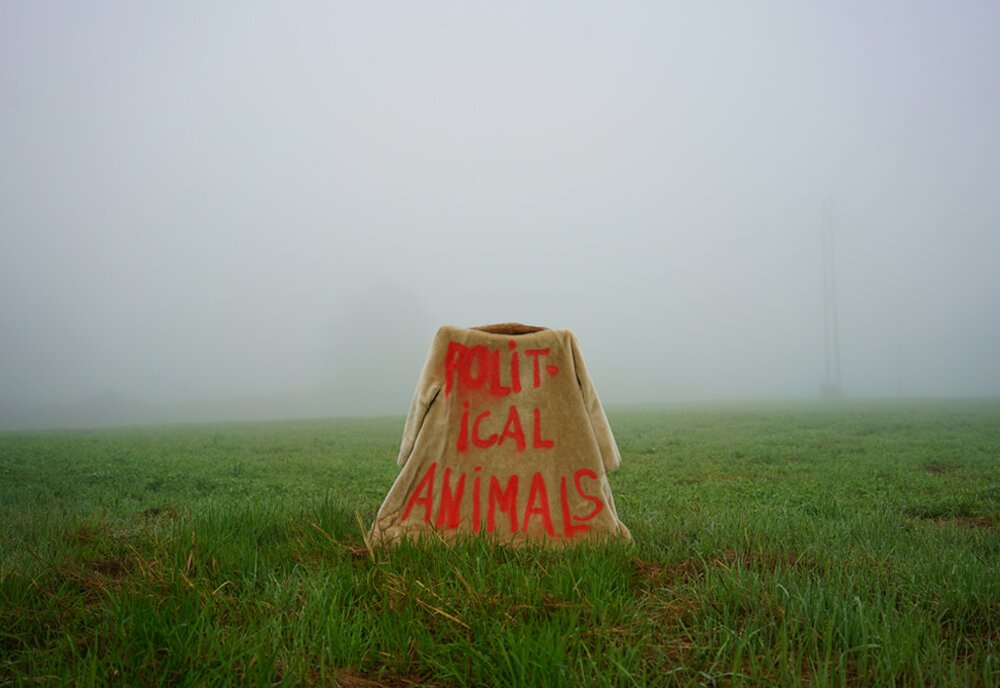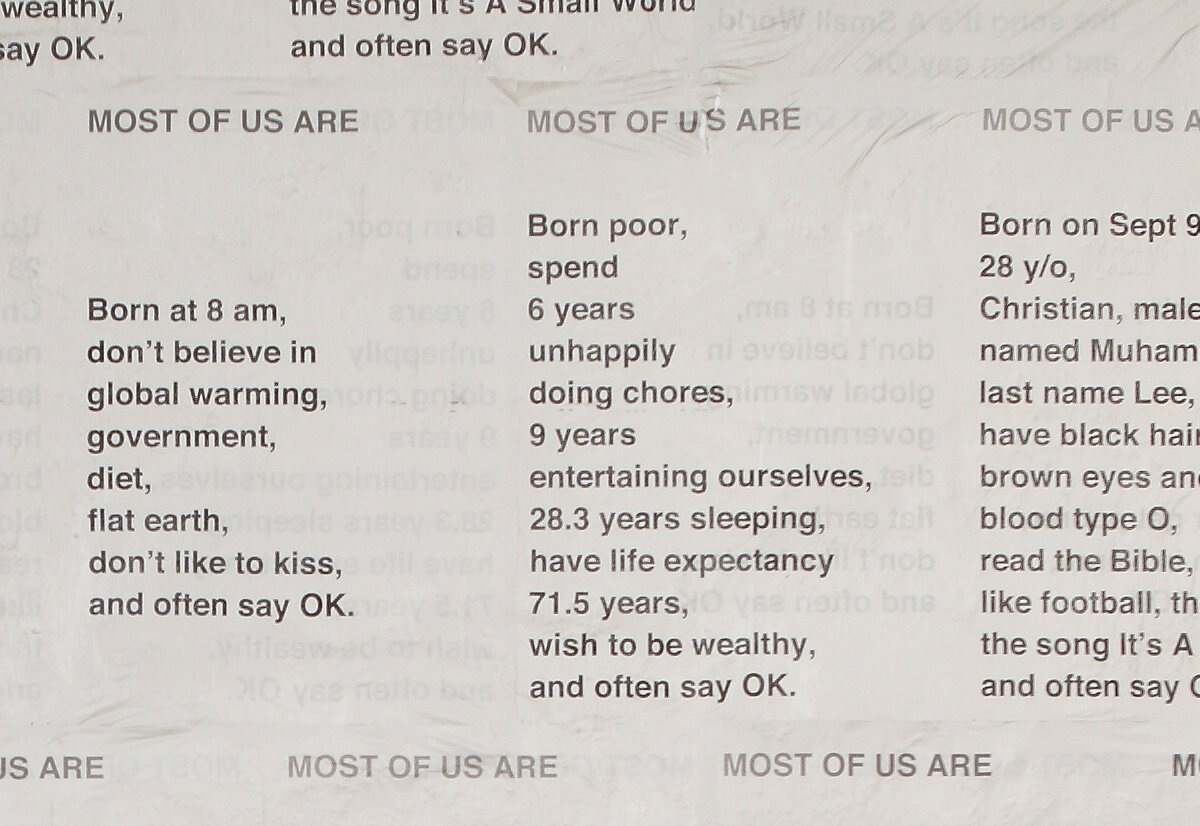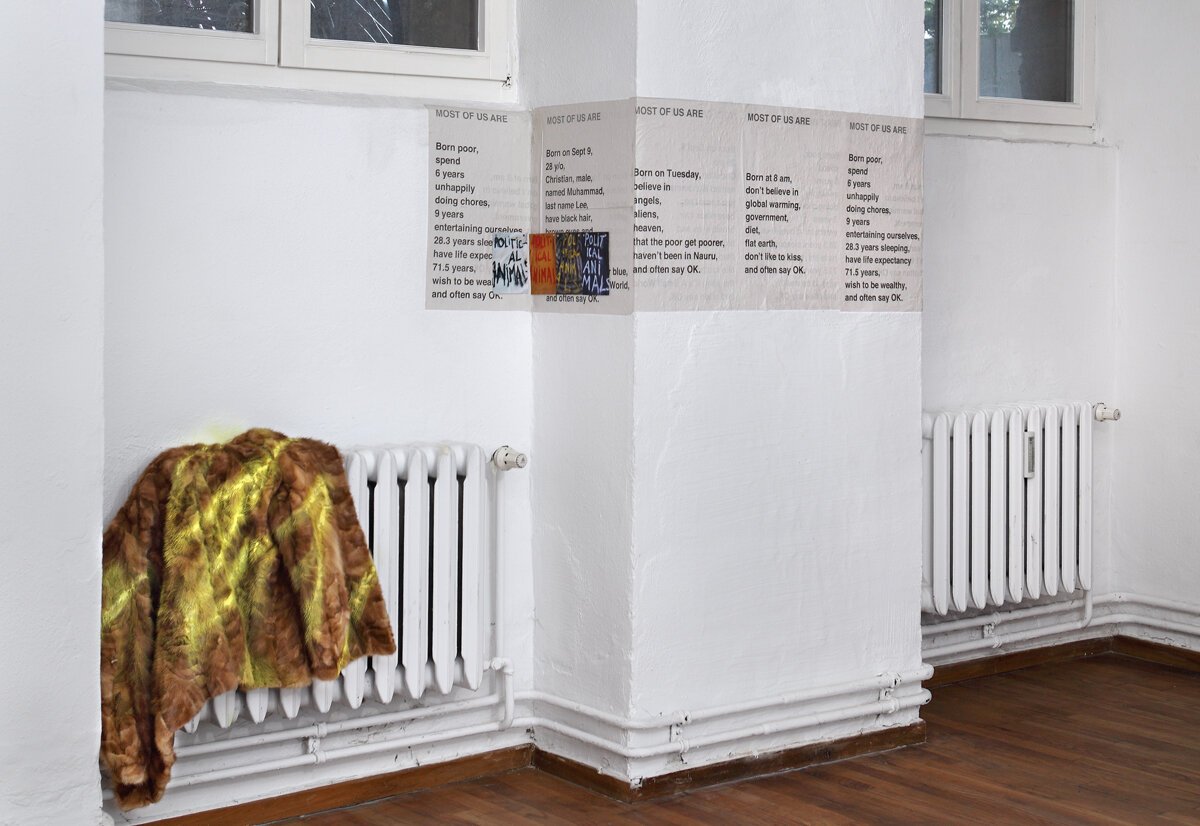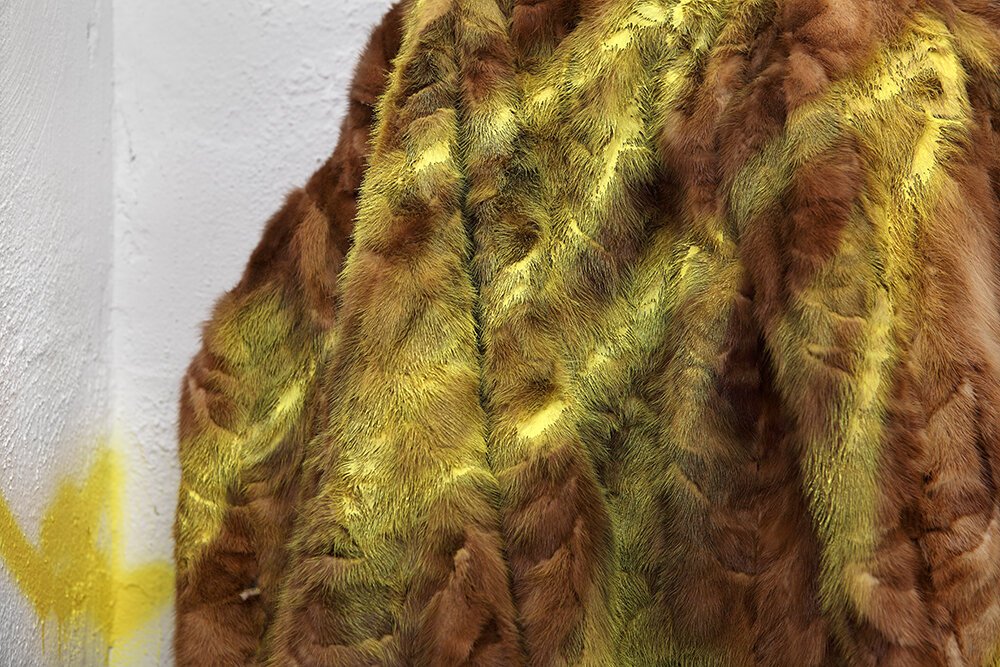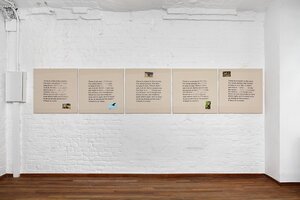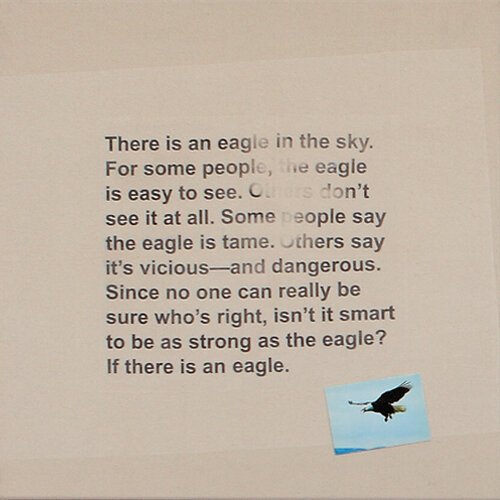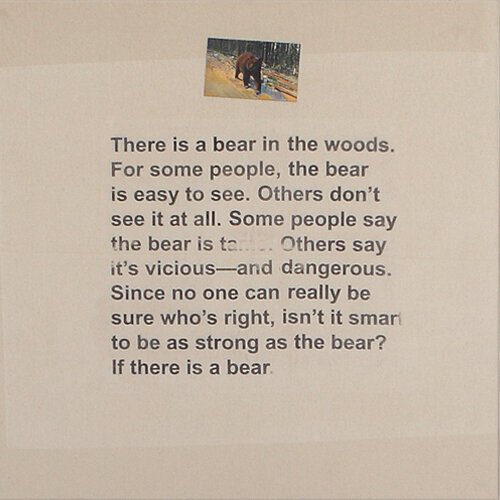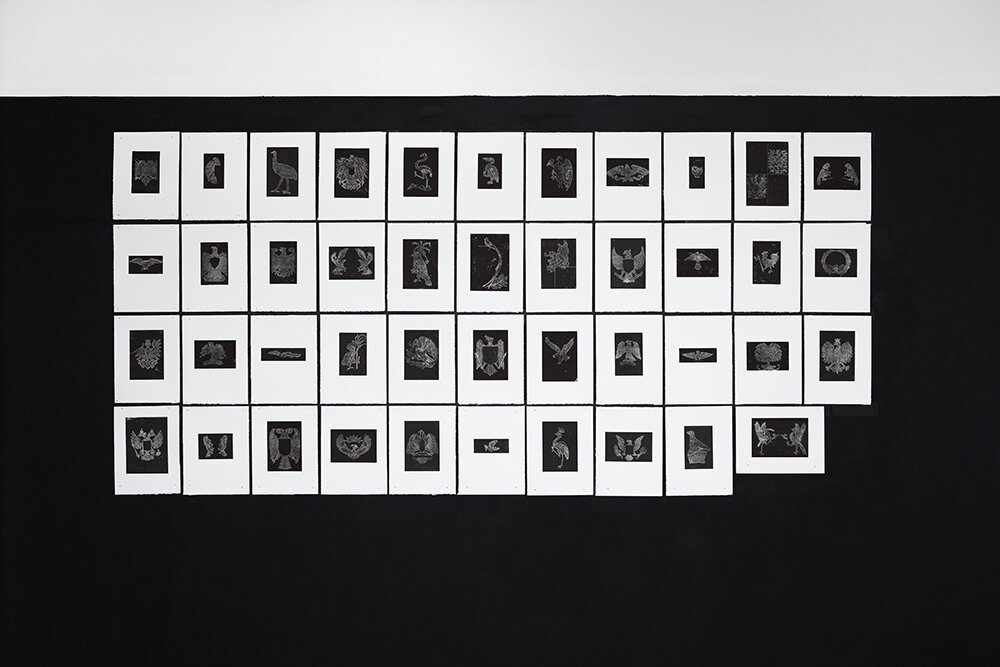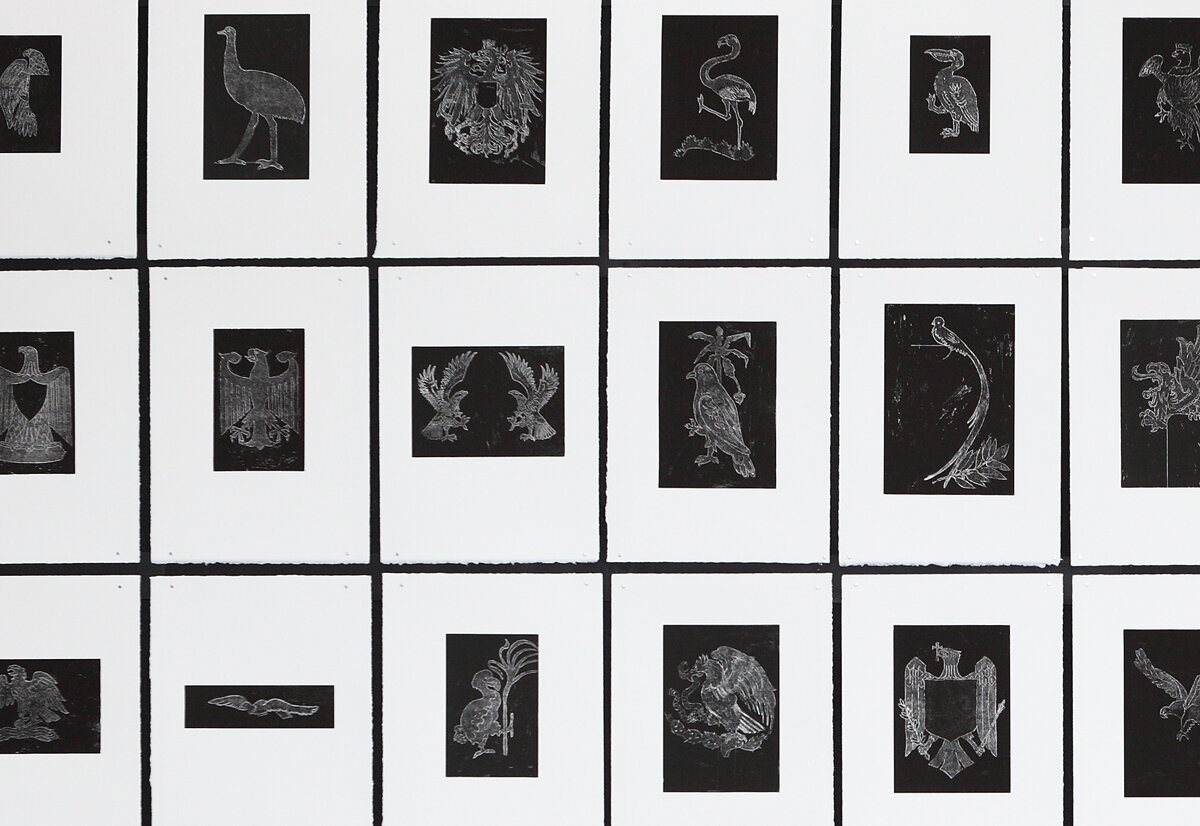For my own part I wish the bald eagle had not been chosen the representative of our country. He is a bird of bad moral character.
-- Benjamin Franklin
When thinking of “Political Animals,” the eponymous title and subject of Alina Bliumis’s exhibition on the iconography and narrative tropes nations use to imagine their communities, I thought, at first, of two things: Aristotle, and my passport. The reasons for the former are bound to the latter, and vice versa; Aristotle coined the term in his Politics, while my passport is proof of my own citizenship. Yet that’s all very abstract, if I were to imagine my passport itself, I’d think of its size, its blue color, and that heraldic image of a bald eagle bearing a shield whilst clenching a set of 13 arrows in one talon, and an olive branch in the other on its cover. Yes, it’s an American Passport. Is there a bird on yours?
Sorry, I shouldn’t have asked you to imagine that, it was rude of me. I have no idea where you’re from, and, logically speaking, it’s a safe bet that people from various nationalities would be reading this—this catalog is published in two tongues after all. Fortunately, Political Animals includes Bliumis’ rueful series of relief etchings on paper entitled Amateur Bird Watching at Passport Control, 2016-17, which abstracts fanciful bird imagery sourced from 43 different passport covers; if you’re up for a hunt, you might find a feathered friend there, or in these very pages. Interpersonally though, there is no way I could pretend to address each and every one of you directly and individually by talking about your eagle… or was it flamingo? Instead, let’s all share another image together; it’s pretty famous, so I hope you’ll be able to fix it: please, for a second, imagine the Oval Office of the White House.
Yes, it’s egg shaped, and the President of the US sits there; oh, god no, please don’t think of the unmentionable current one, instead let’s just think of that iconic desk. You know the one, its wooden, and clunky, and has the same motif, more or less, as my passport on its front. But wait, something is different! On my passport the bird faces the olive branch, a typical symbol of peace, whilst the image on the desk faces the arrows of war. So, which one is it; dose the bird seek war, or does it look toward peace?
The carving on the desk dates from the early 1940s, and the bird’s head was typically turned to face the arrows at that time. In 1945, President Harry S. Truman signed Executive Order 9646, which permanently fixed the eagle’s gaze toward the olive branch as a sign of the county’s dedication to harmony following WWII. Although the figure bares the Latin motto, E pluribus unum (from many, one), Si vis pacem, para bellum (If you want peace, prepare for war) serves as a better metaphor for the intrinsic paradox of this emblem—and is a clear mirror of the history of American relations from (at least) the gunboat diplomacy of Theodore Roosevelt’s Big Stick Ideology—wherein pressure was applied to diplomatic negotiations through the ever present threat of naval force—all the way through the doctrine of Mutually Assured Destruction—a defense strategy between the United States and the Soviet Union which would see each nation build ever larger nuclear arsenals as a form of deterrence; the logic went as follows: if one nation were to initiate a pre-emptive nuclear attack, the other could guarantee an equal retaliatory strike. In this standoff, neither party could advance or withdraw safely, and thus the superpowers settled into a geopolitical equilibrium so bizarre they had to invent a term for that too, the Cold War. As that situation played out internally, the US military establishment found a workaround when their projects couldn’t get the green light during the administration of Dwight D. Eisenhower.
To make a long story short, dubious documents would be “leaked” to the press, which proposed that the Soviet Union was making secret weapons that the United States did not process. The most infamous of which was the so-called “bomber gap,” which alleged that the Soviets built a mythical fleet of long-range jet bombers totaling around 2,500. Whether this was true or not, an alarmed public believed the hype and called on its elected official, the President, to do something about it. In response, Eisenhower fast tracked the U-2 spy plane, which was designed to assess how many bombers the Soviets had—turns out it was only 20—while the US Air Force ordered 2,750 new bombers of its own. Following this media ploy, new and greater threats were created following the same model—the “missile gap,” for example, simply exchanged fictive bombers for fictive intercontinental ballistic missiles following the launch of Sputnik. This fearmongering dynamic continues to affect US politics; in order to not look “weak,” politicians, generally Republicans, often trumpet defense spending over domestic issues that might better serve the people. These politicians are known as “hawks,” but let’s turn strategy round in a truly Machiavellian manner: can the people by pacified, and thus ruled over more easily, by cynically scaring them into compliance through the manufacture of an existential enemy “other”?
In 1984, the sitting President of the United States, Ronald Reagan, was up for re-election, and his campaign released a slew of negative television commercials; the most famous of which features a grizzly bear roaming around on a mountain top that comes to a stop in front of an everyman character. A coded message in voice over implies that the US requires a strong leader that could stand up to that “bear” should it attack. The ad doubled down on the jingoism Reagan had banked on in his 1980 electoral victory, particularly the slogan that his administration would “seek peace through strength,” and his own escalation of the Cold War arms race during his first term. Even though the Soviet Union, or the “Evil Empire” as Reagan had nicknamed it, was then on the brink of collapsing under its own weight, this narrative helped Reagan sweep 49 of 50 states in the arguably greatest presidential election landslide in American history. Teasingly self-aware of its manipulation, the ad curiously concludes with the line “if there is a bear.” Like the bomber gap, or the missile gap, the predator analogy might simply be a vehicle open to various referents as long as the “us” verse “them” formulation holds—that is, if there even is a “them.”
By way of satire, this operation is dished out ad libitum by Bliumis in her If There Is A Bear series, 2018, which appropriates the Reagan advert transcript, but then replaces the titular bear with other animals that each imply other nationalities respectively, i.e. “There is a Panda” (read: China). Collected and juxtaposed together, this set breaks the message down into its pure rhetorical form to demonstrate that it, like “policy by press release,” is simply a form of style over substance.
As noted, the exhibition’s title, Political Animals, is borrowed from Aristotle; however, instead of meaning, as Aristotle did, that we build society by practicing good social relation with one another in organized establishments called cities (polis), Bliumis mockingly takes this expression at face value through a comic, yet productive form of literal mistranslation by focusing the use of birds, bears, and so forth, in political theater. Regardless of biology, states divide the world into two types of fictive persons: their citizenry, and everyone else. So as to keep this exclusionary set-up under control we had to invited something bestial, but sadly, something all too human: the police. Although boarders are themselves fictive, try to cross one without your identity papers. But really, what is identity anyways? I mean if your documents are expired, does your name do so well? Or perhaps, your height and eye color vanish in a puff of smoke, poof!
Identity is derived from the Latin word for “sameness,” idem. In the line of questioning above, the sameness sought is simply one of physical continuity, and not some idea of shared desire, history, or similar narratives that actually lend us our humanity. In addition to musing on birds and bears, Political Animals hosts a series that queries our species directly. Entitled Most Of Us Are, 2018, this set of ink and graphite pencil works on canvas link geometric construction drawings of neutral bodies next to a list of curious, reductive, and generally illogical data points, i.e., most of us are born at 8am—I wasn’t, were you? Like her other jibes, Blimuis’ principle here is the same: take a form, repeat its permutations to a point of absurdity, and ultimately lay bare the totalizing bureaucracy of procedure.
Thinking back to my passport, maybe, E plurius unum (out of many, one), isn’t so bad after all; while it is meant as a metaphor for the total population blending into one uniform body, it’s based on a line from the poet Virgil when discussing how to make an ancient form of pesto by combining cheese and herbs in a single pot. The use of this motto comes from the very early days of my republic, and I wonder if the framers of the Constitution remembered this quasi-irony when they paradoxically used the royal “we” to start that document. Who is to say, but we’ve never quite figured out just who we are. Instead of checking off our associations, let’s just discuss the majesty of birds over a nice turkey dinner.
